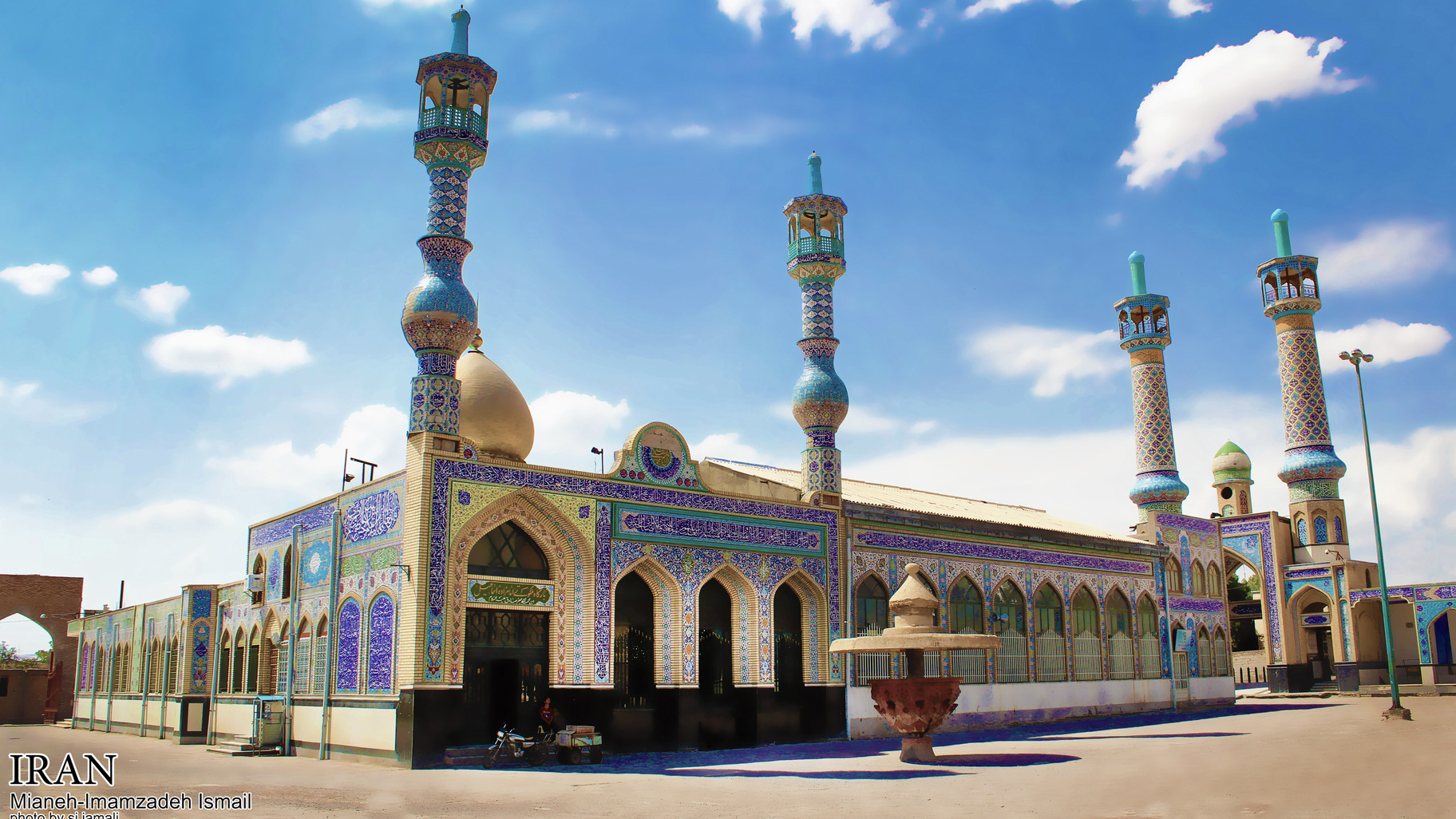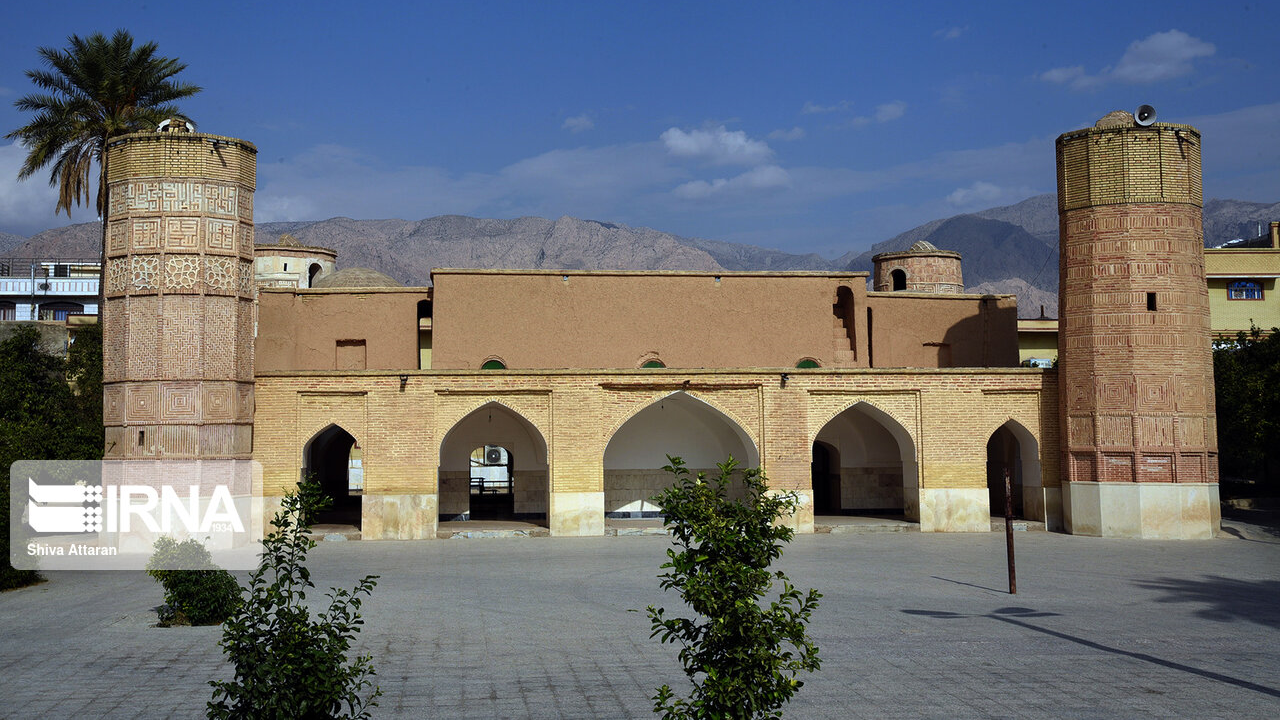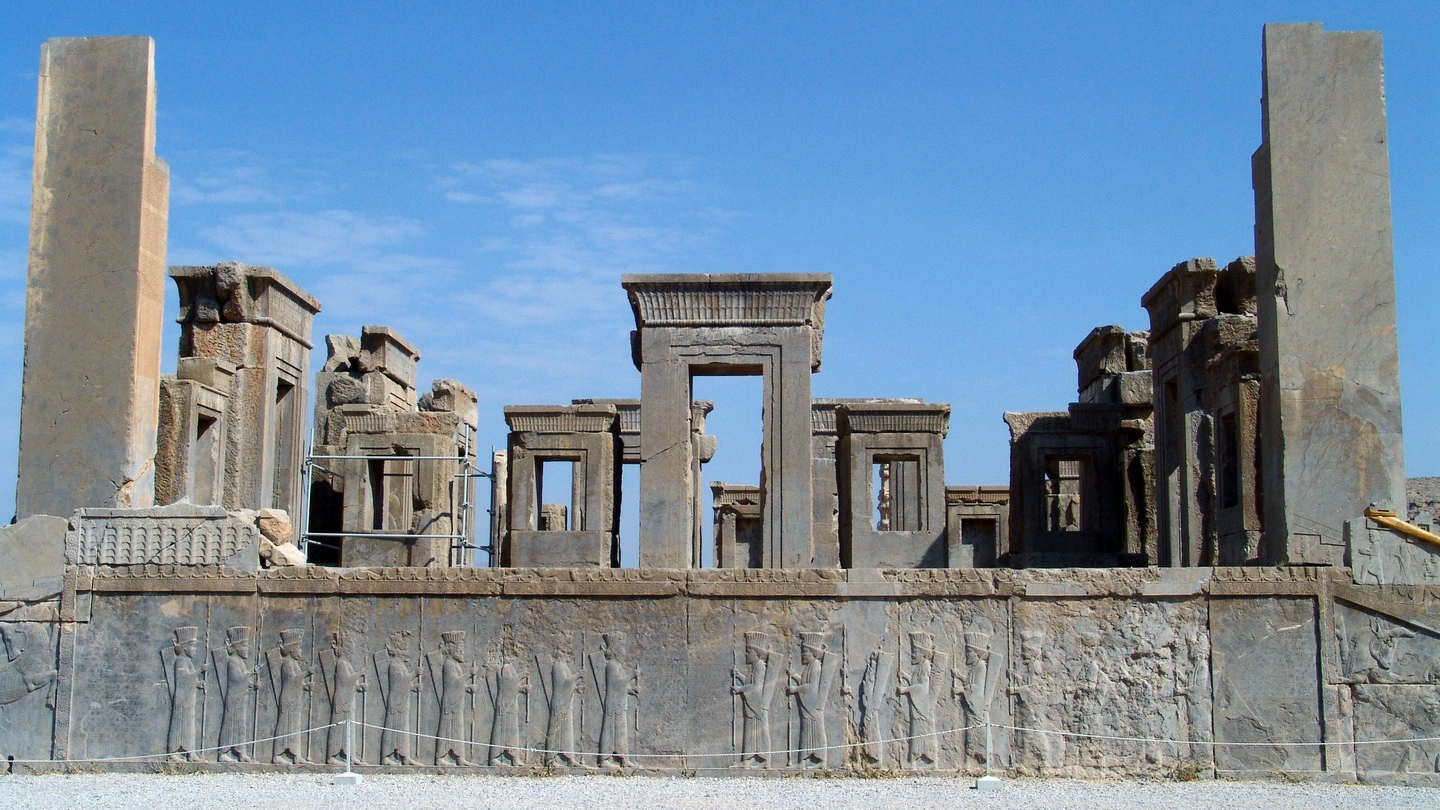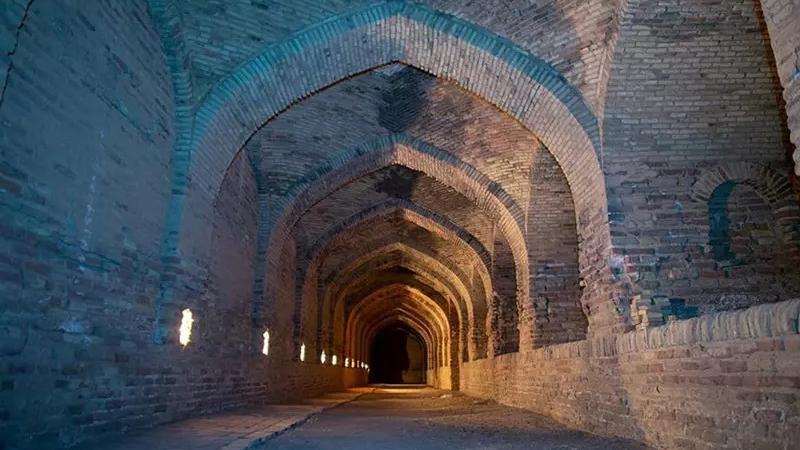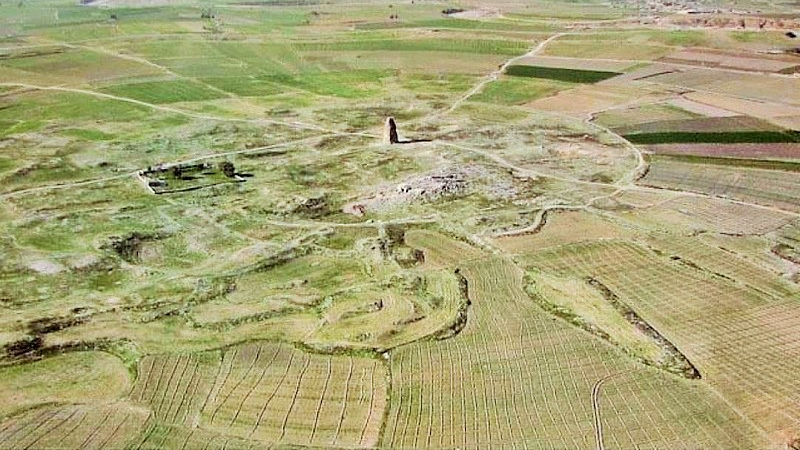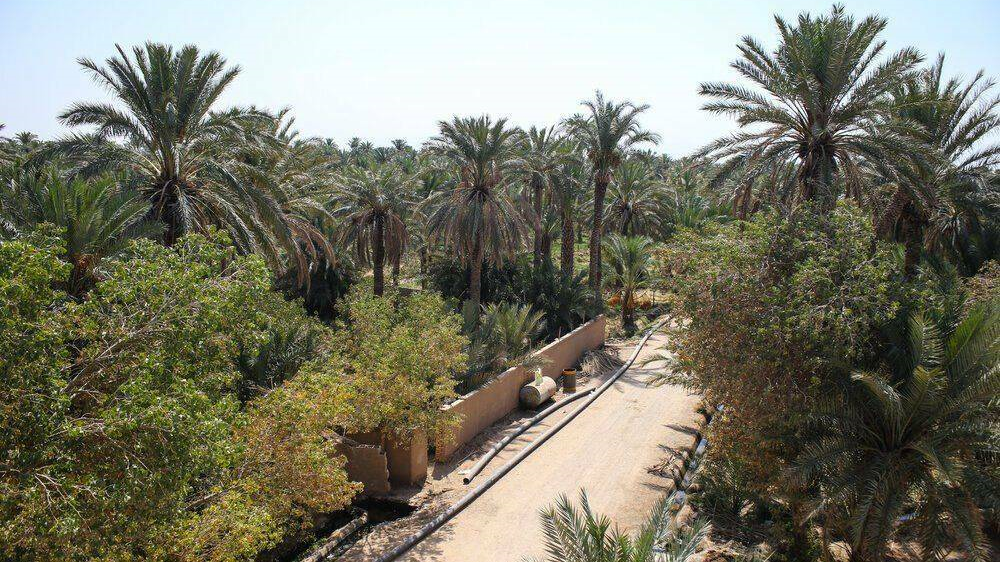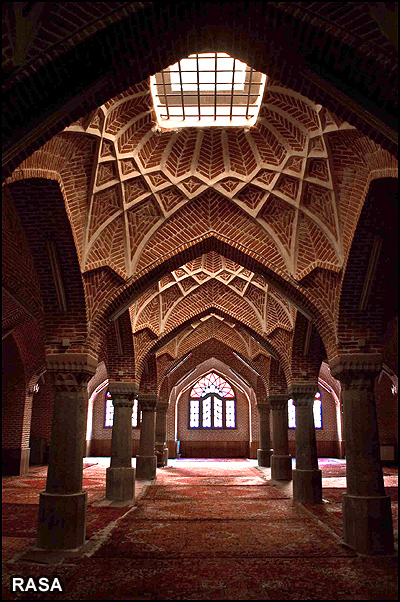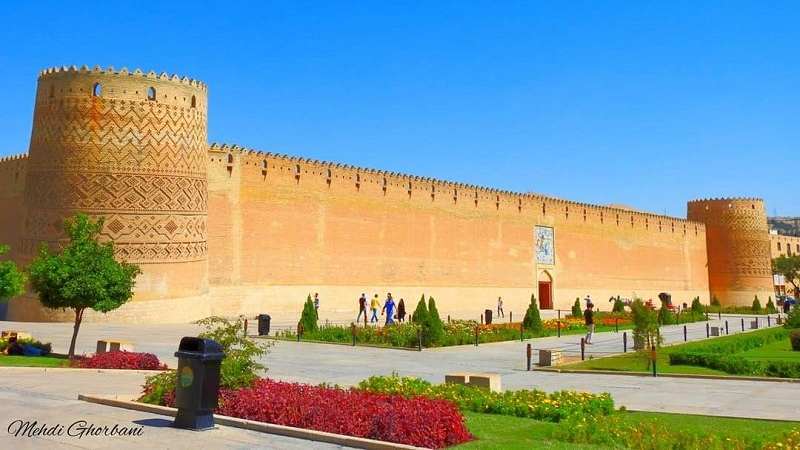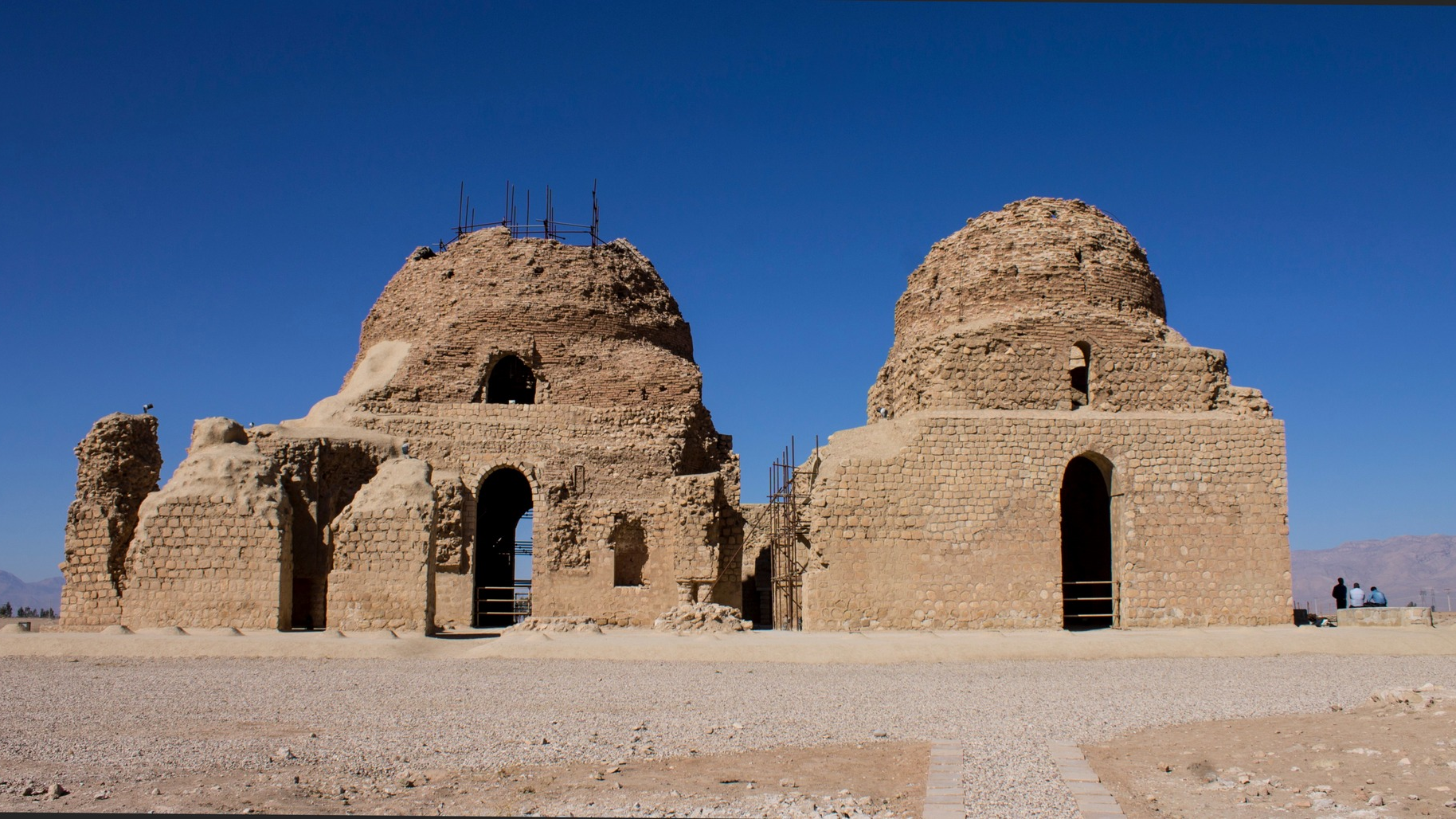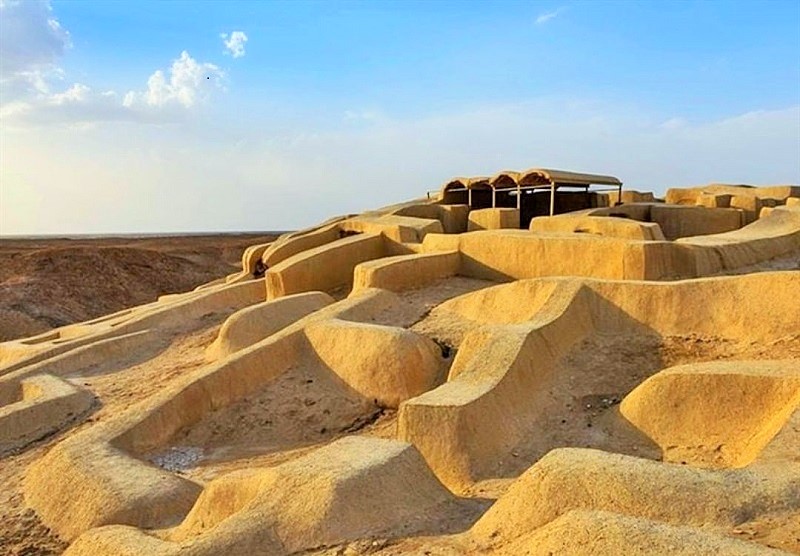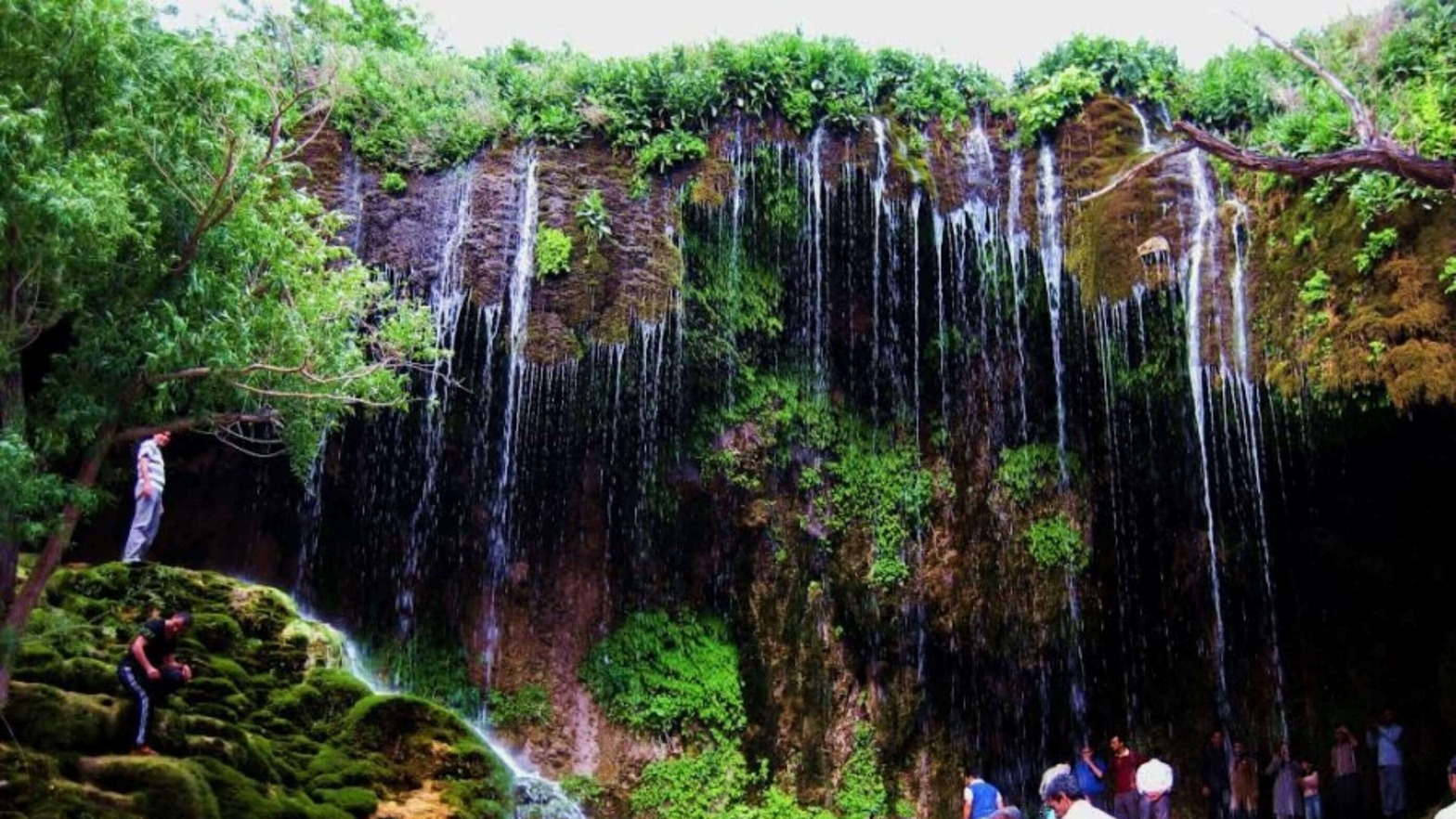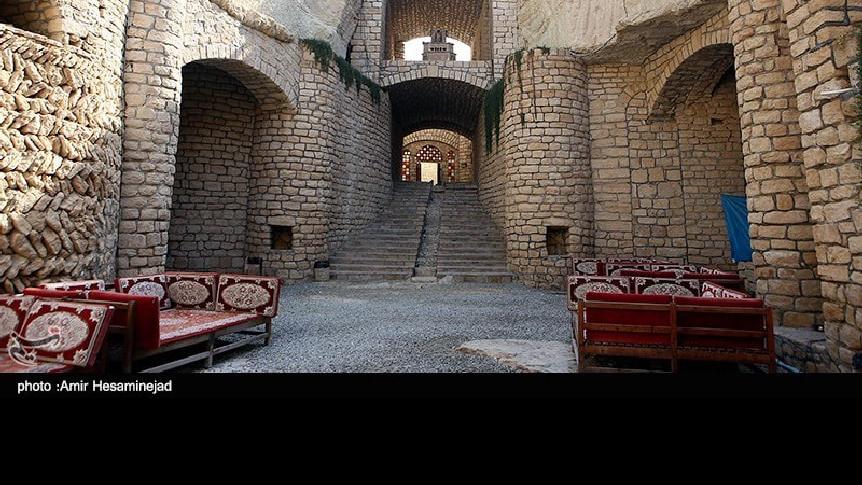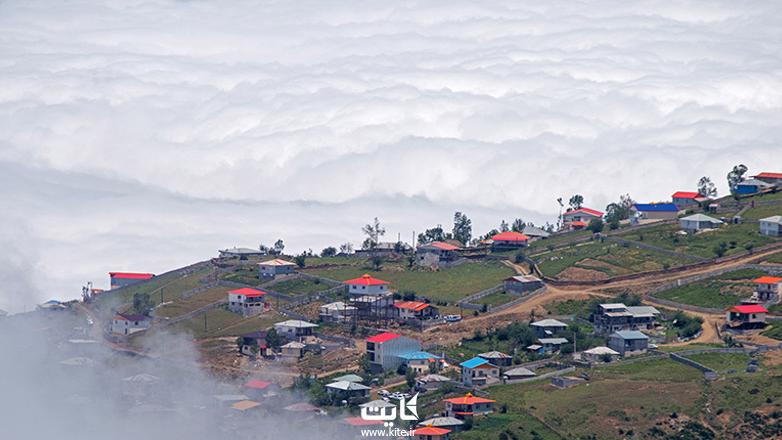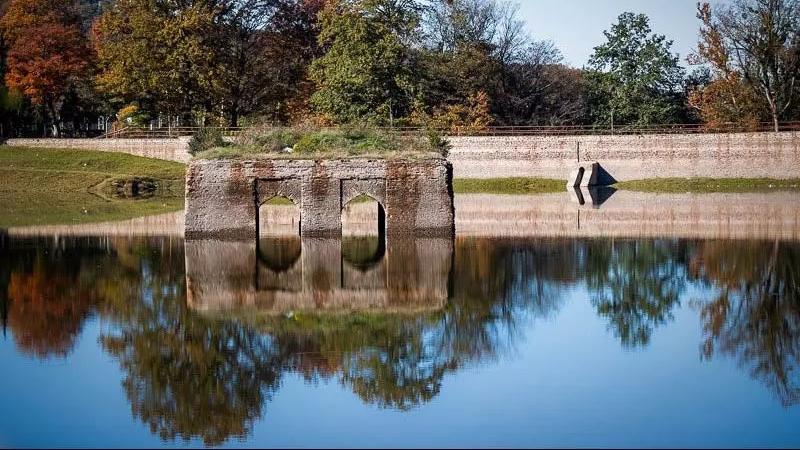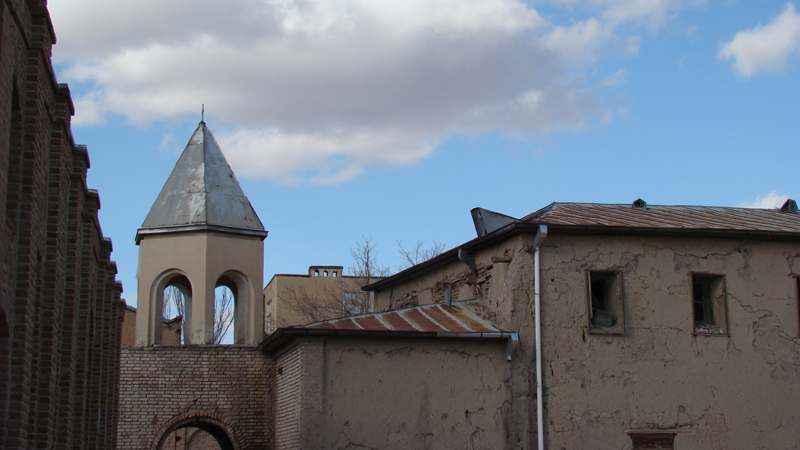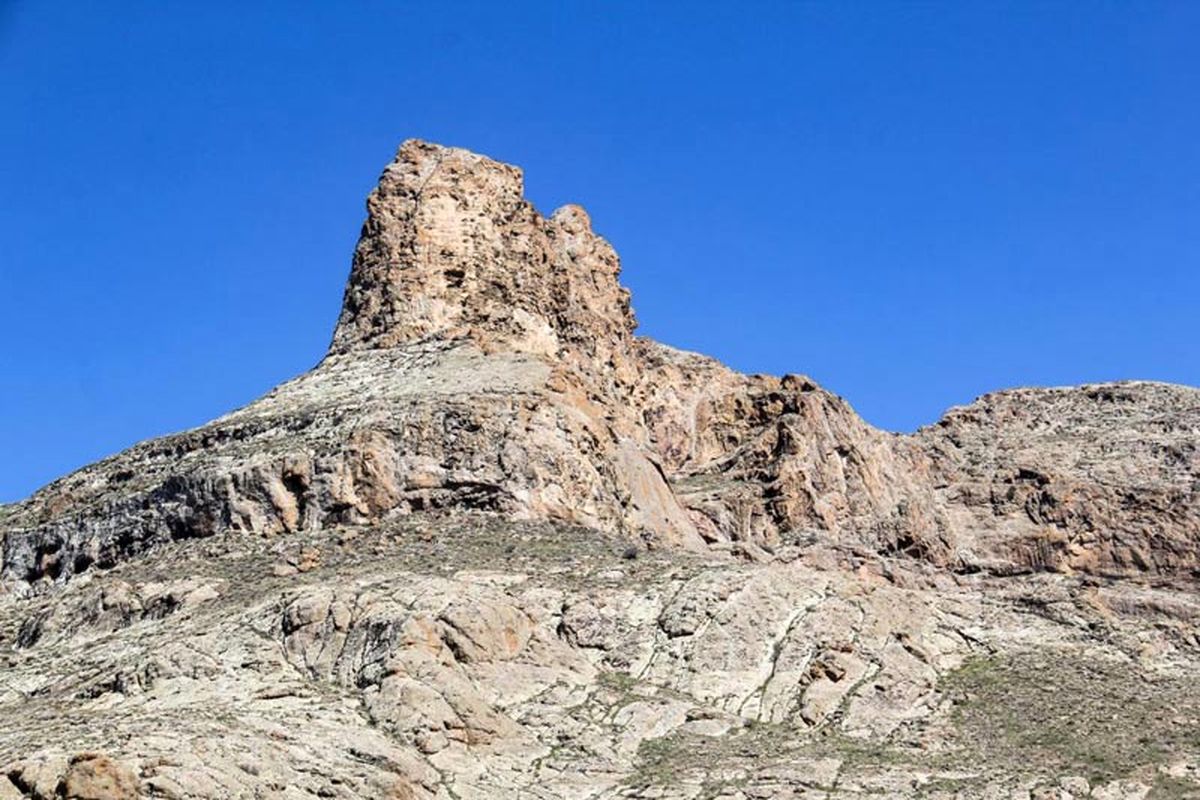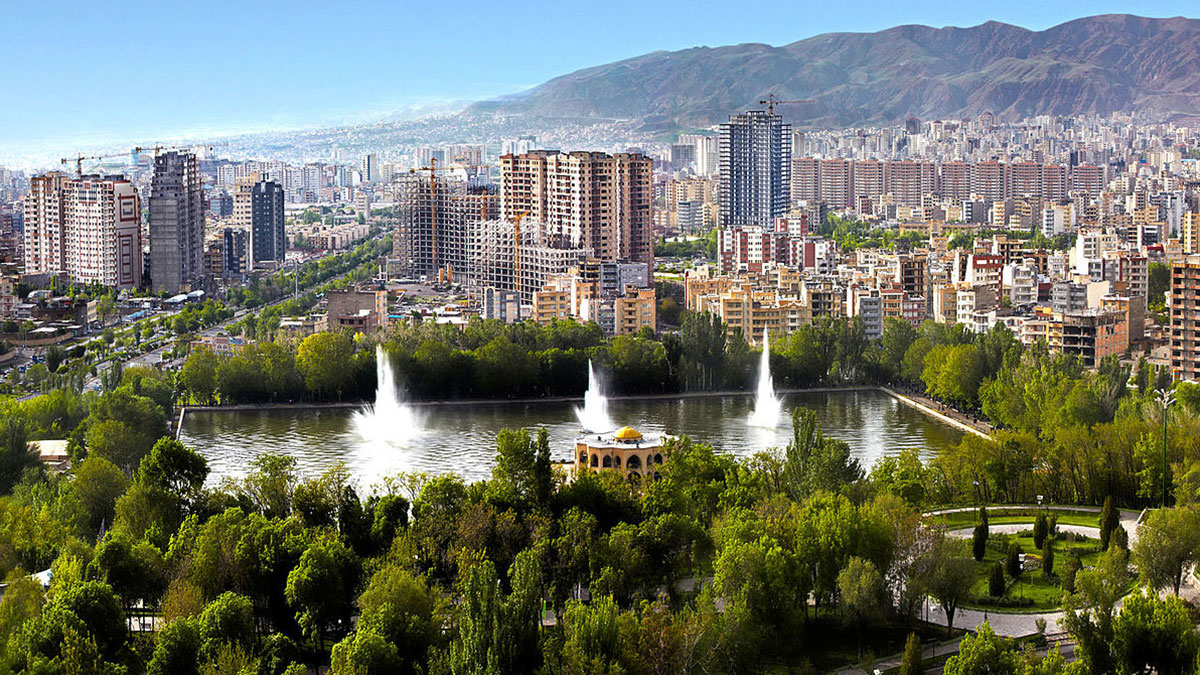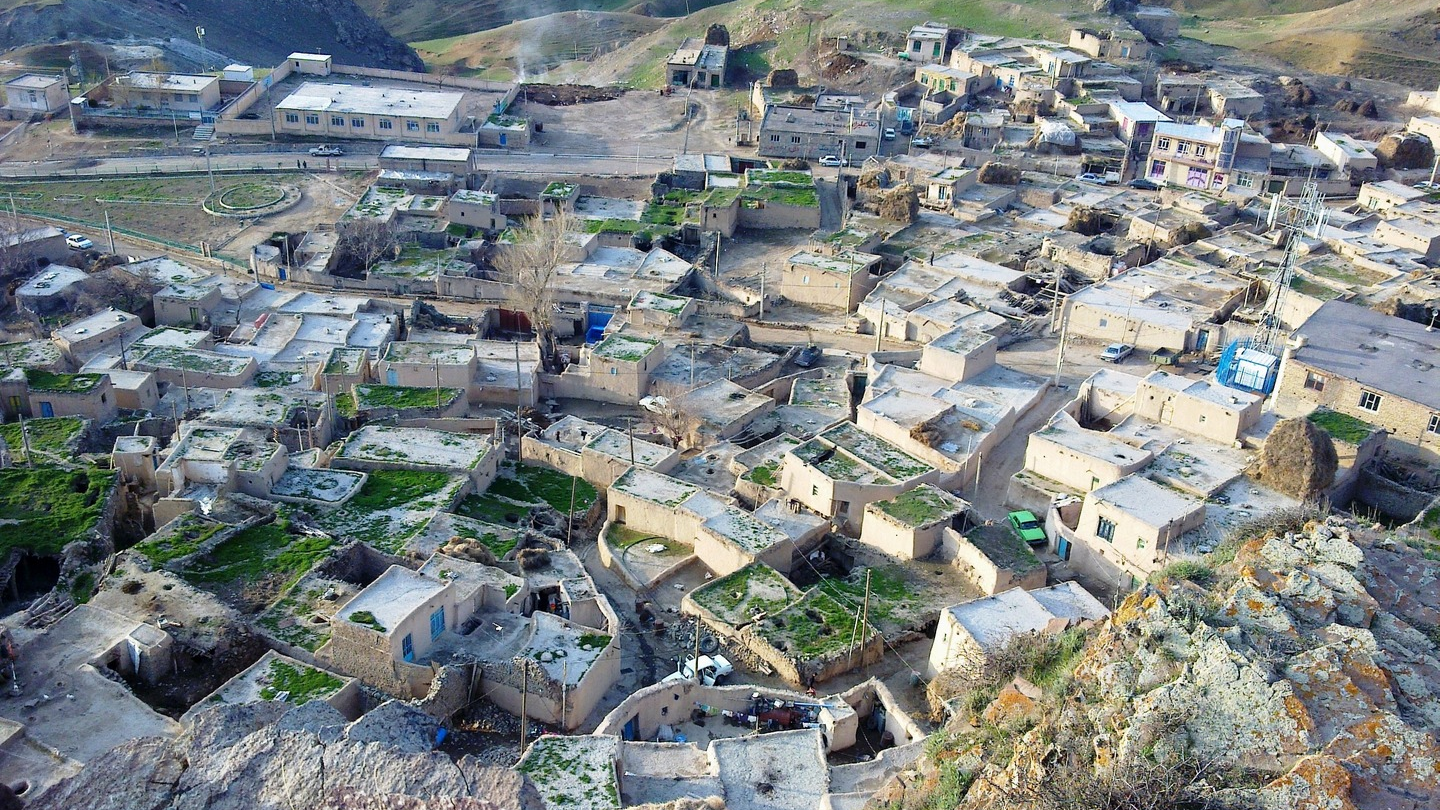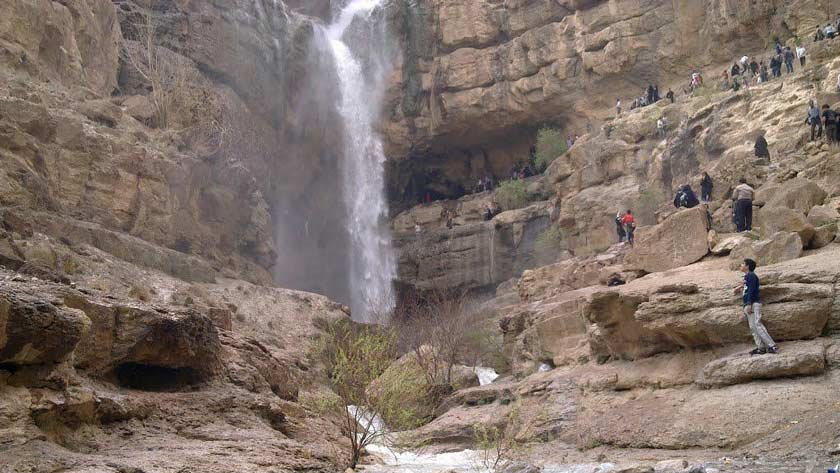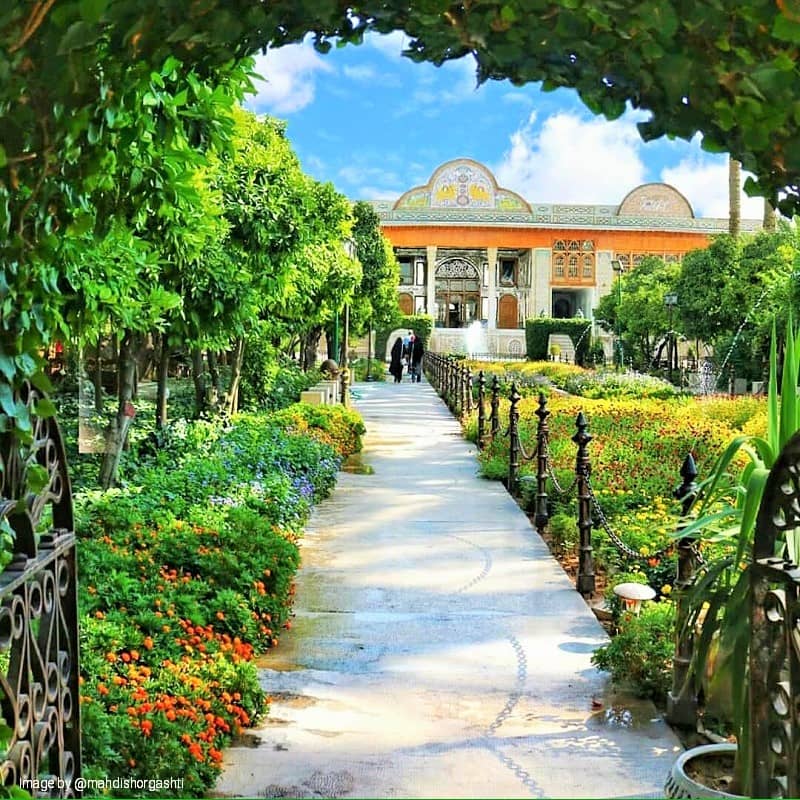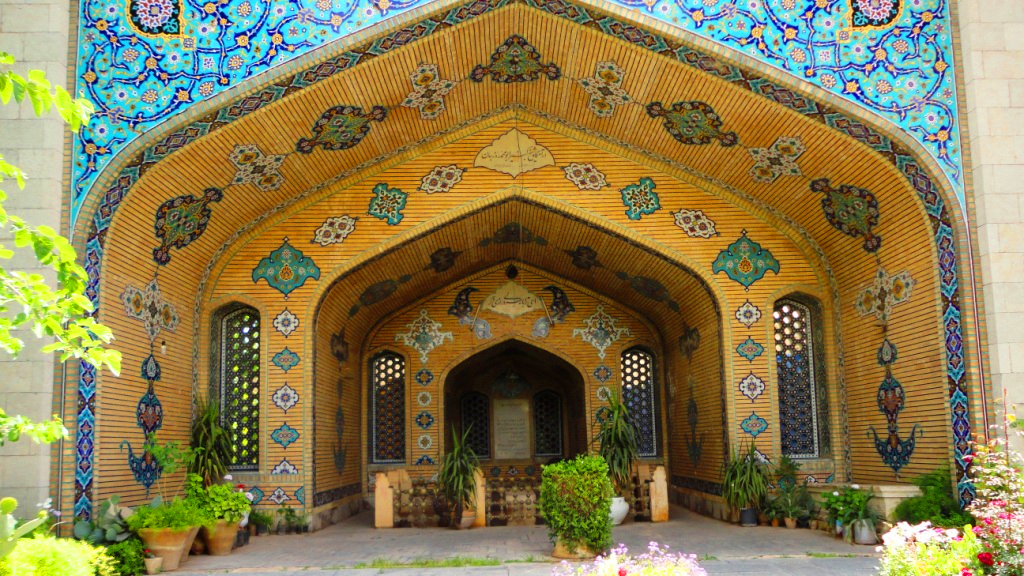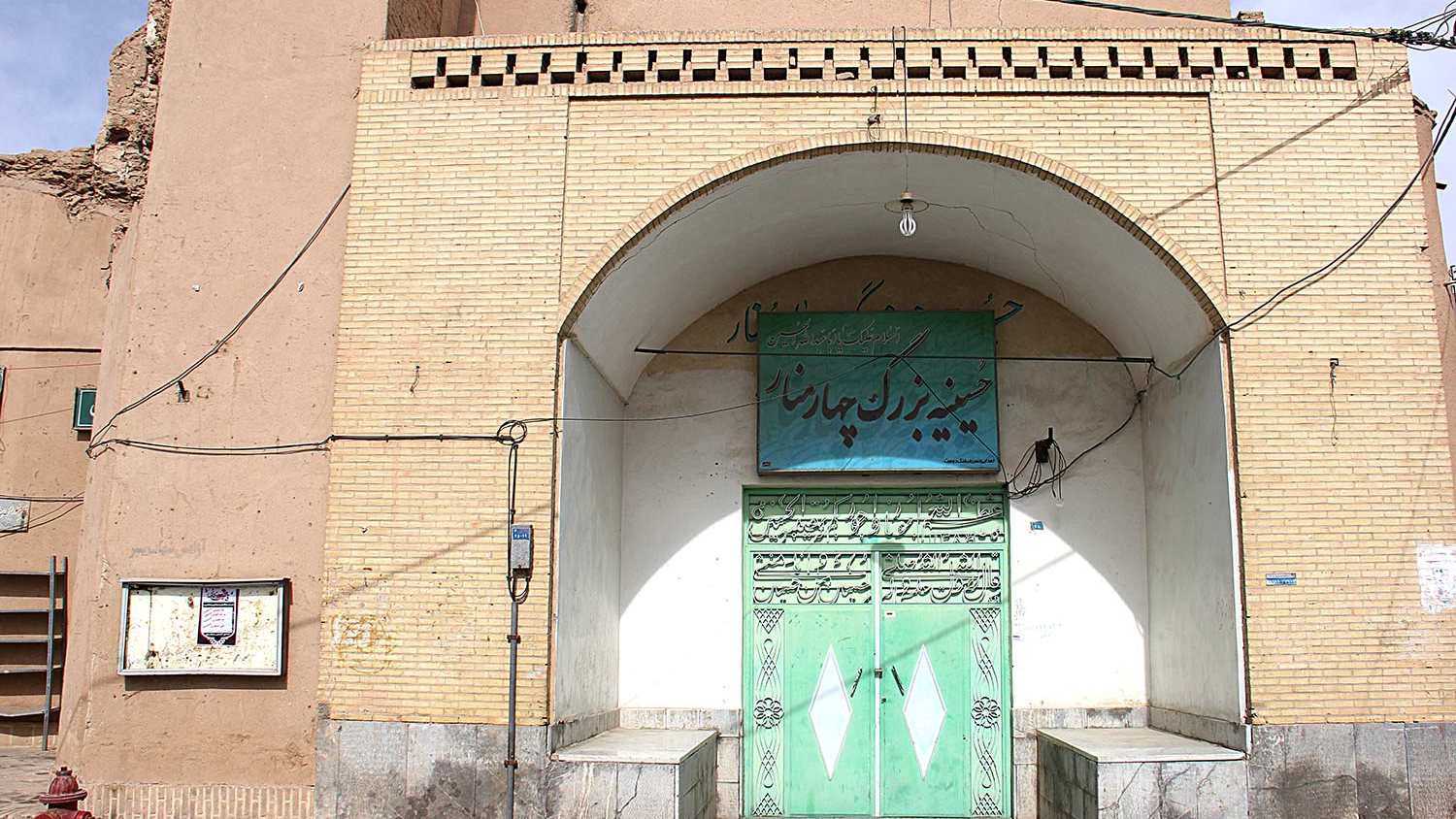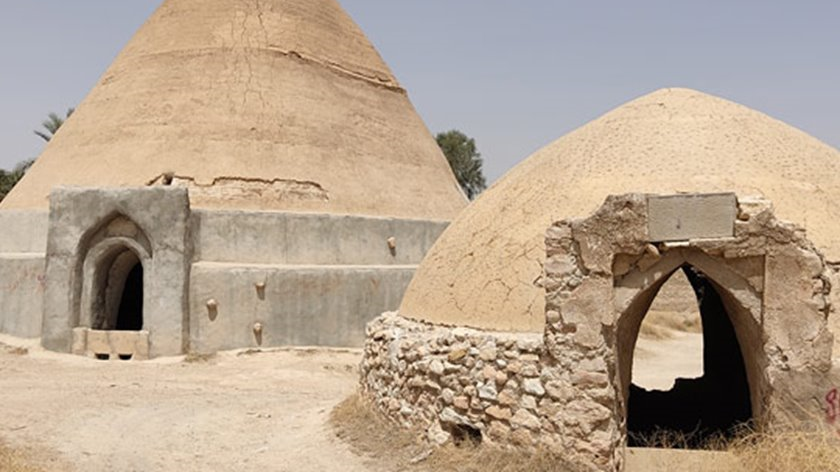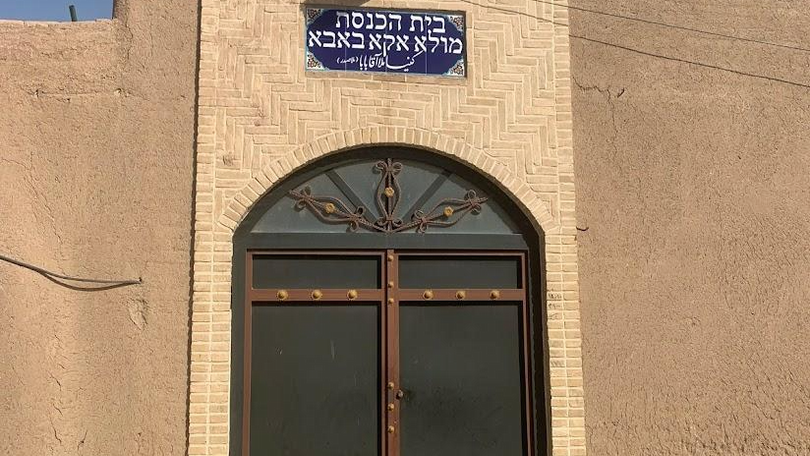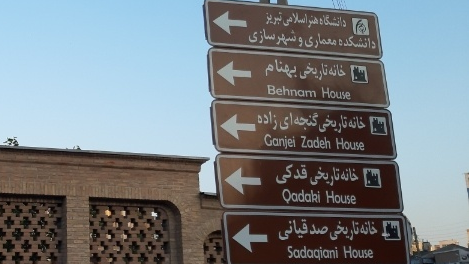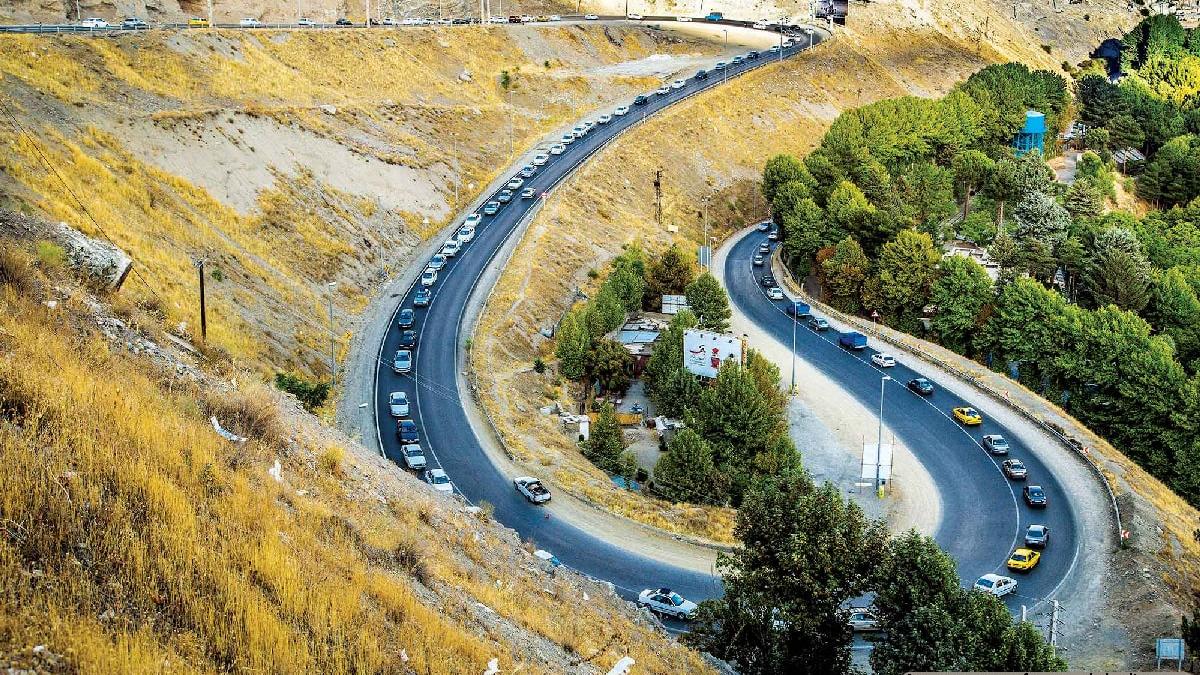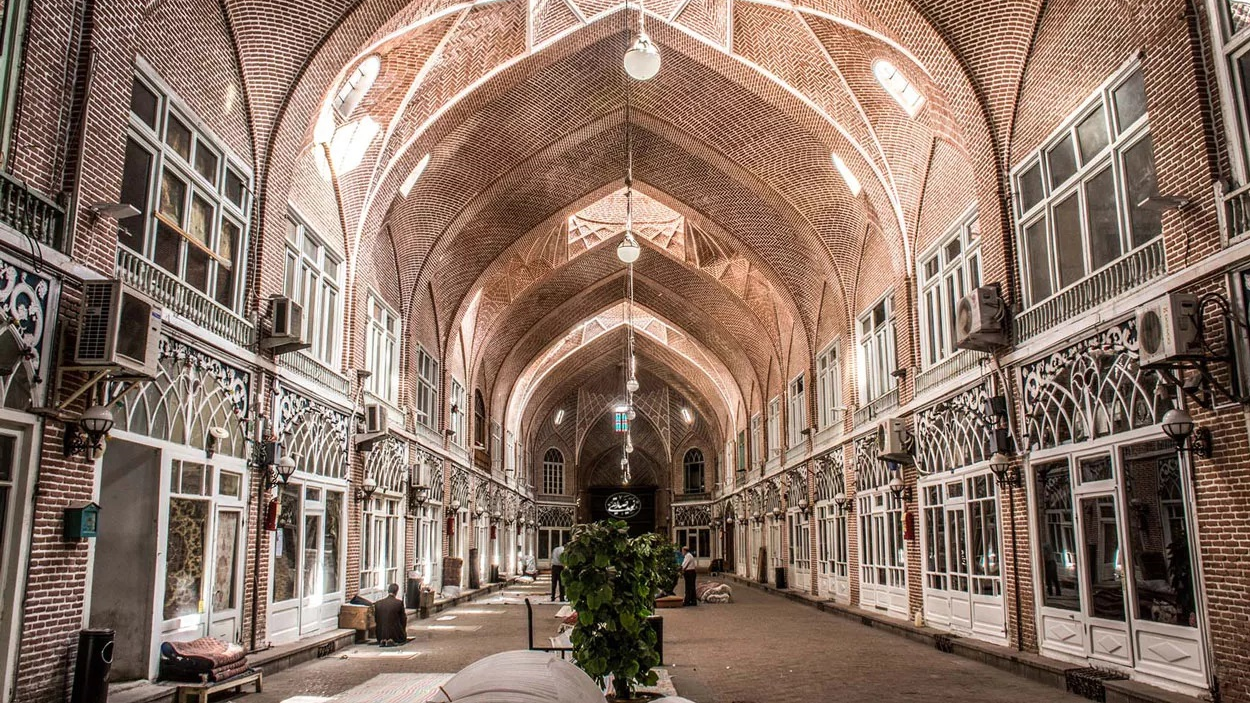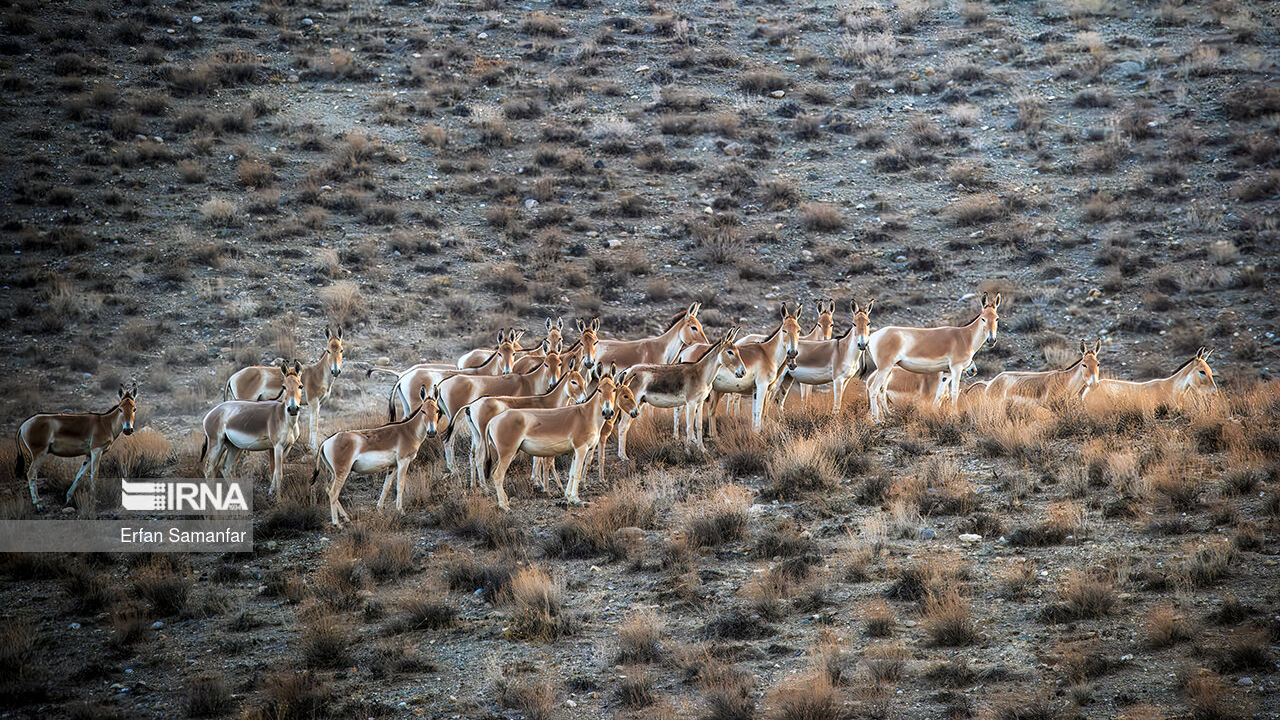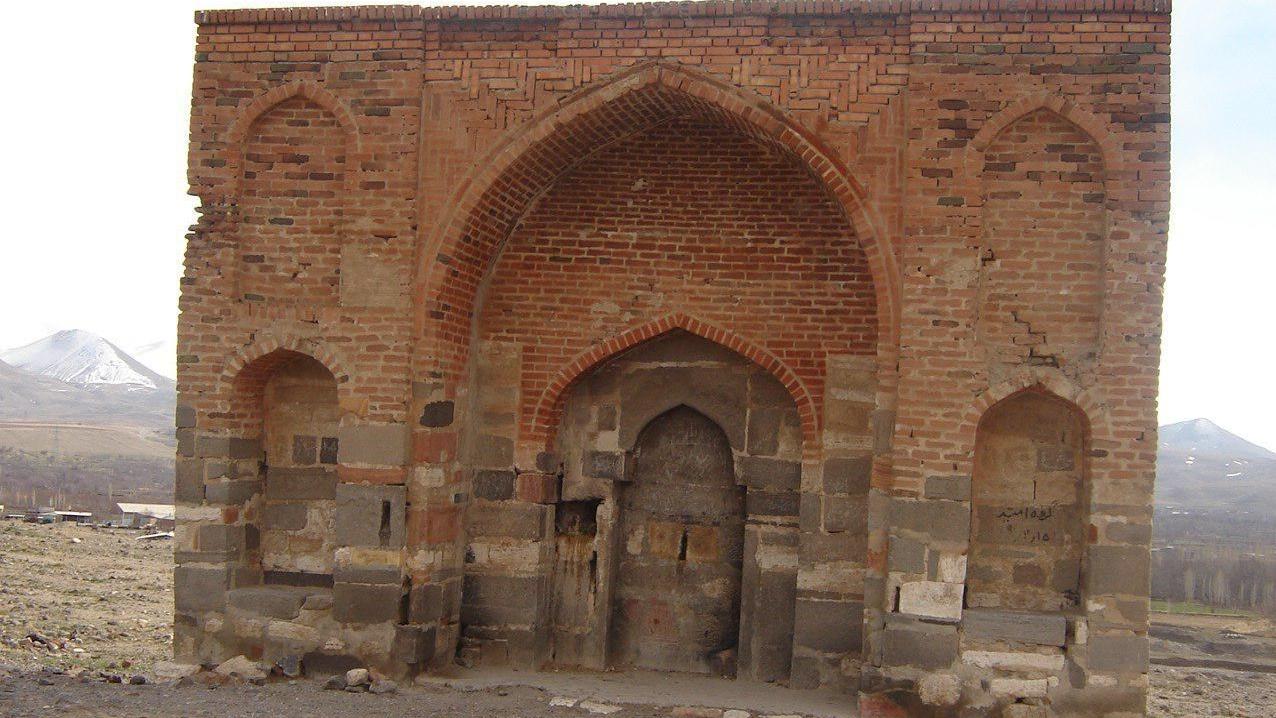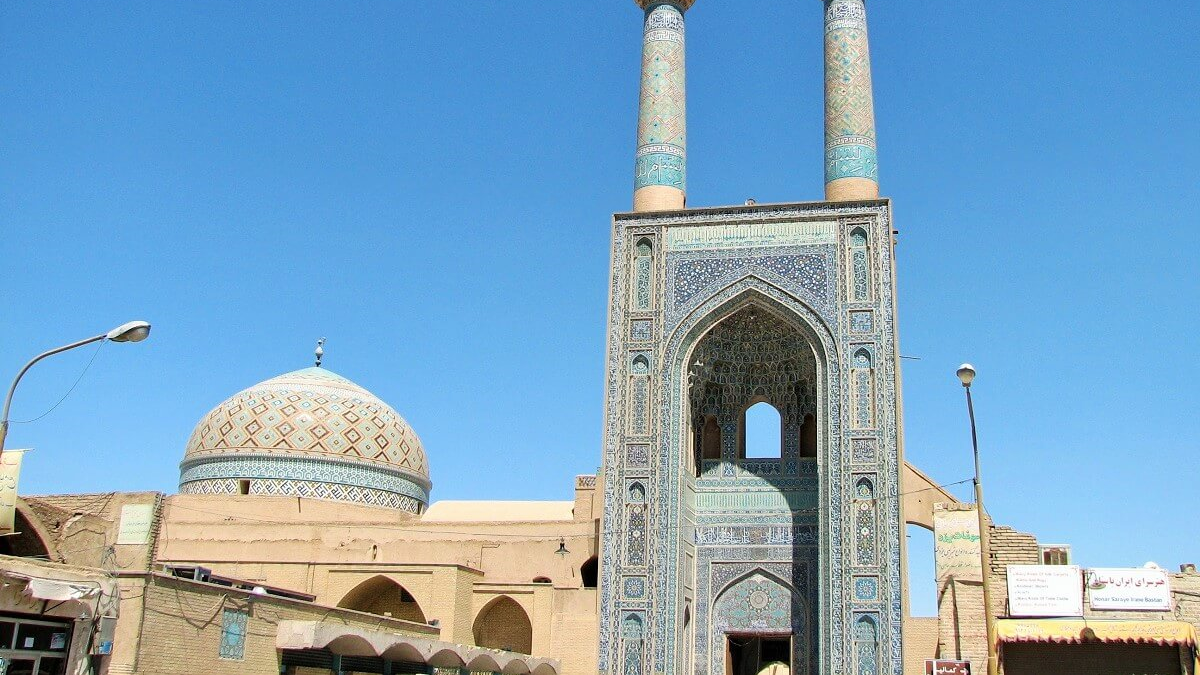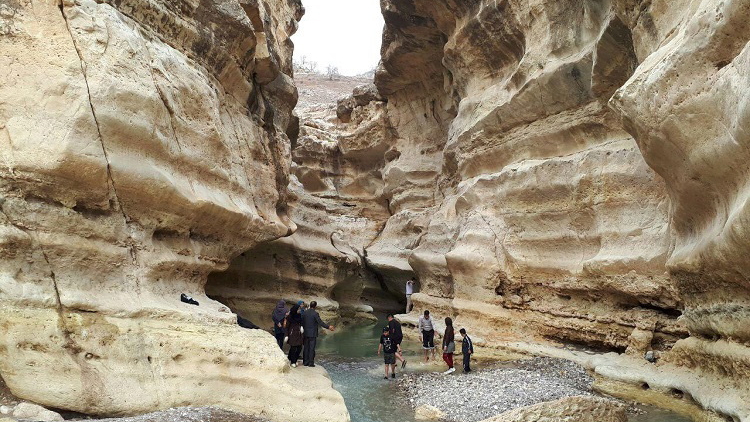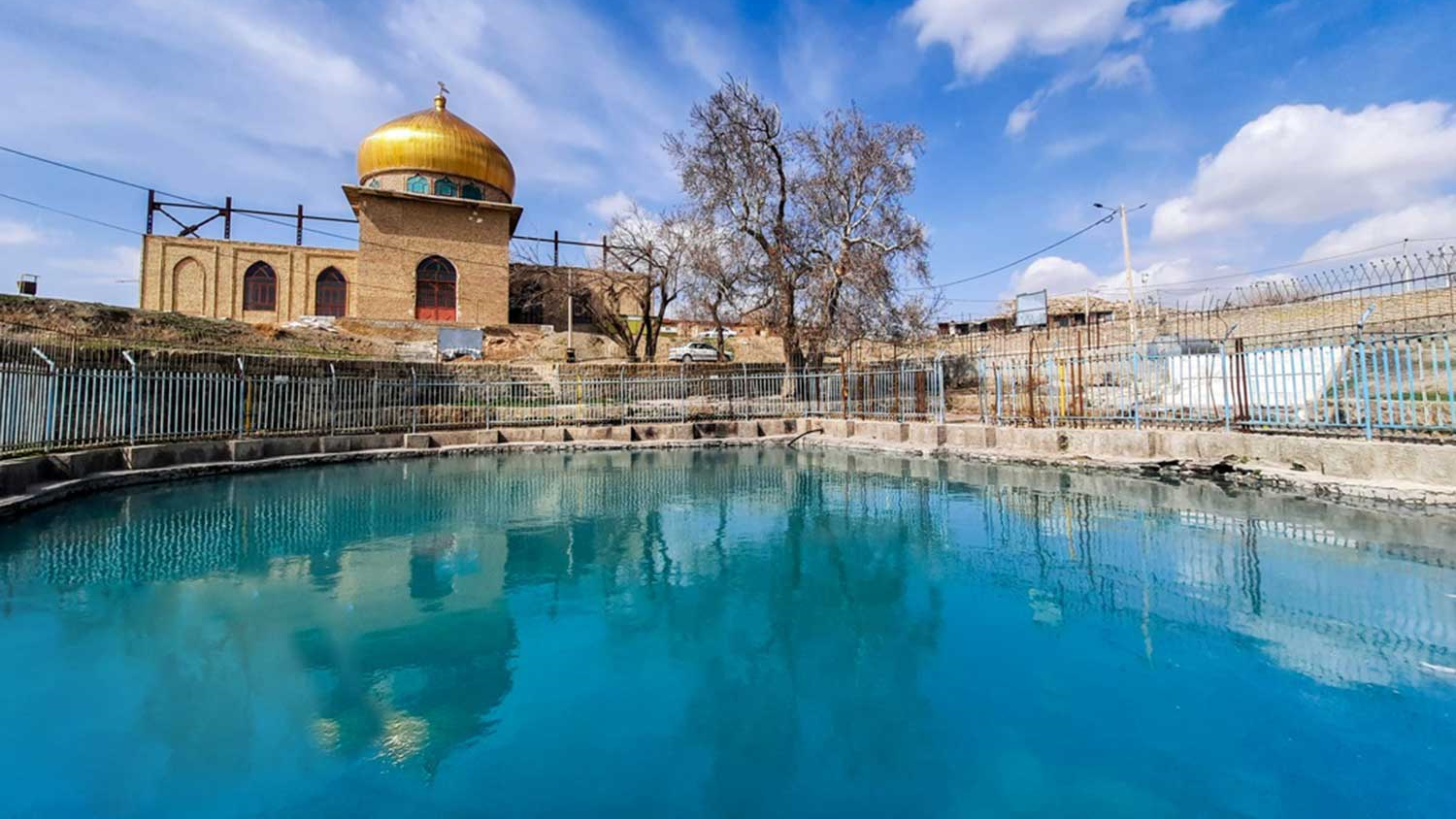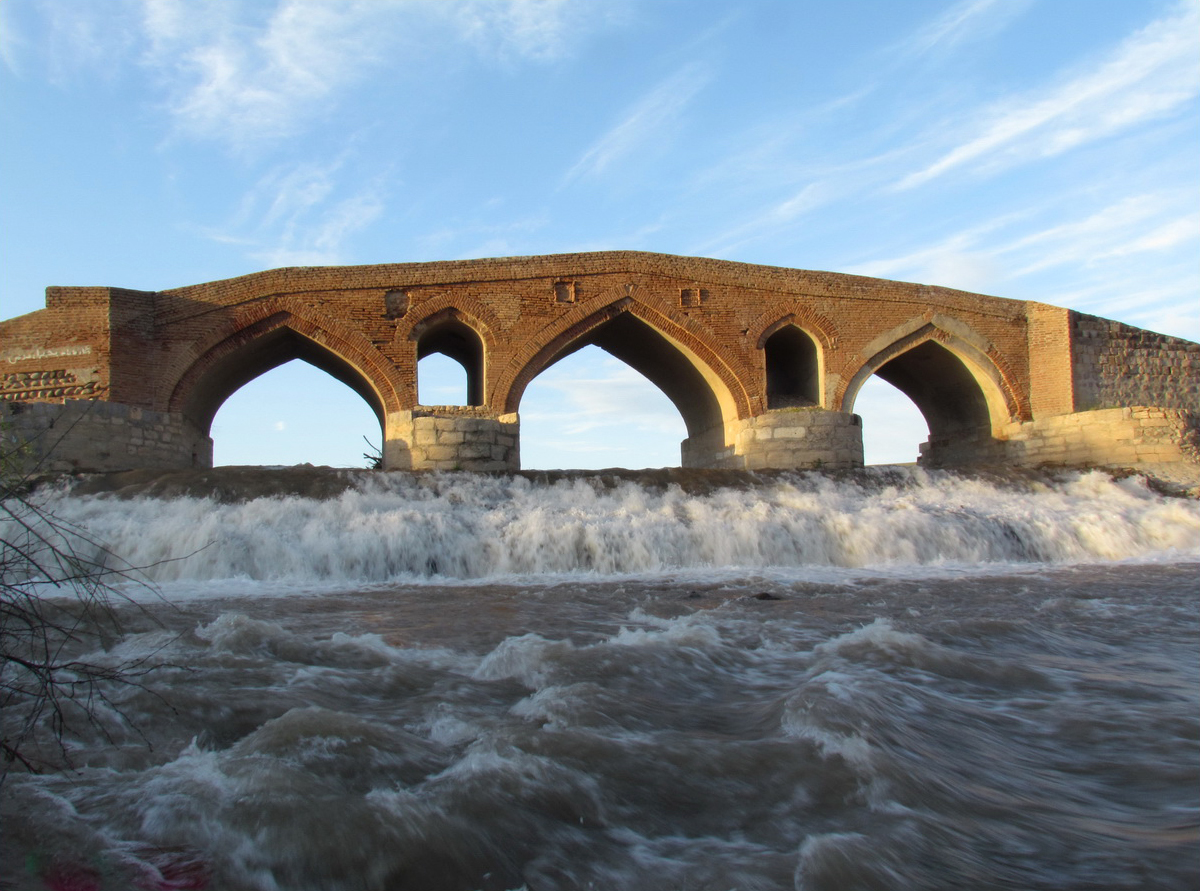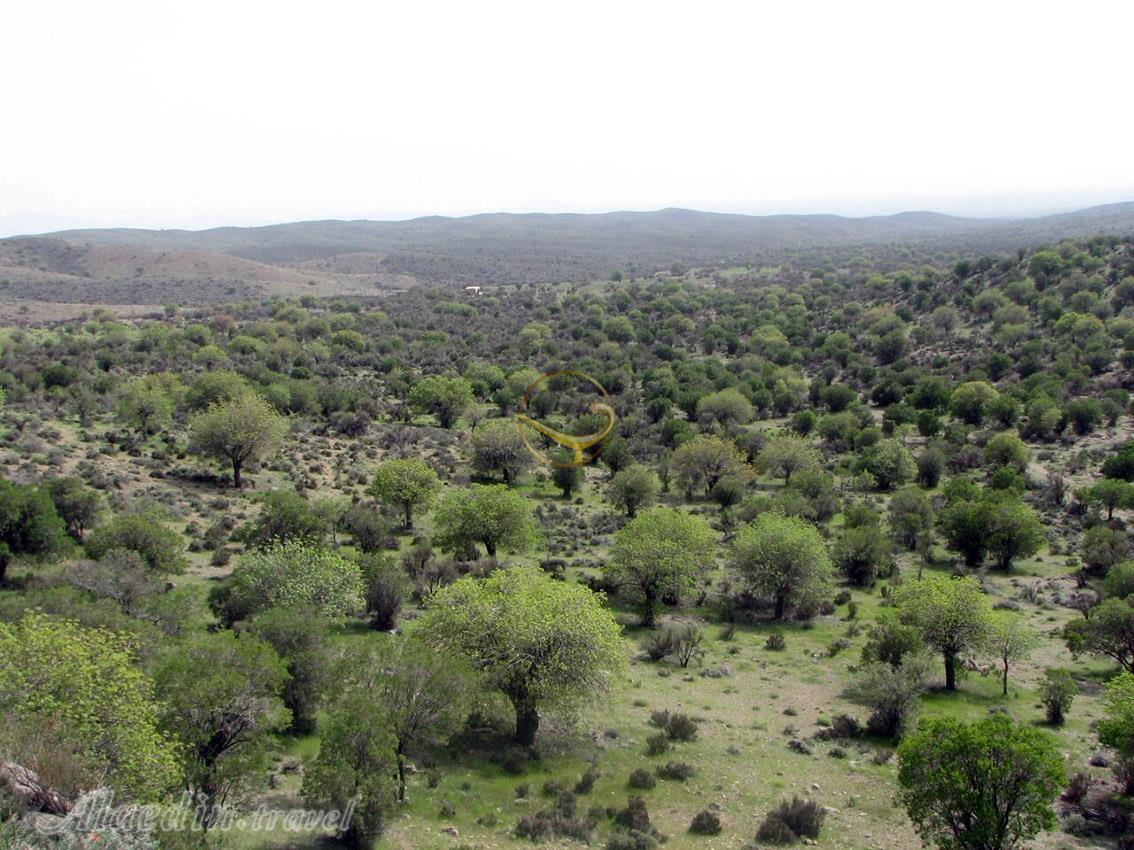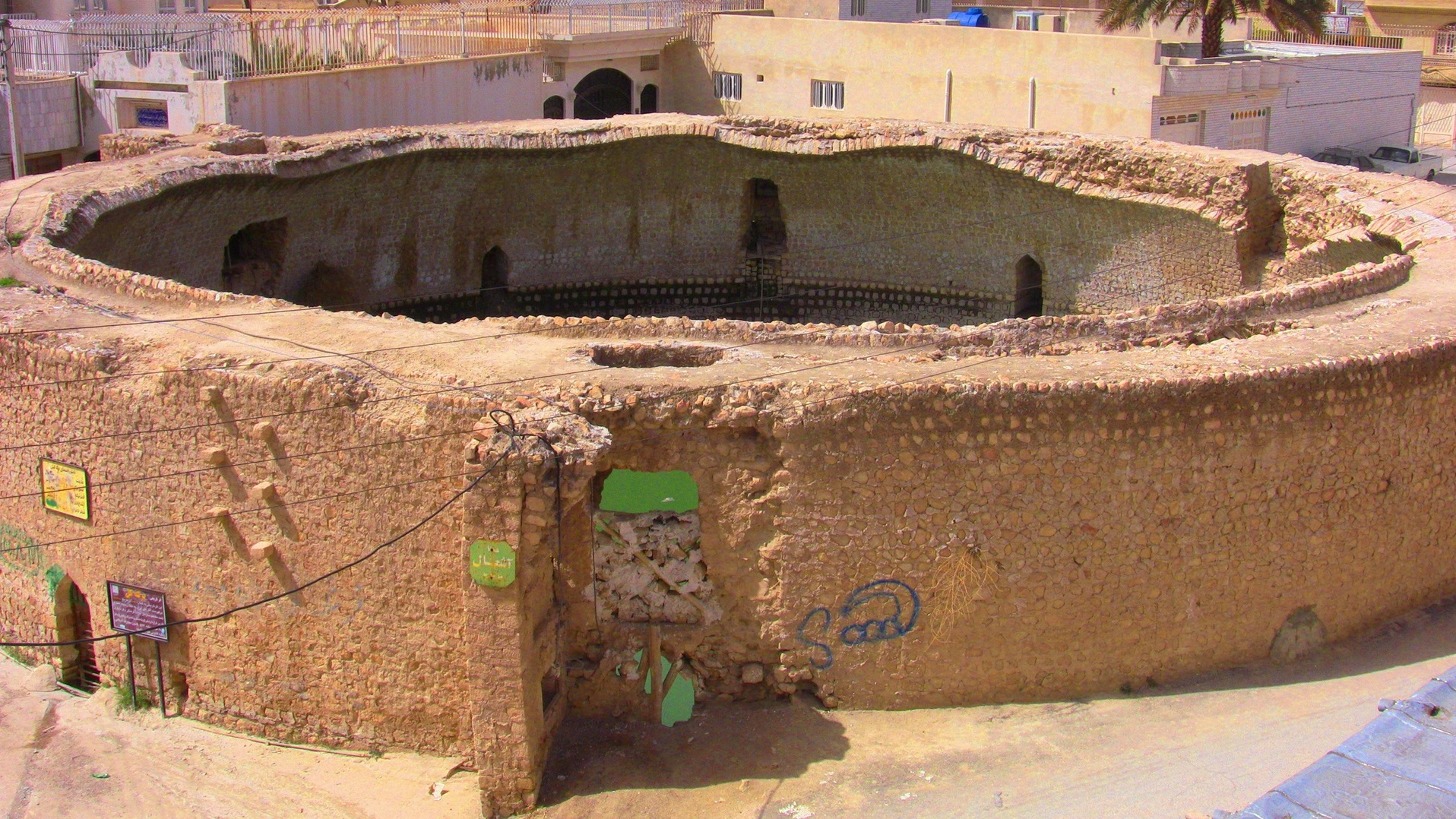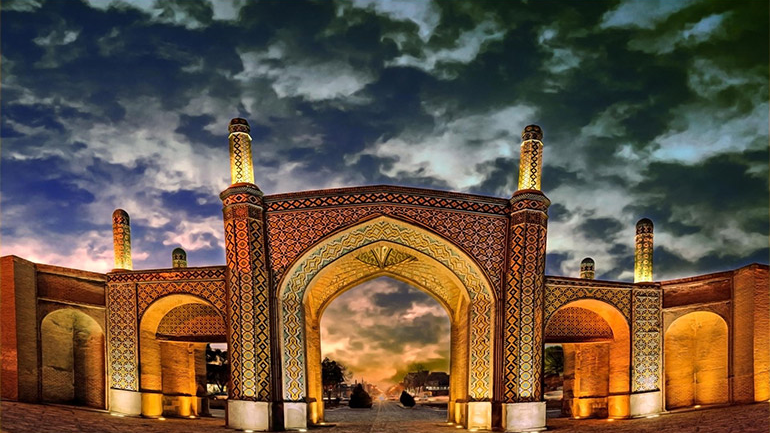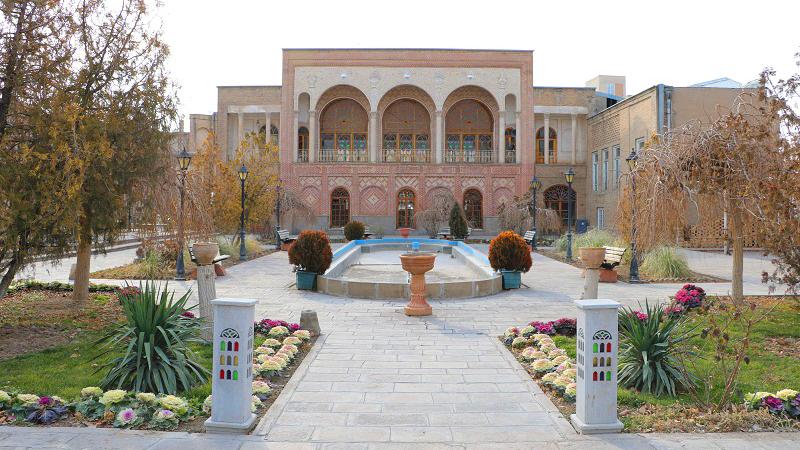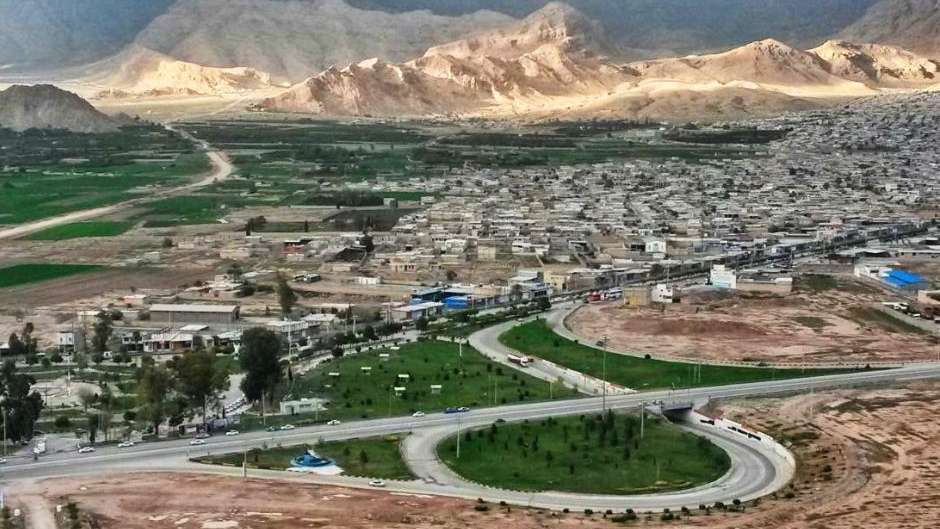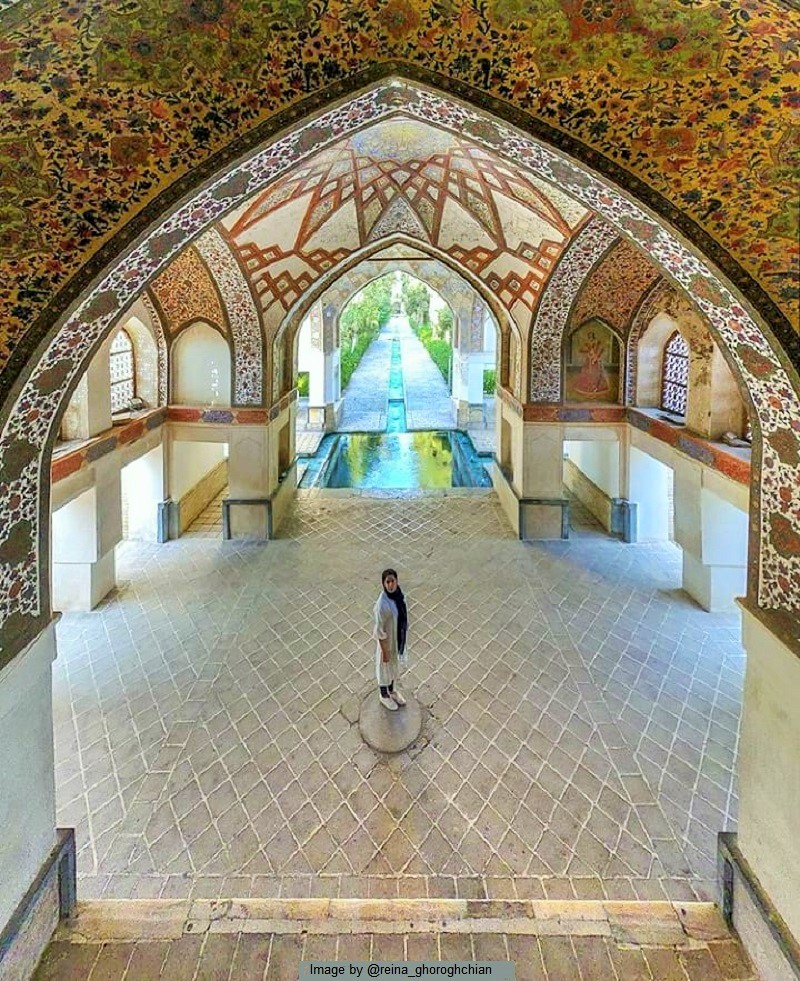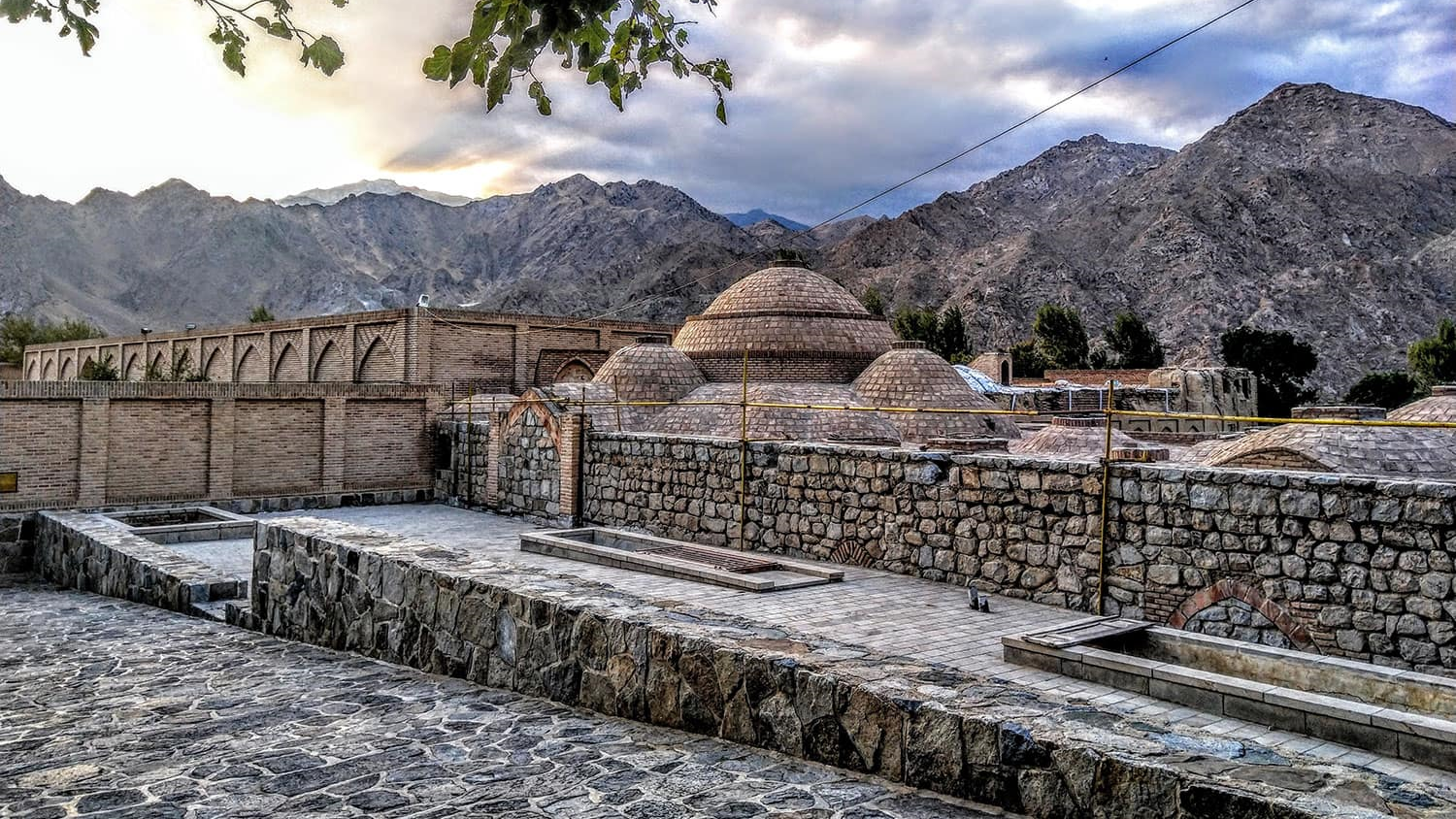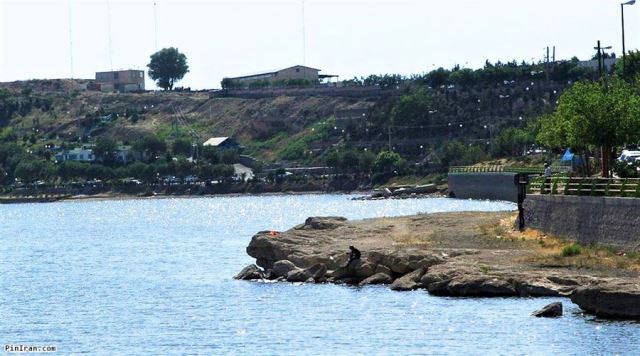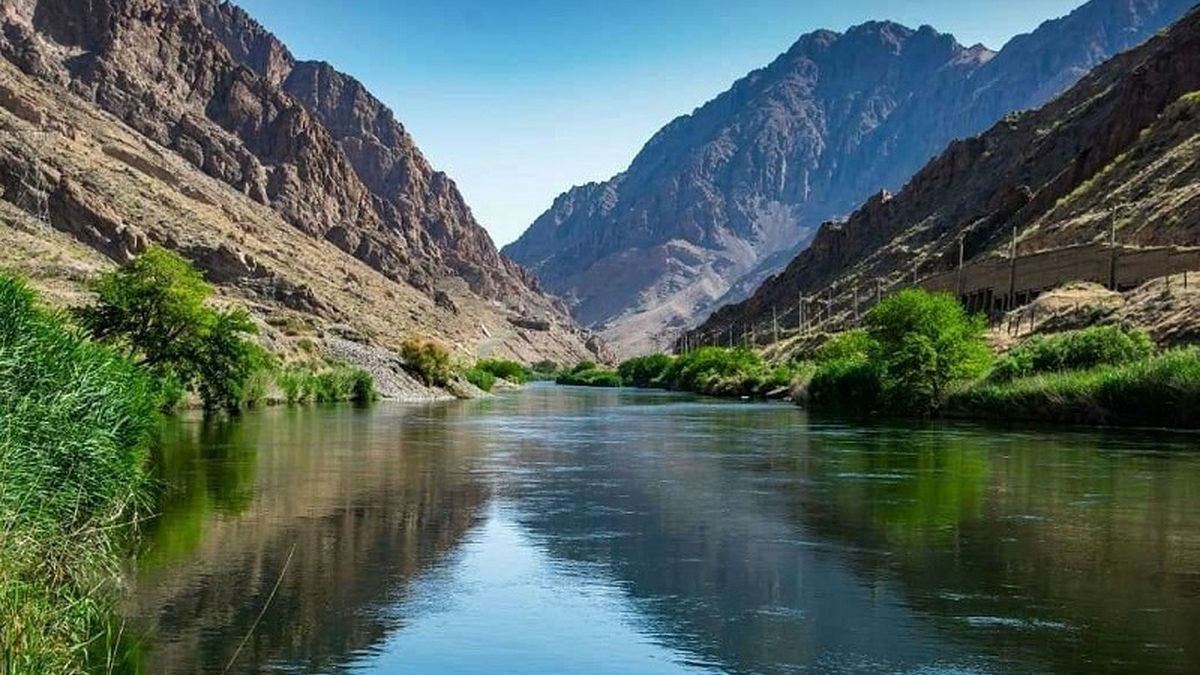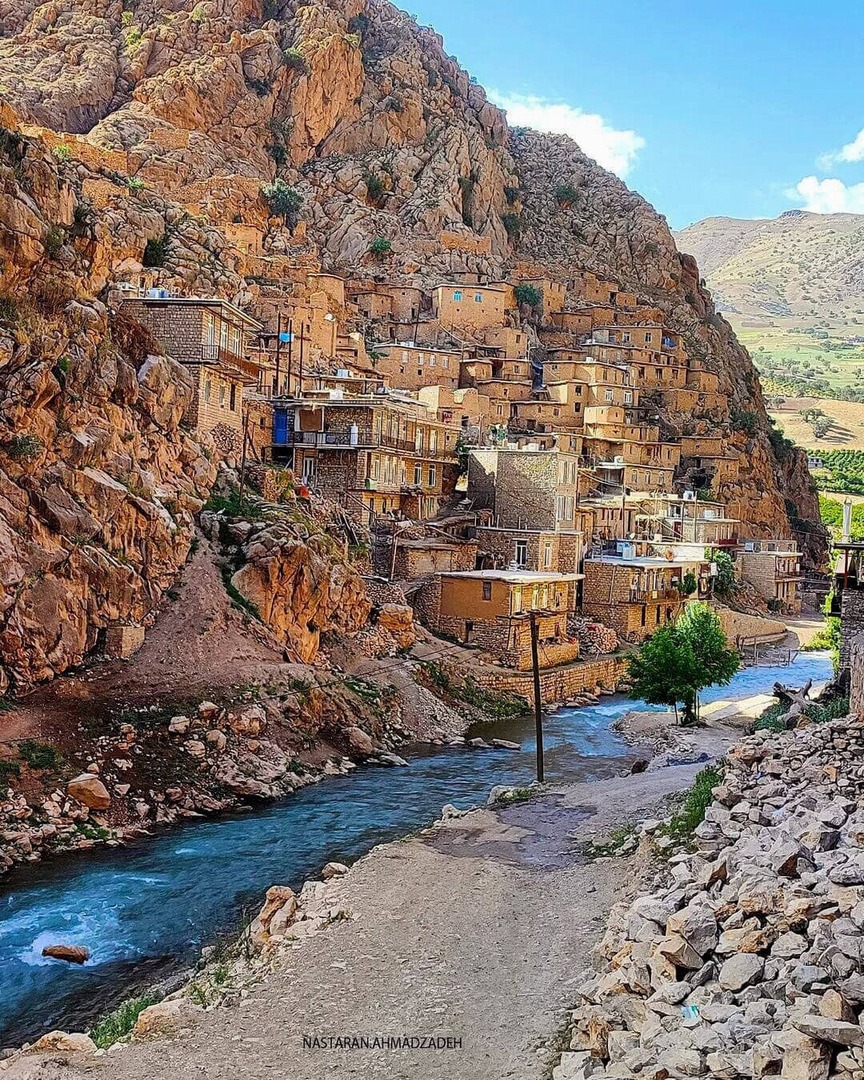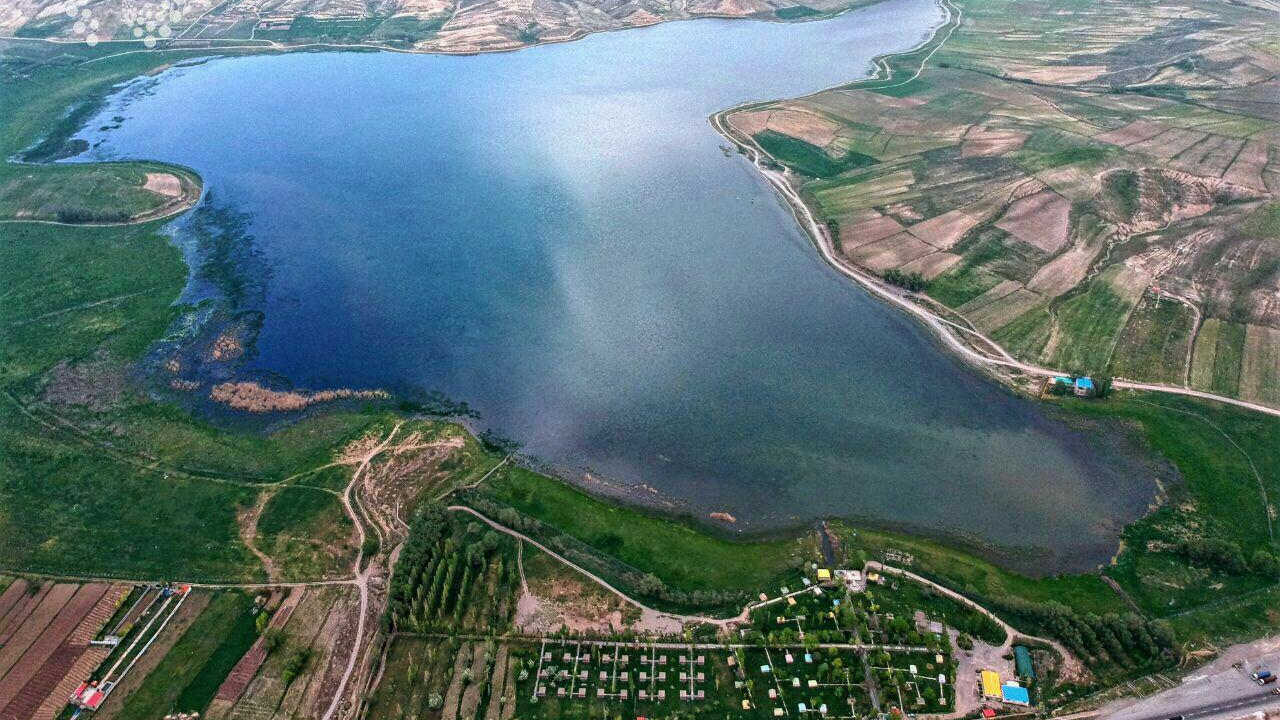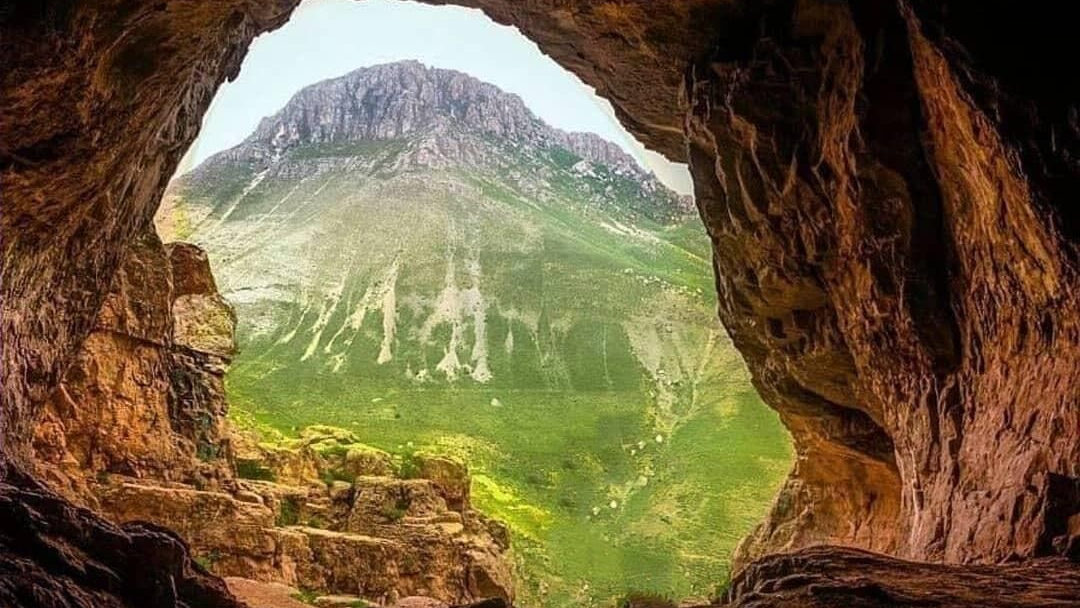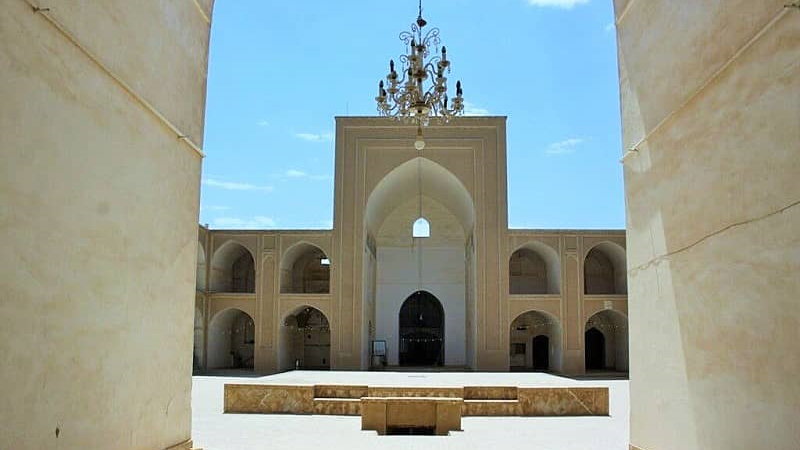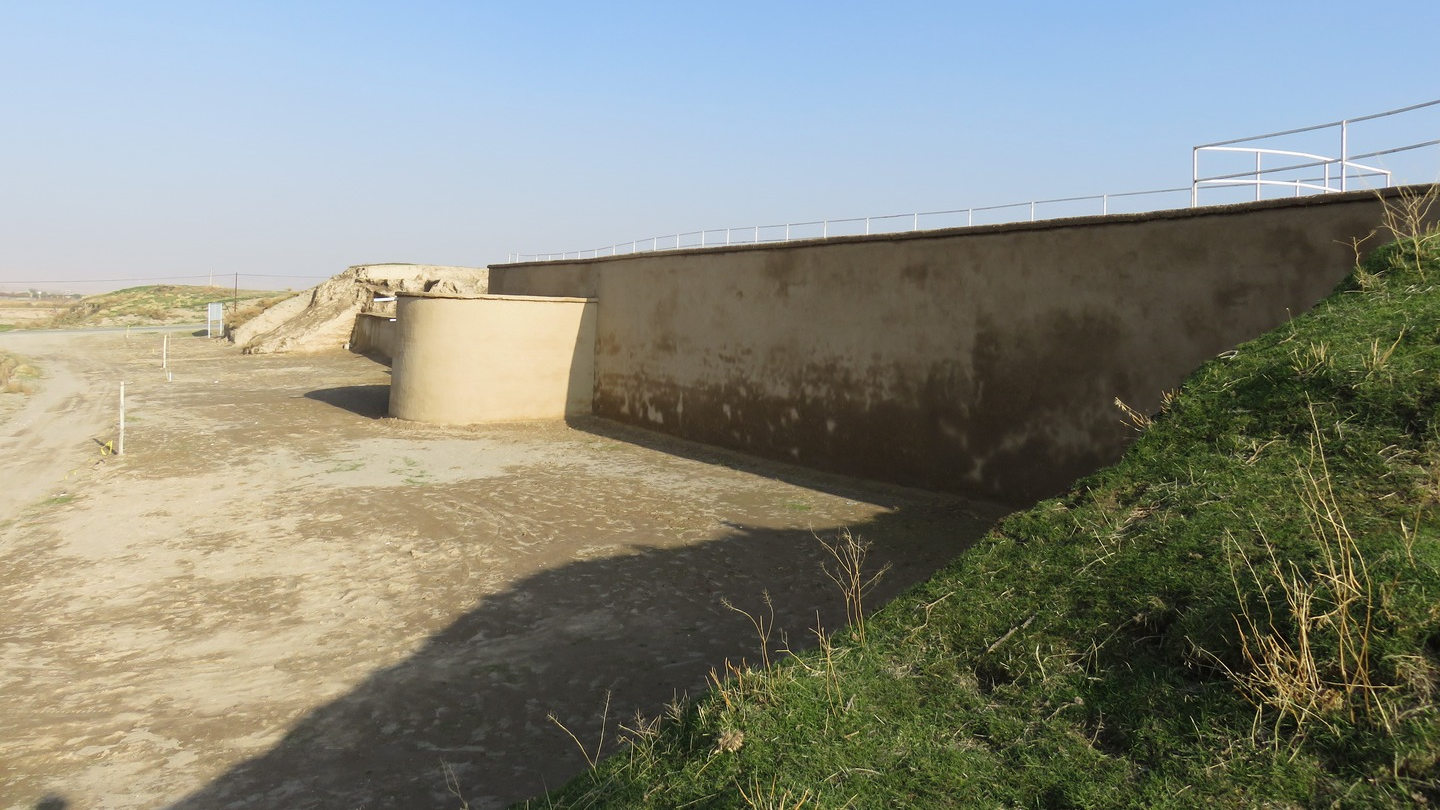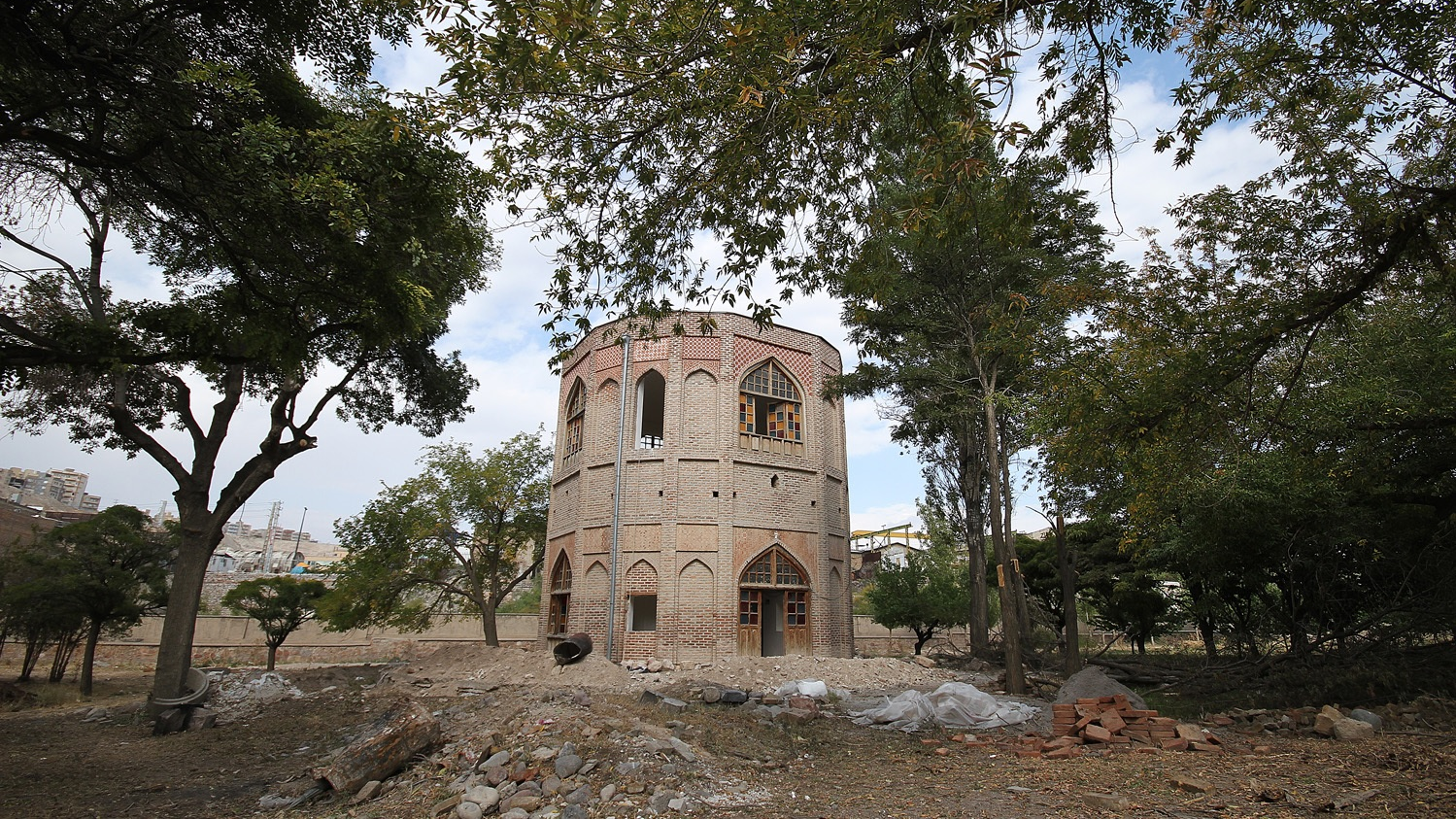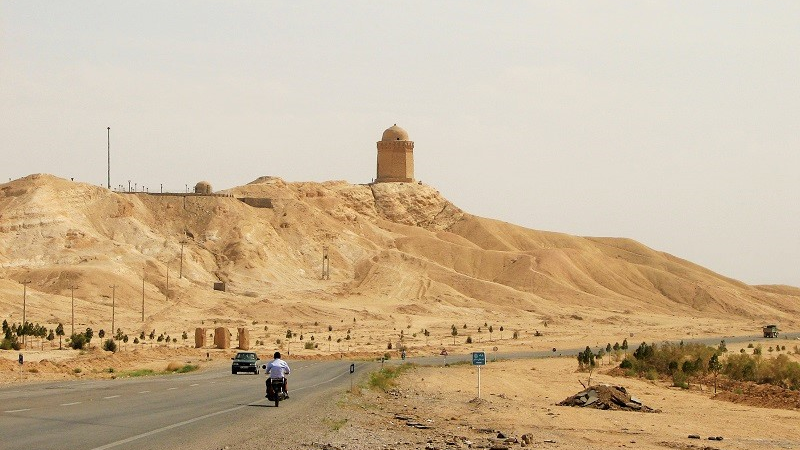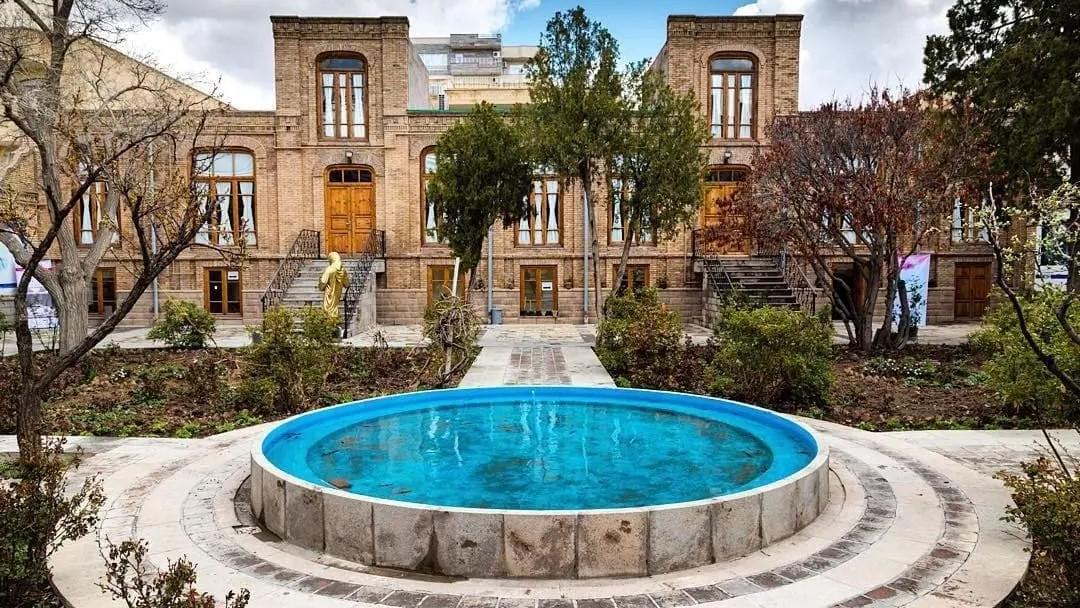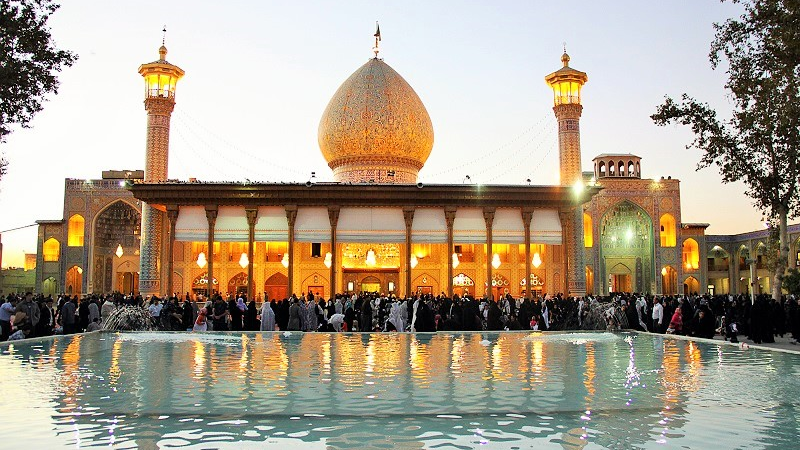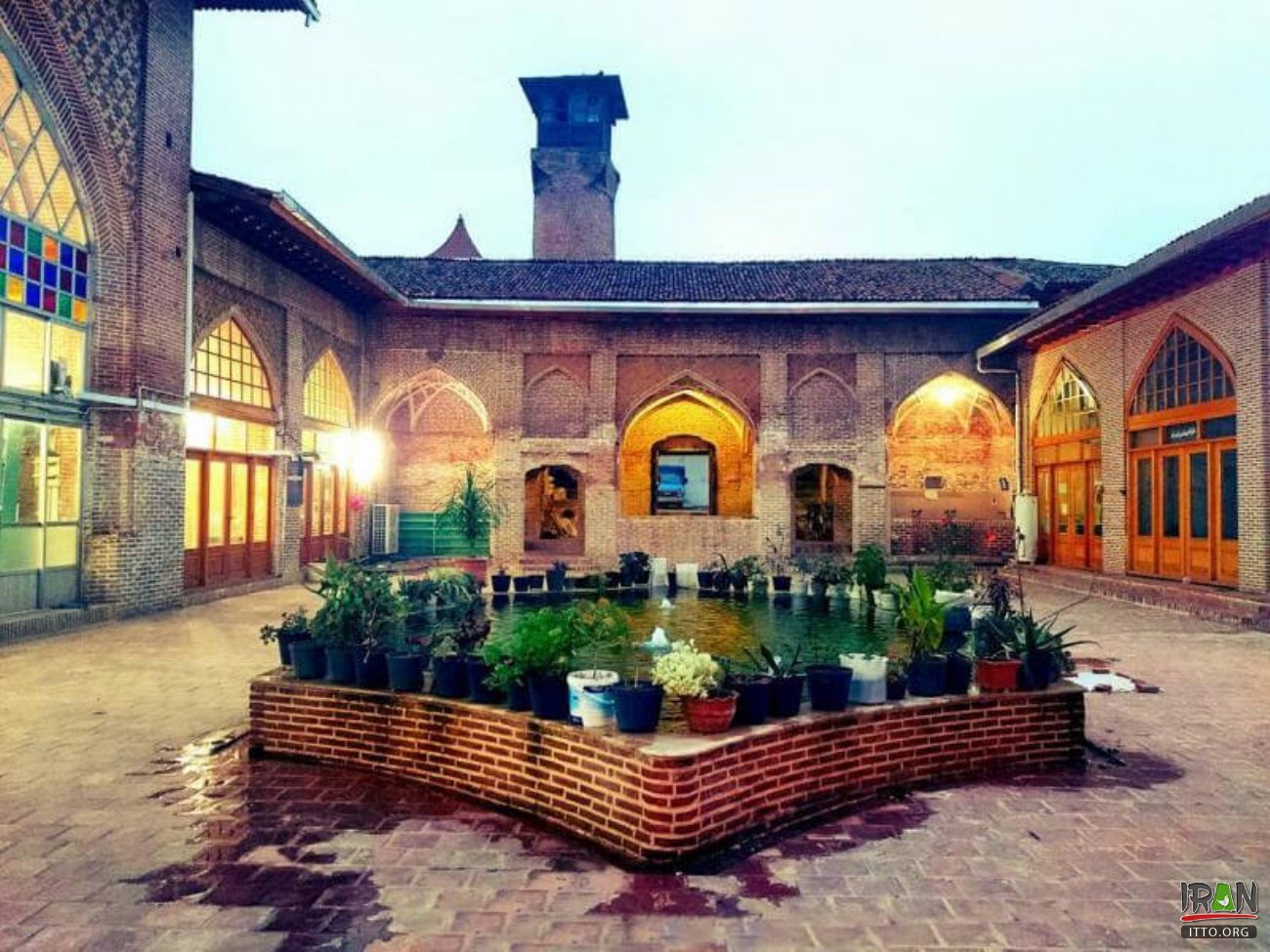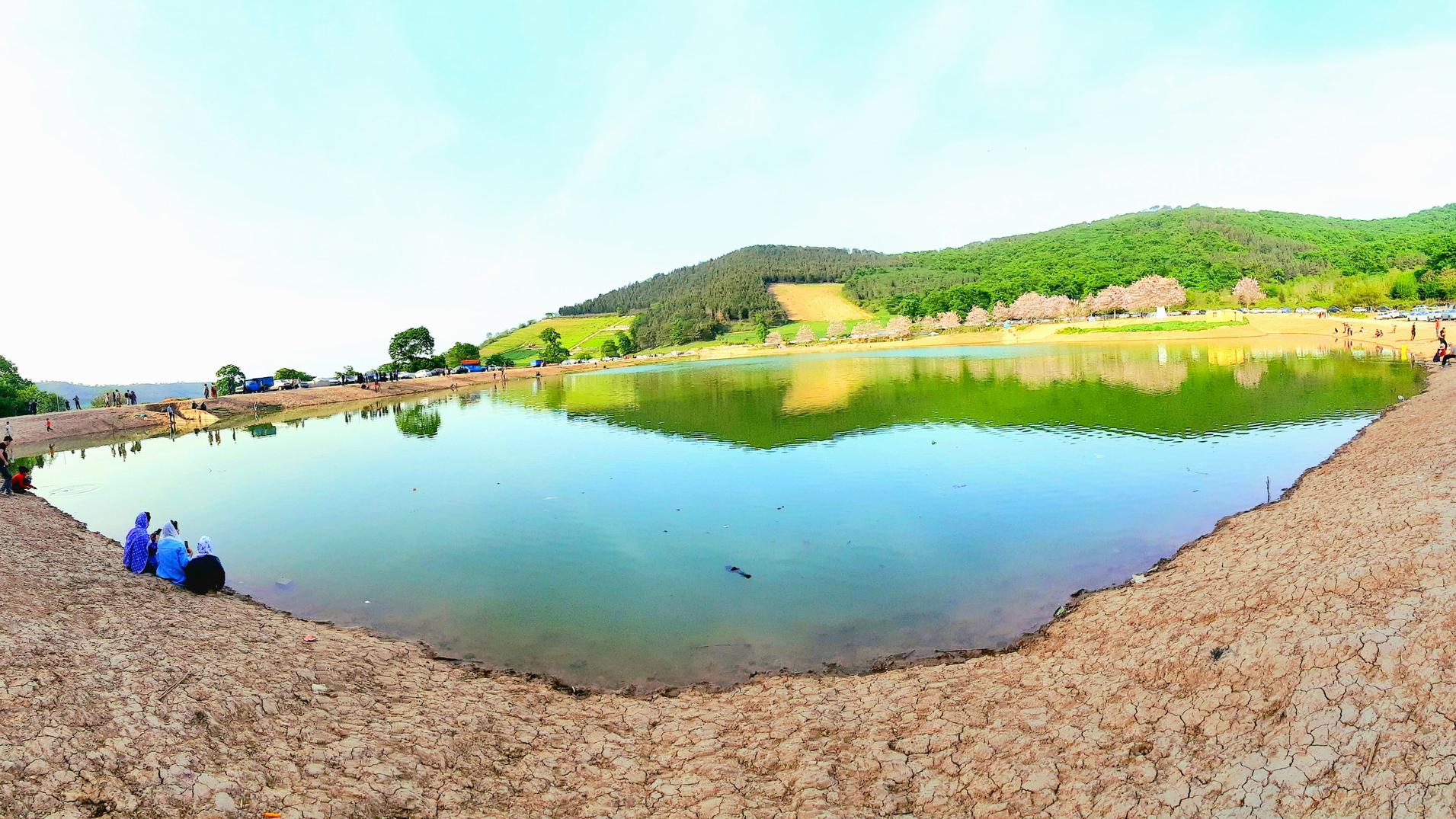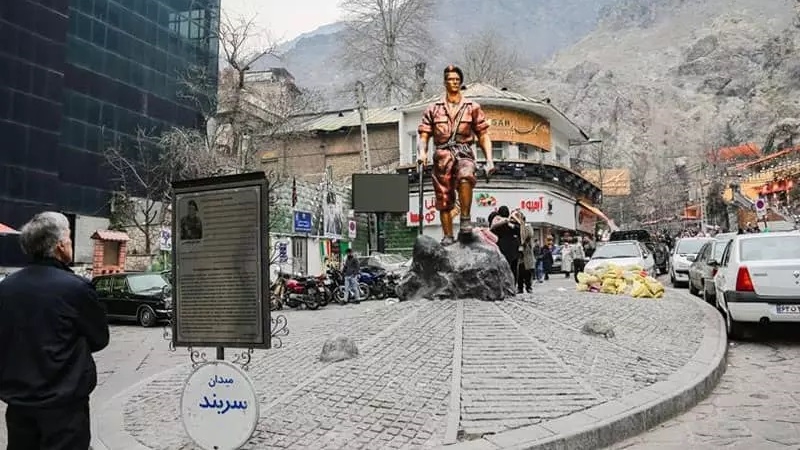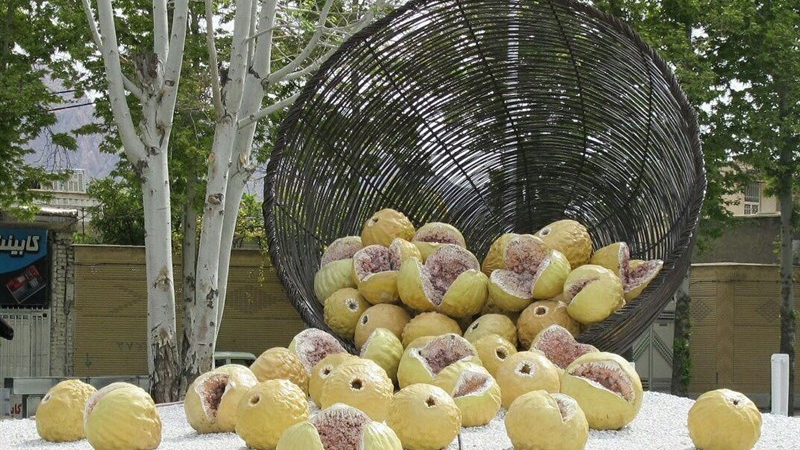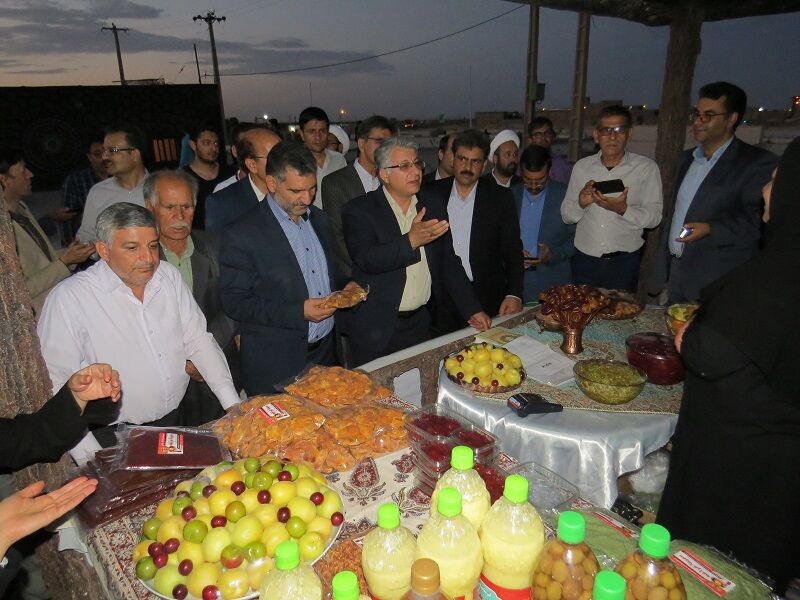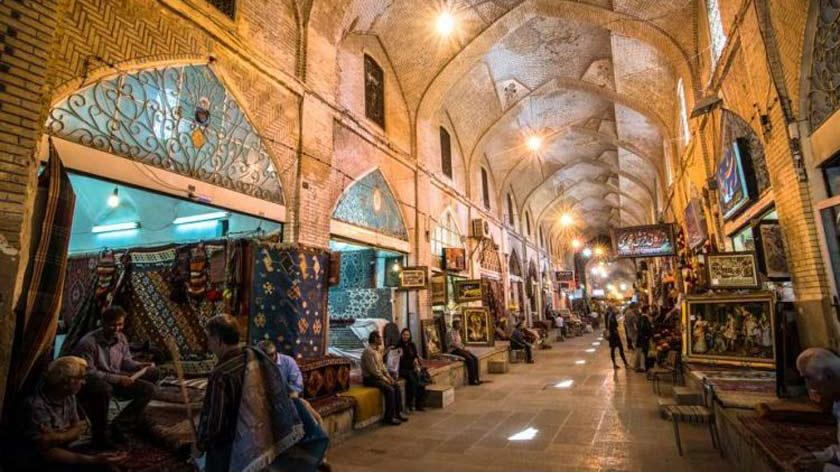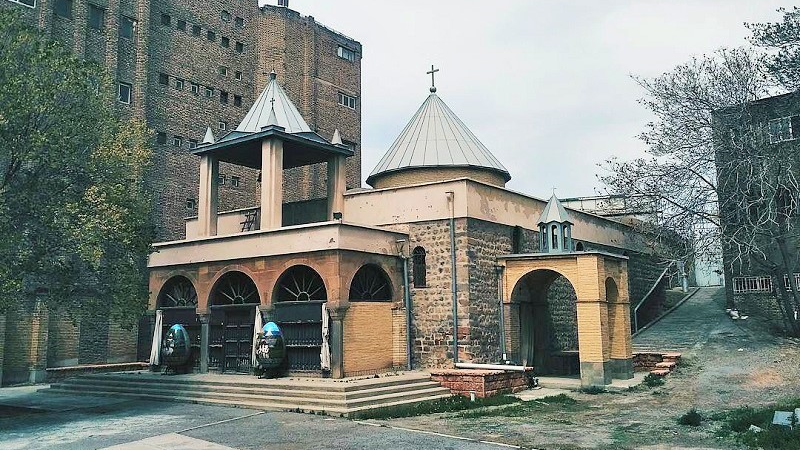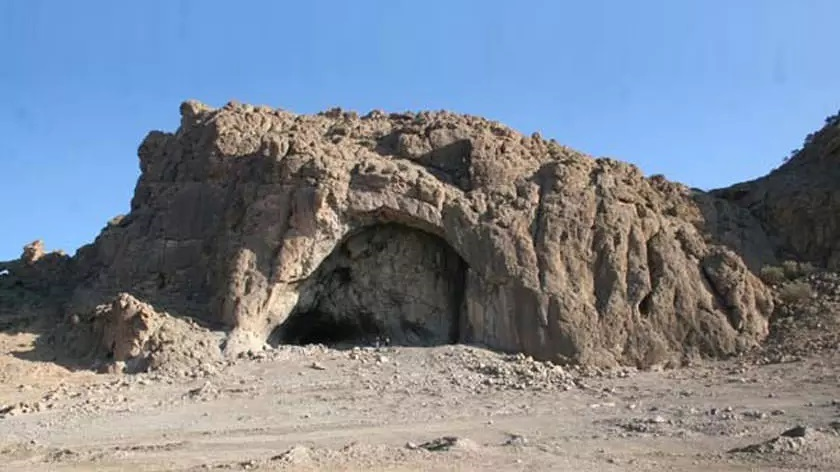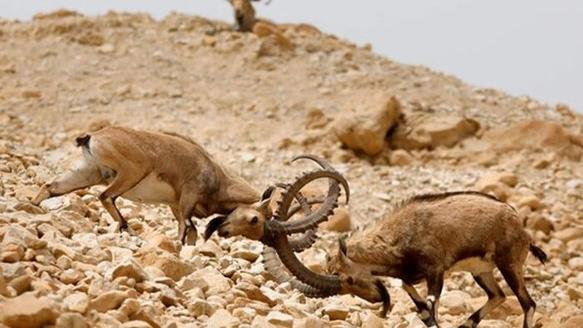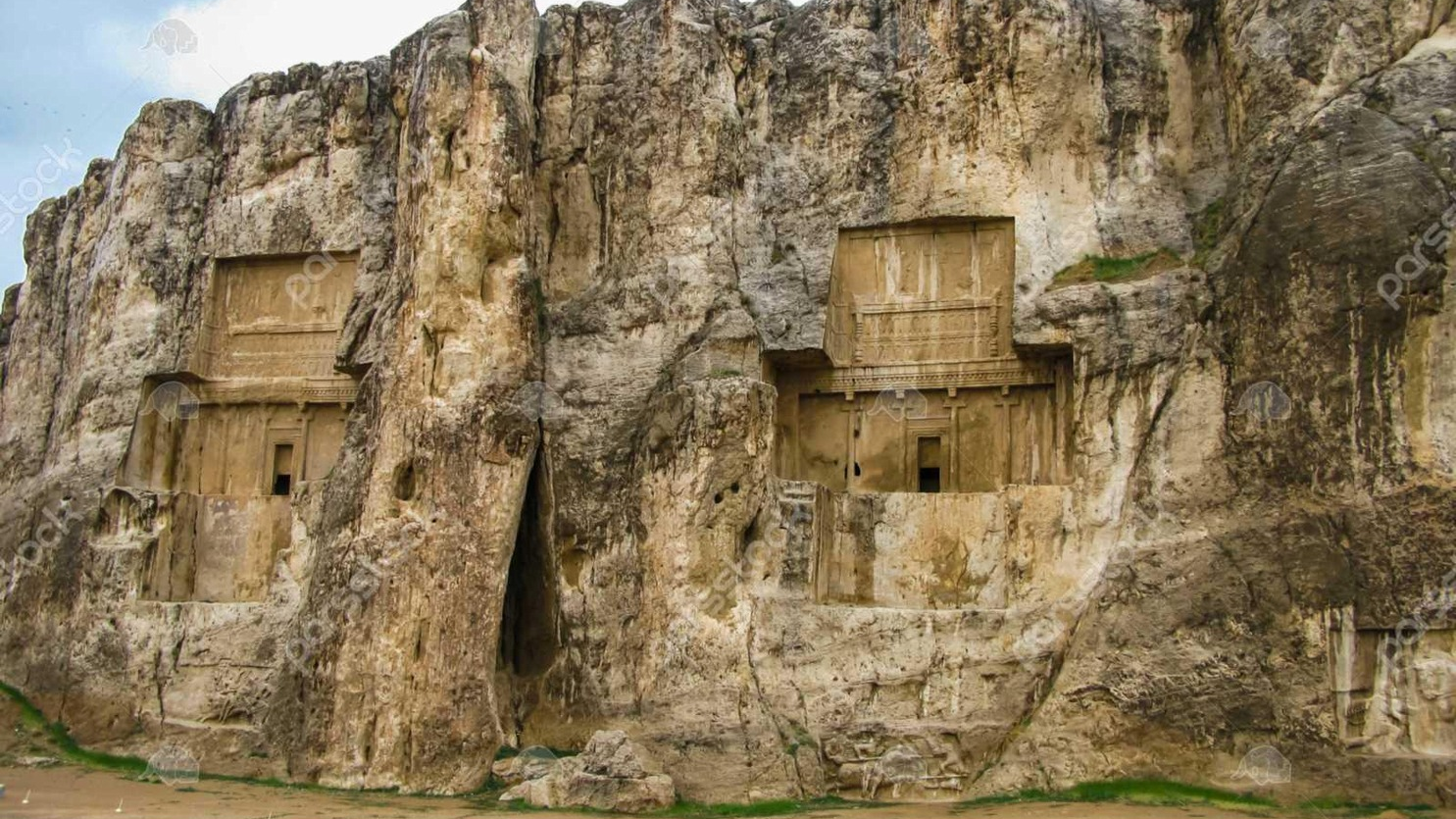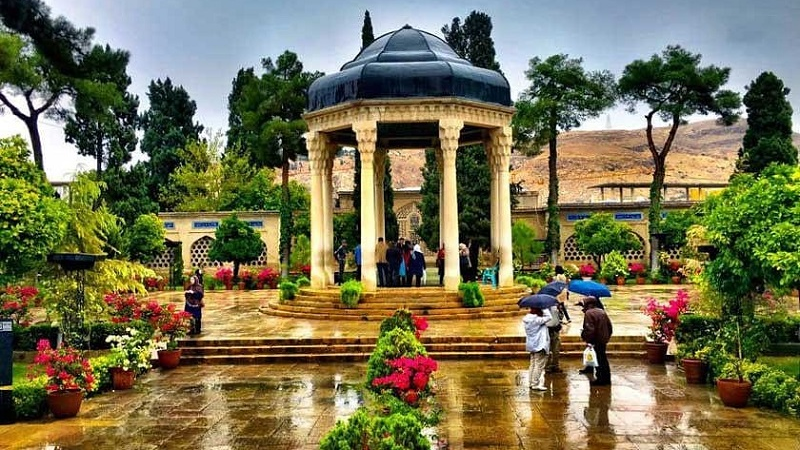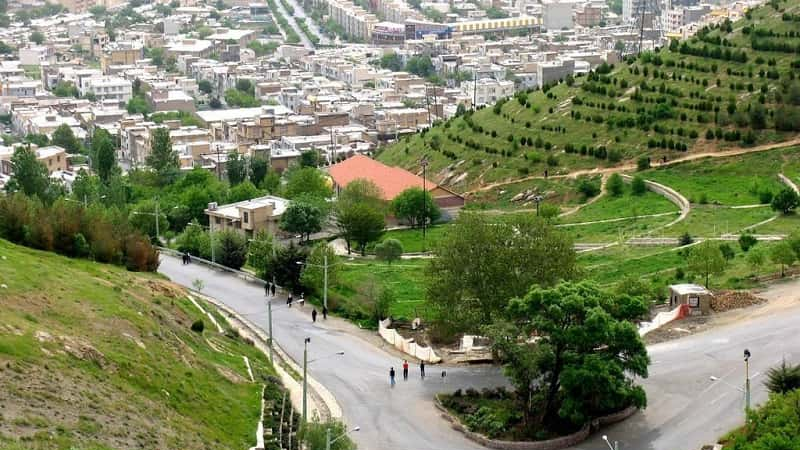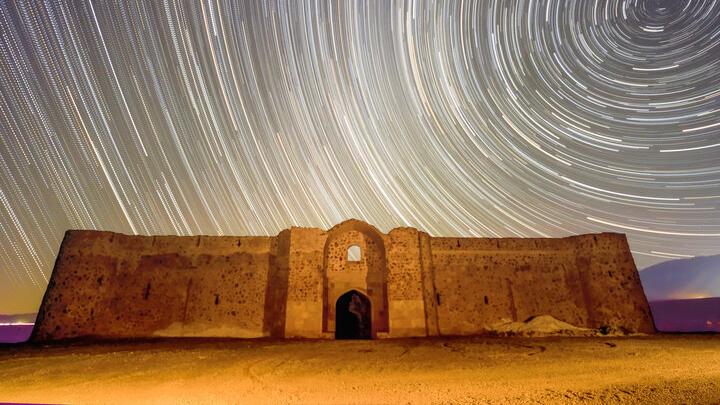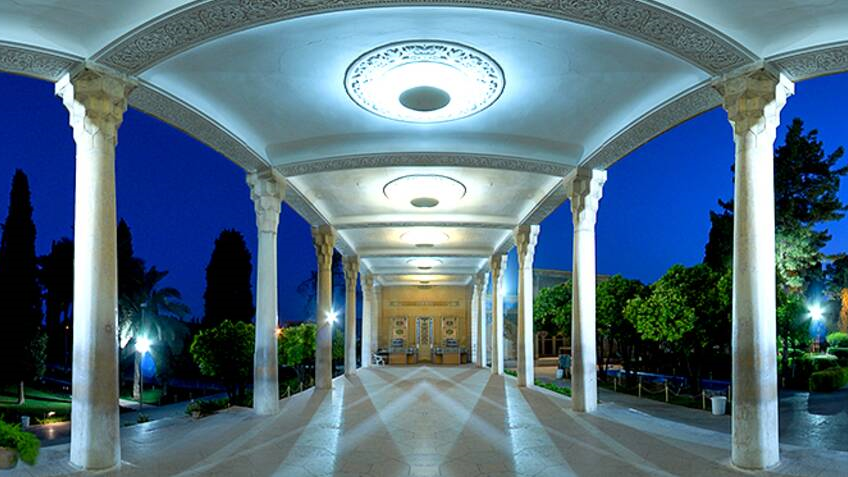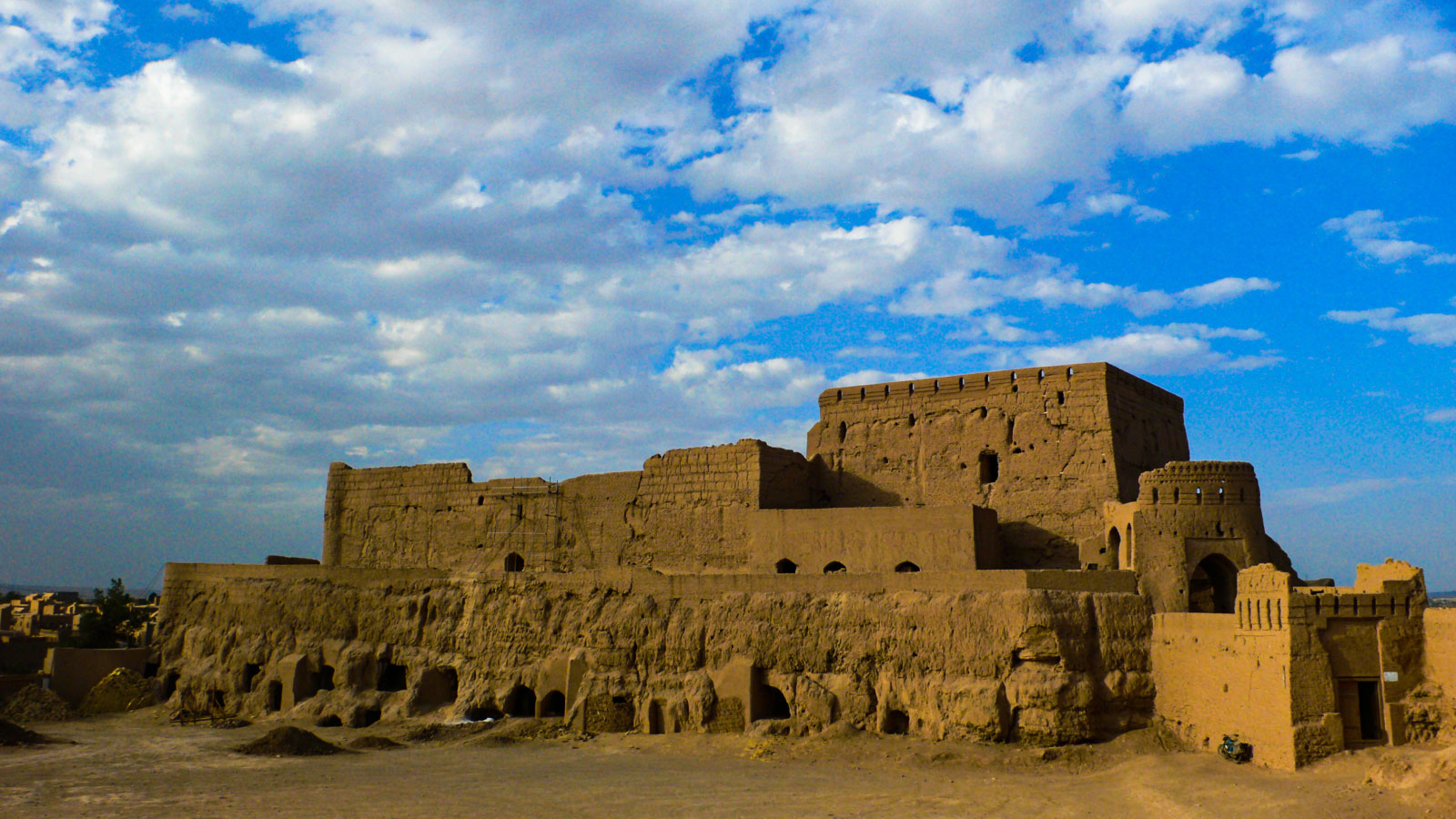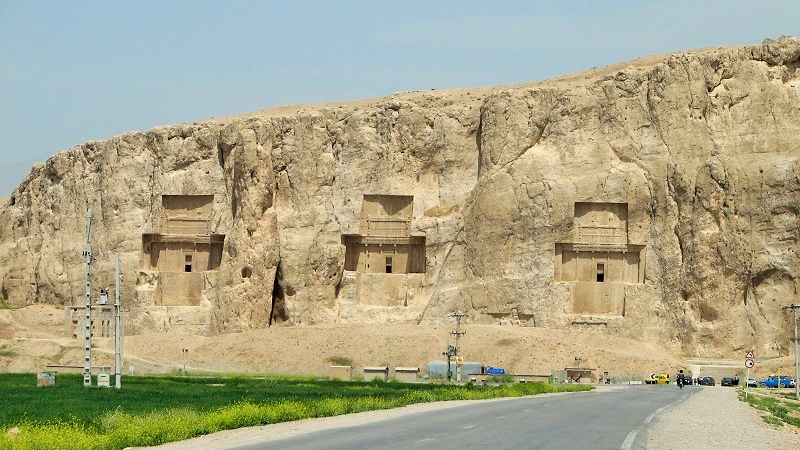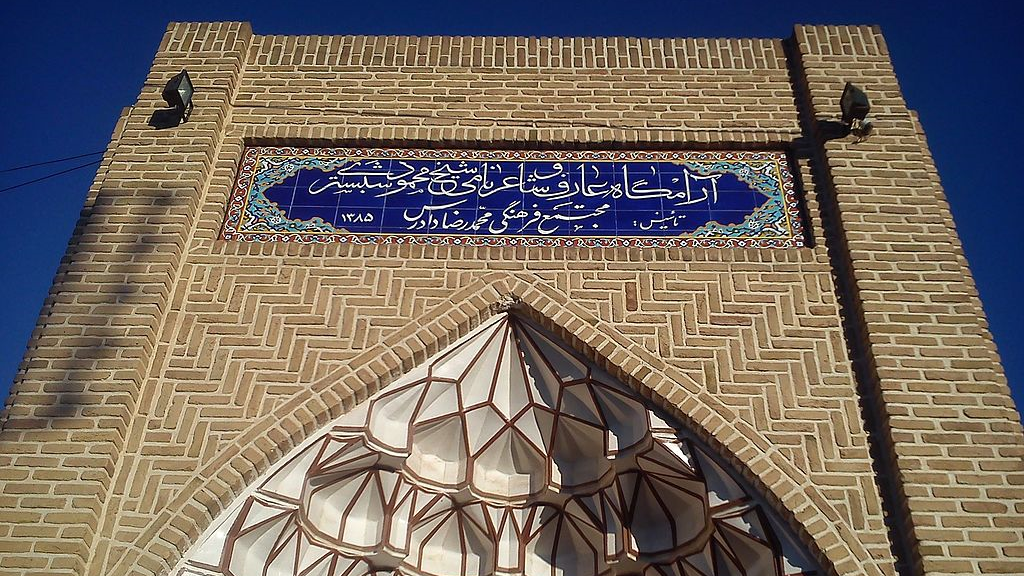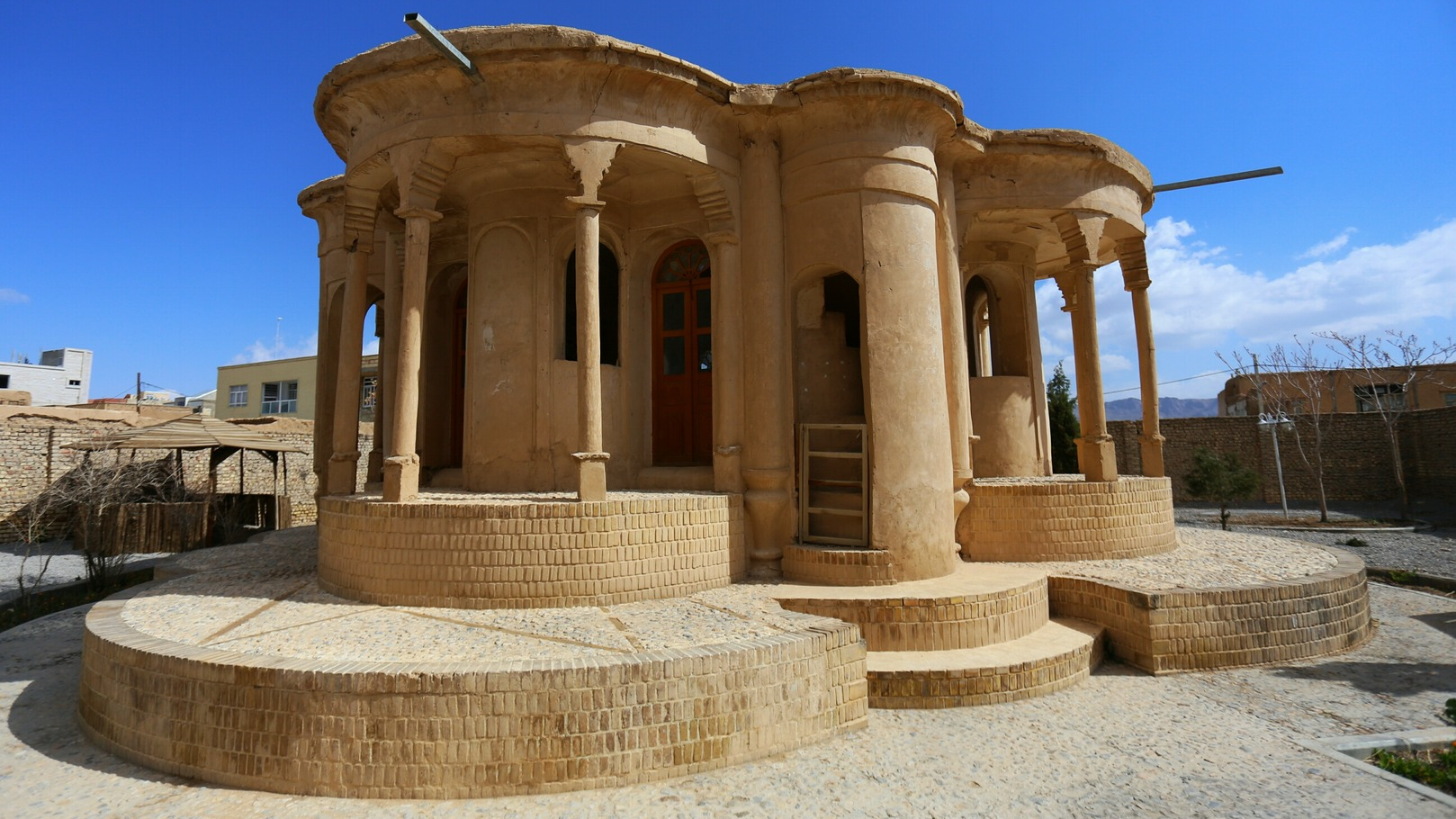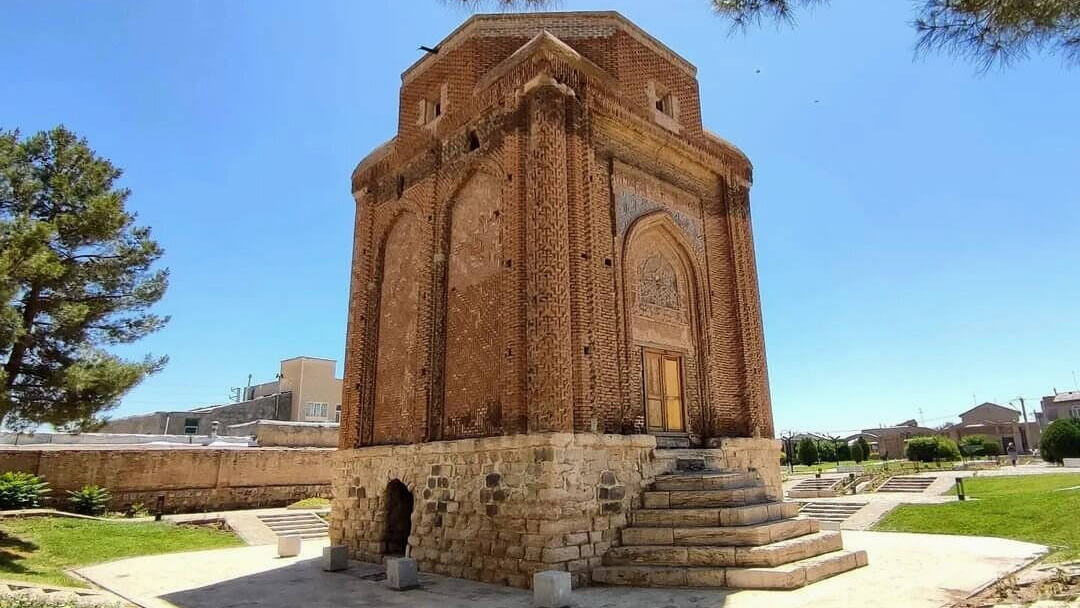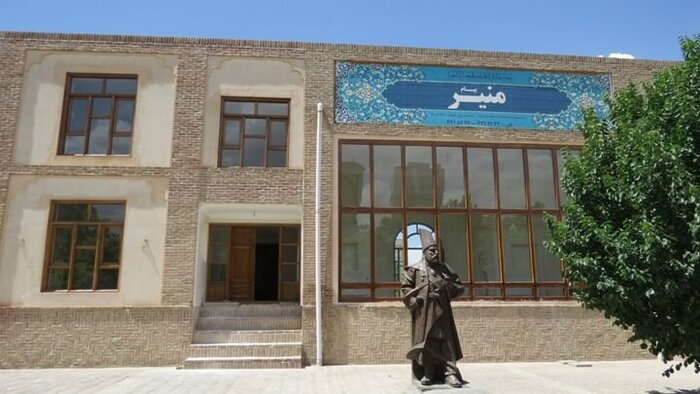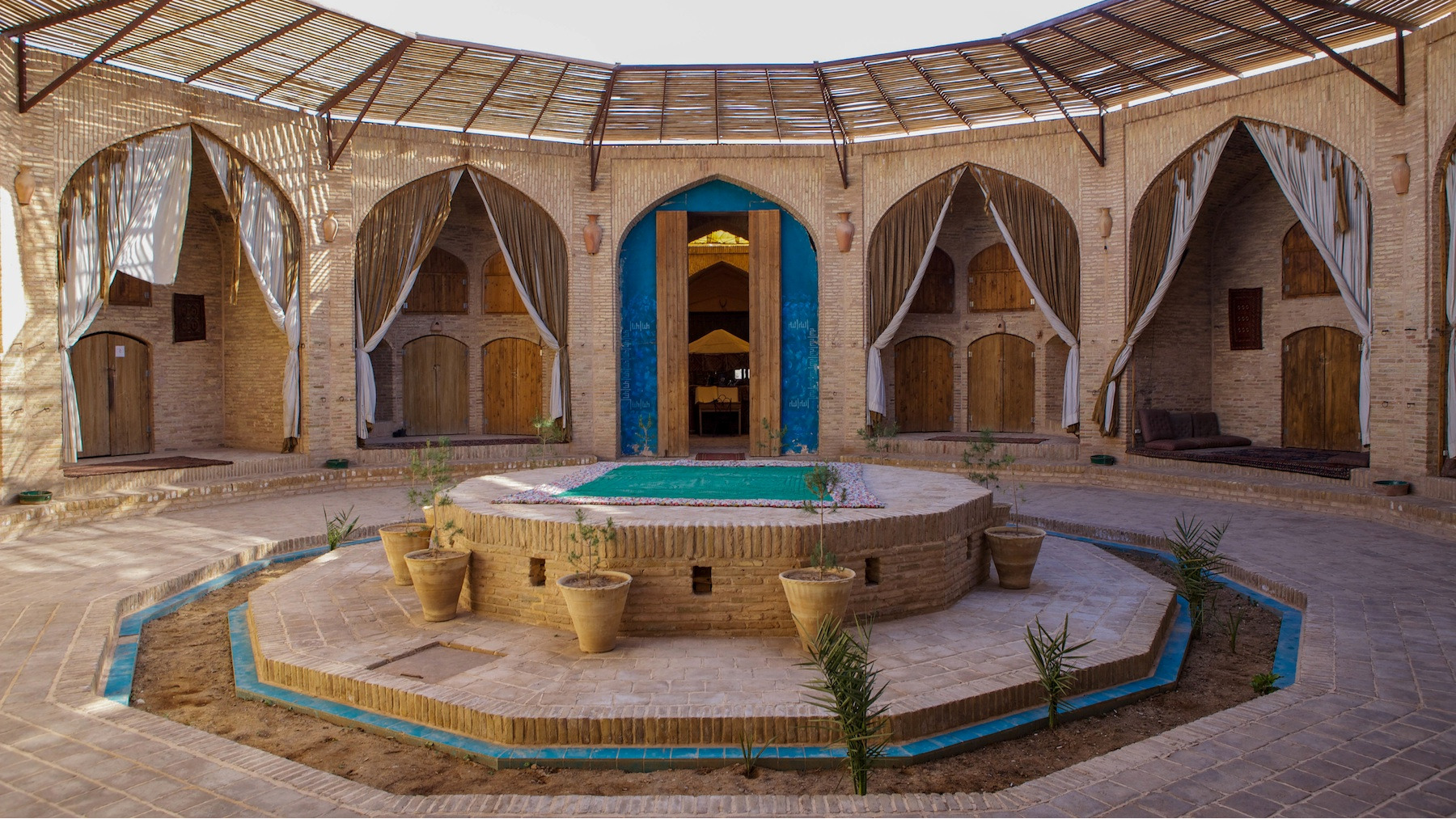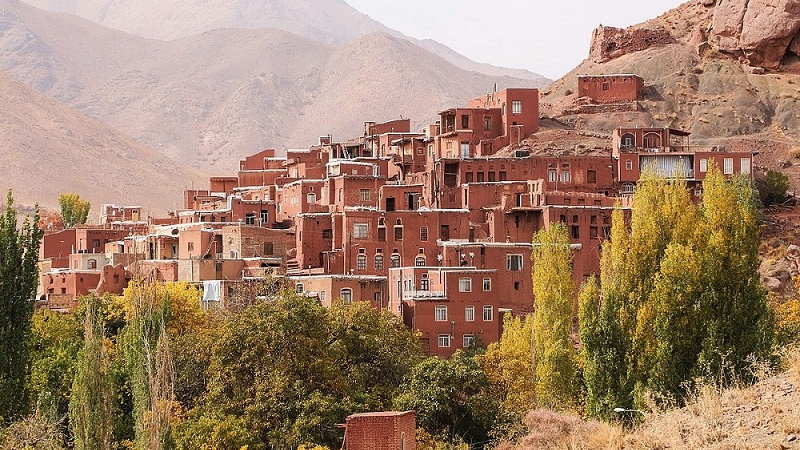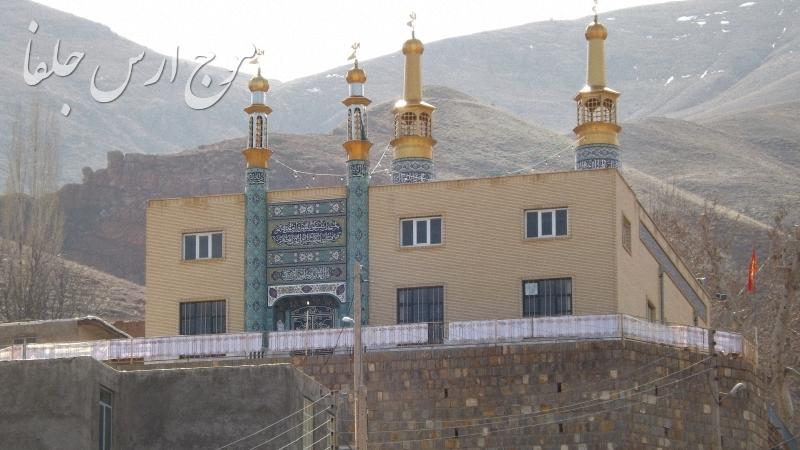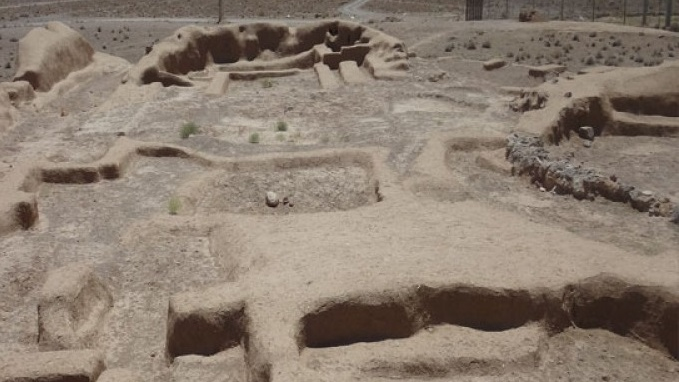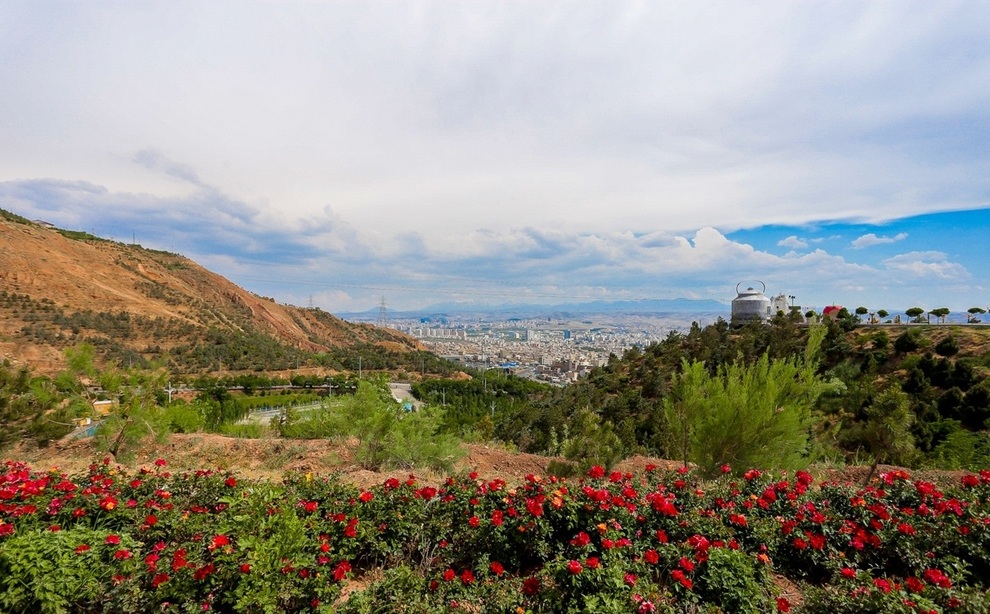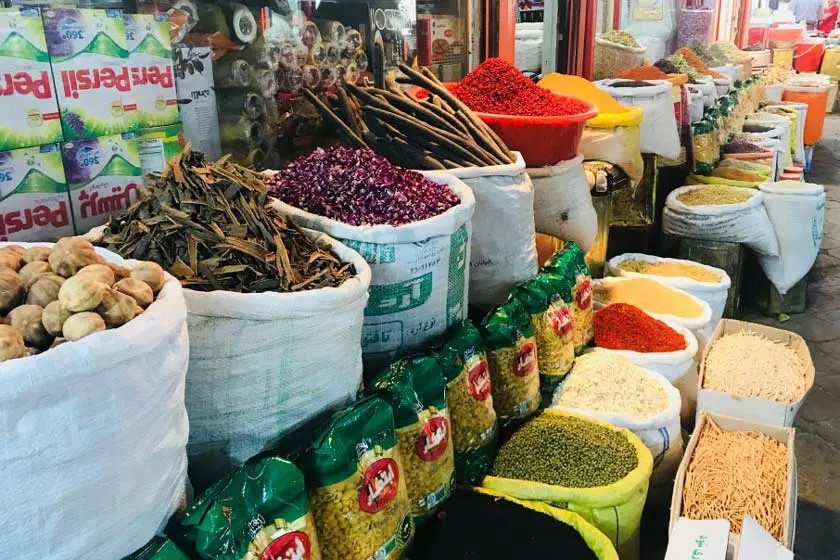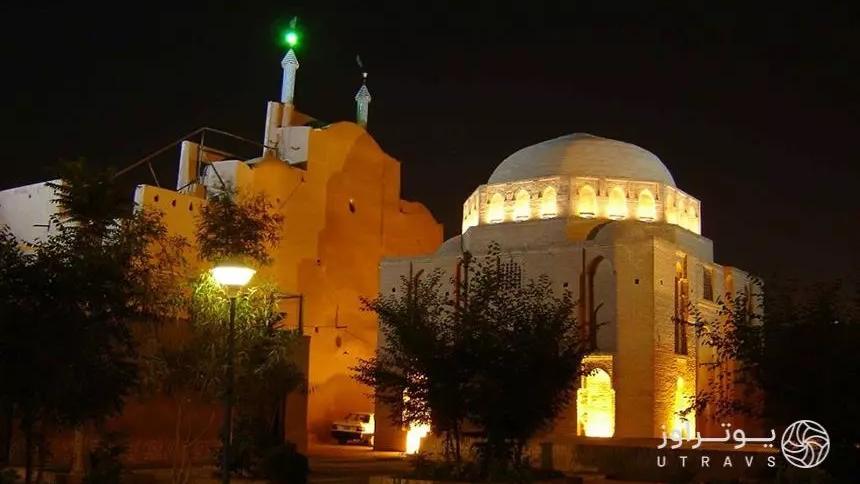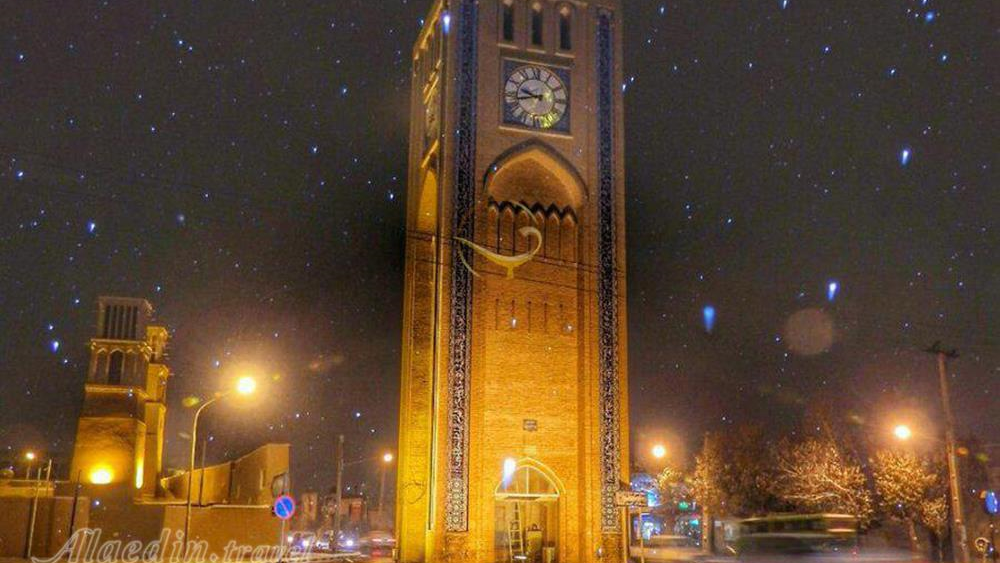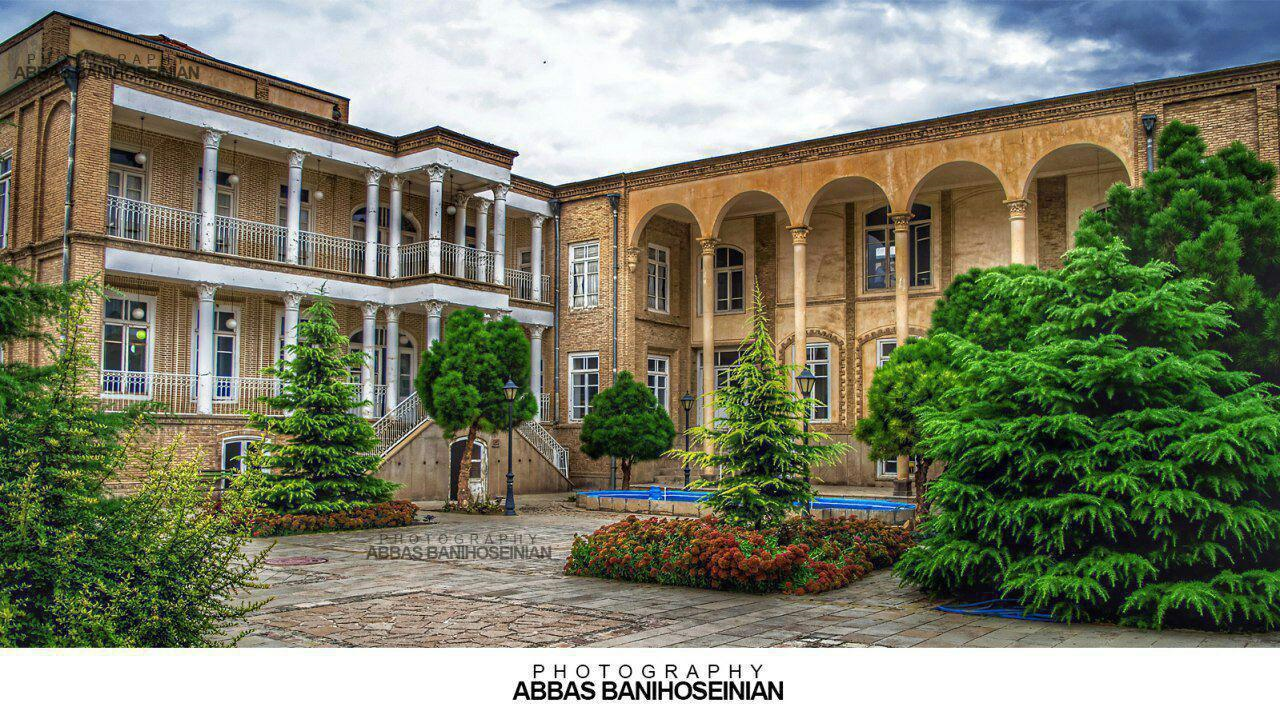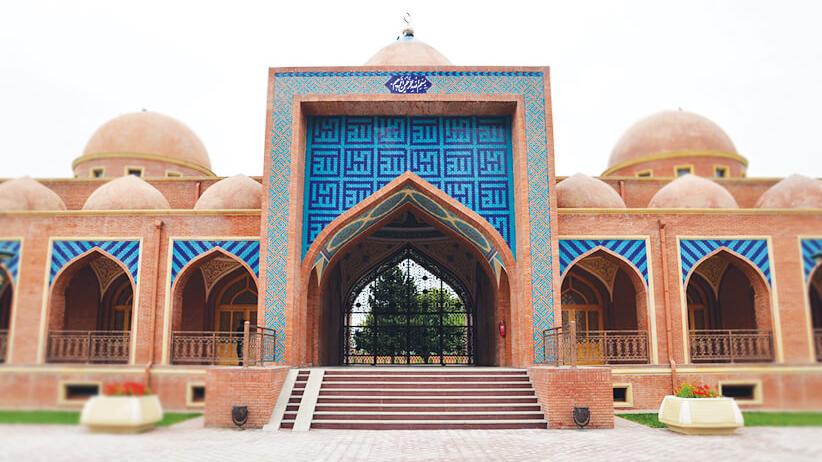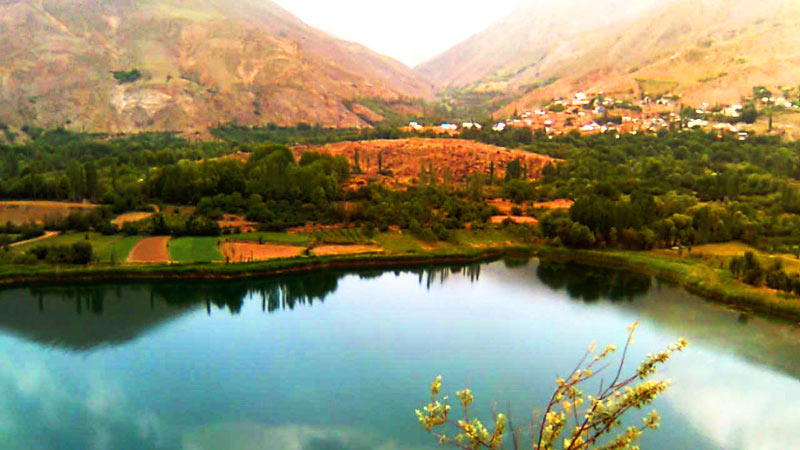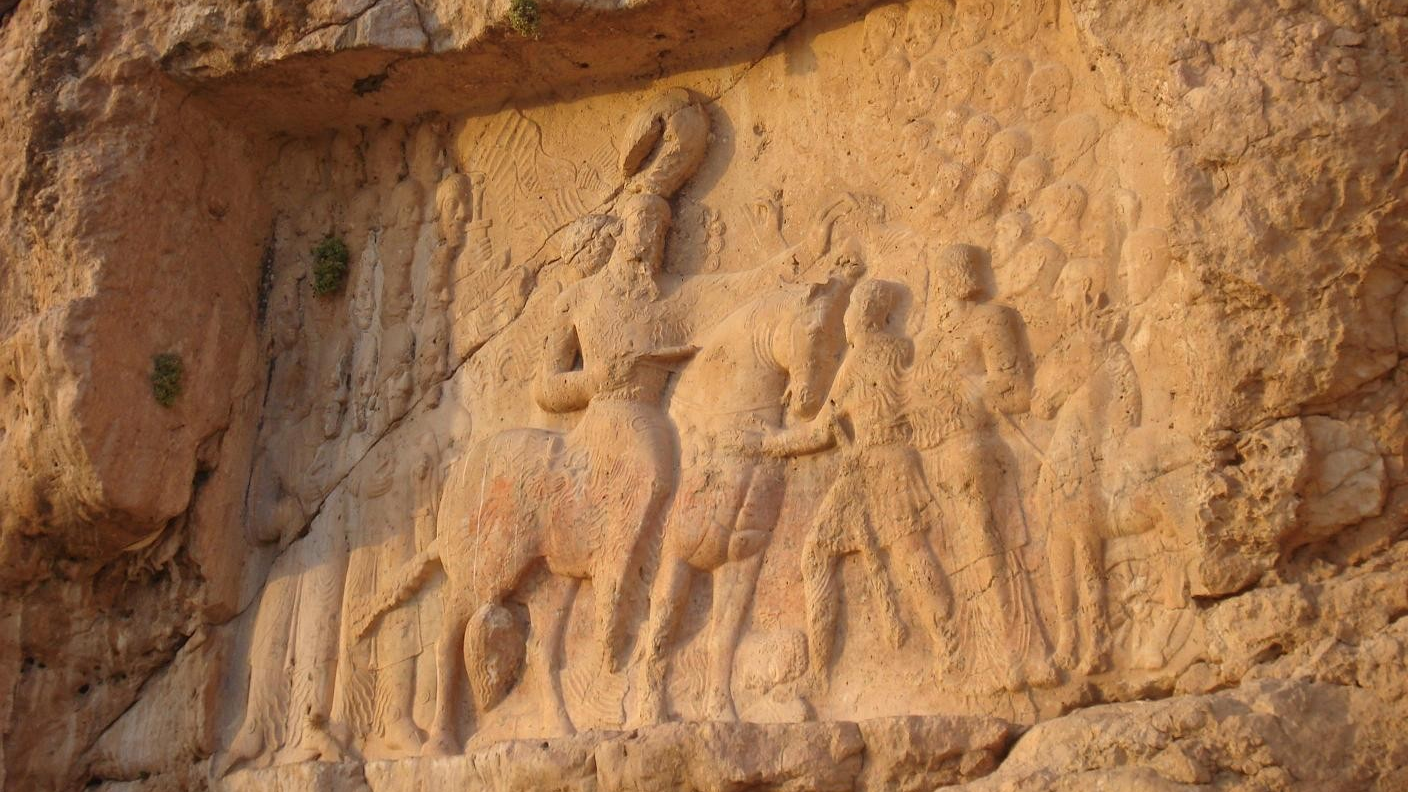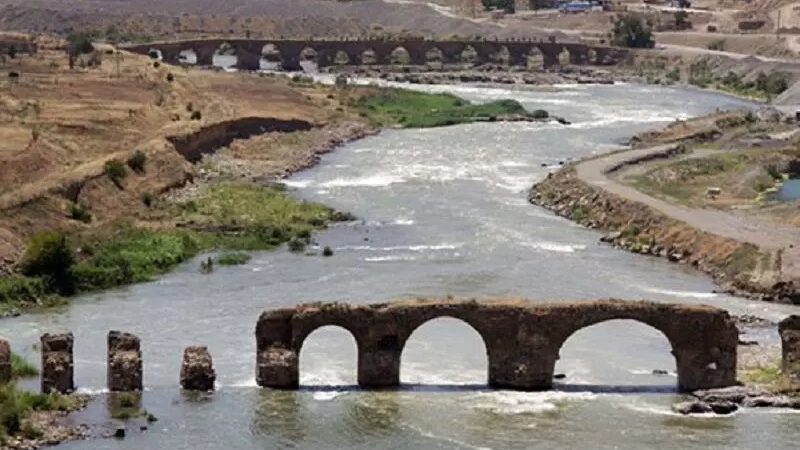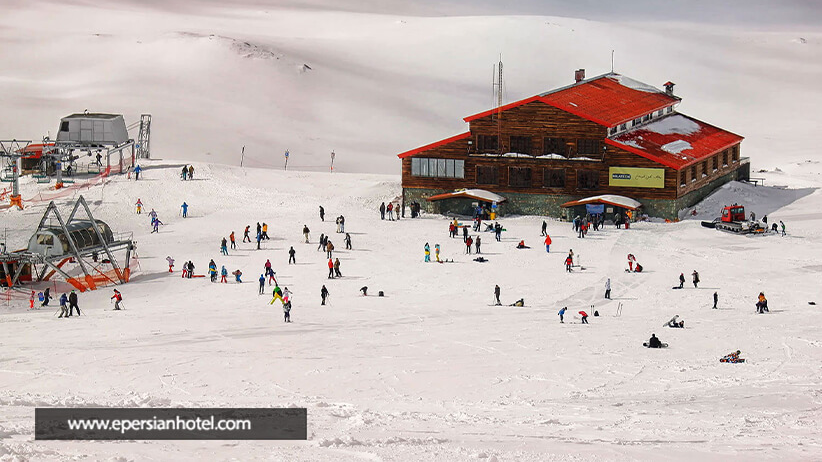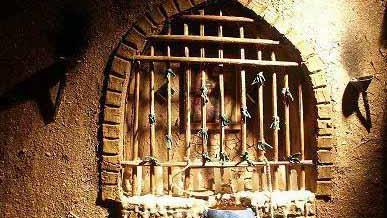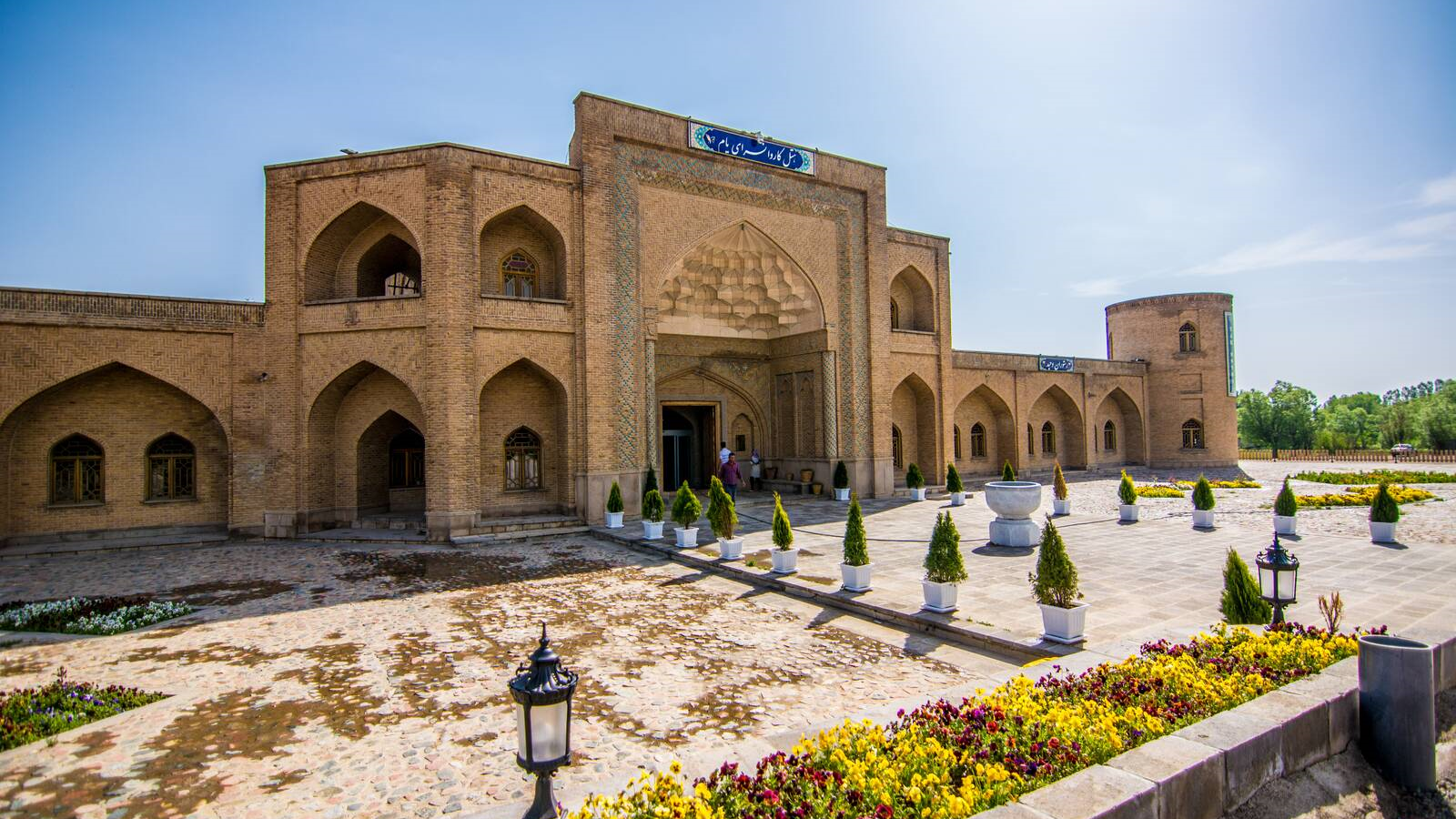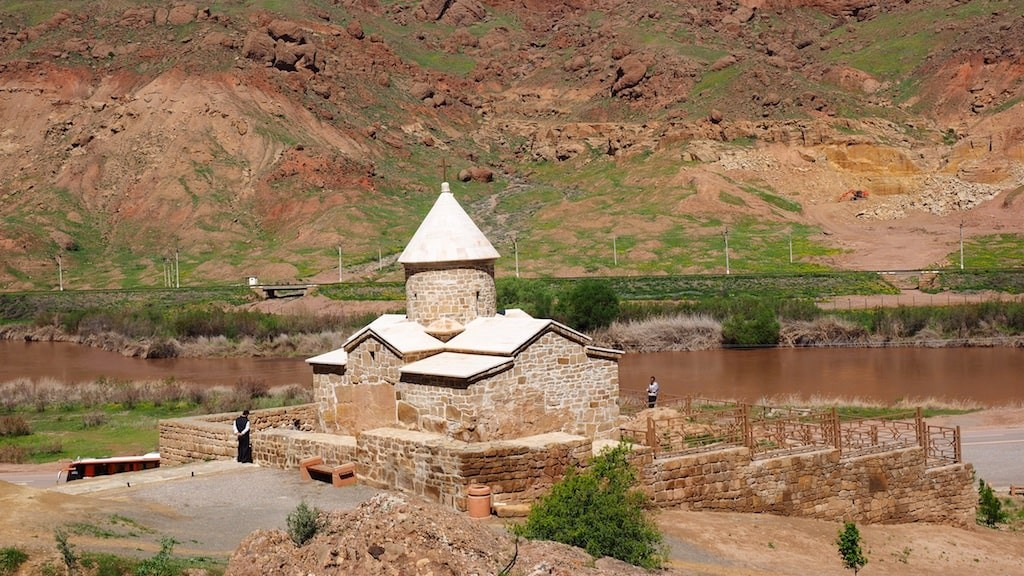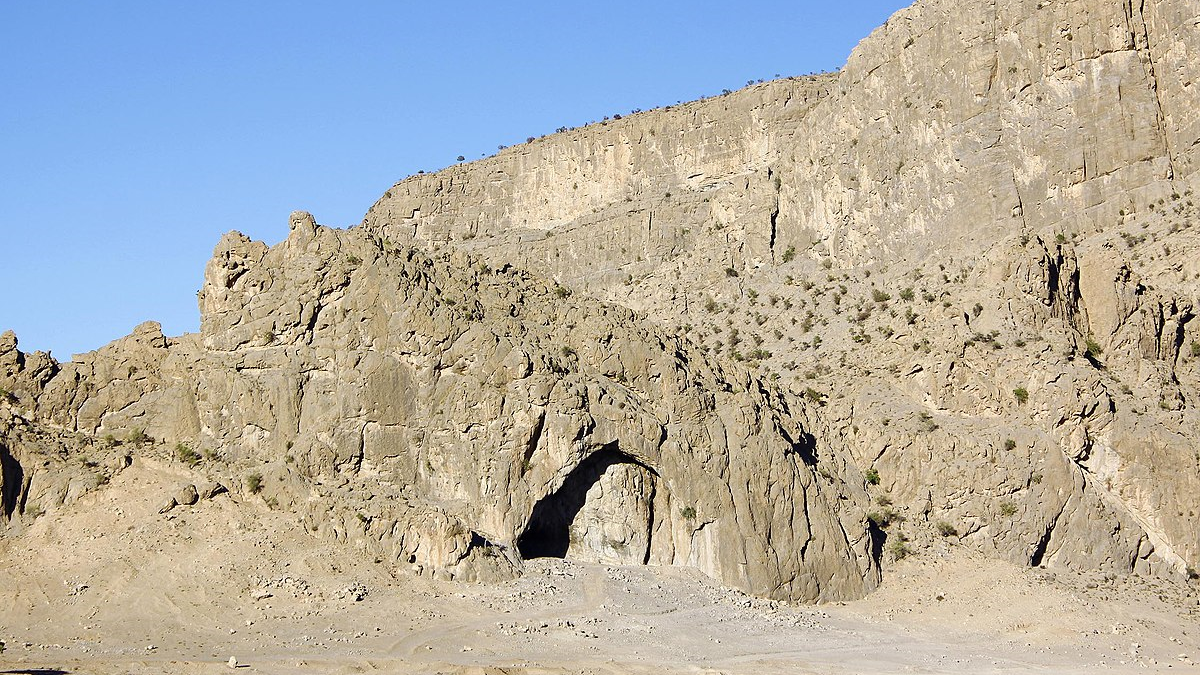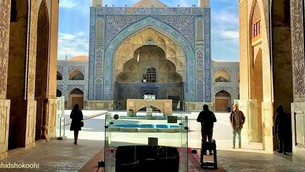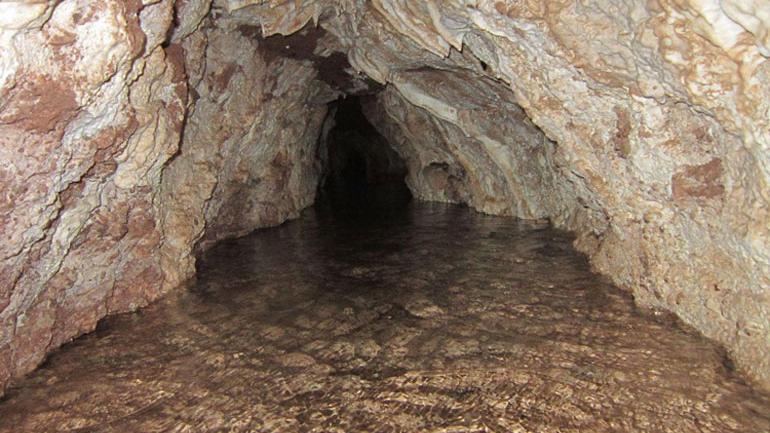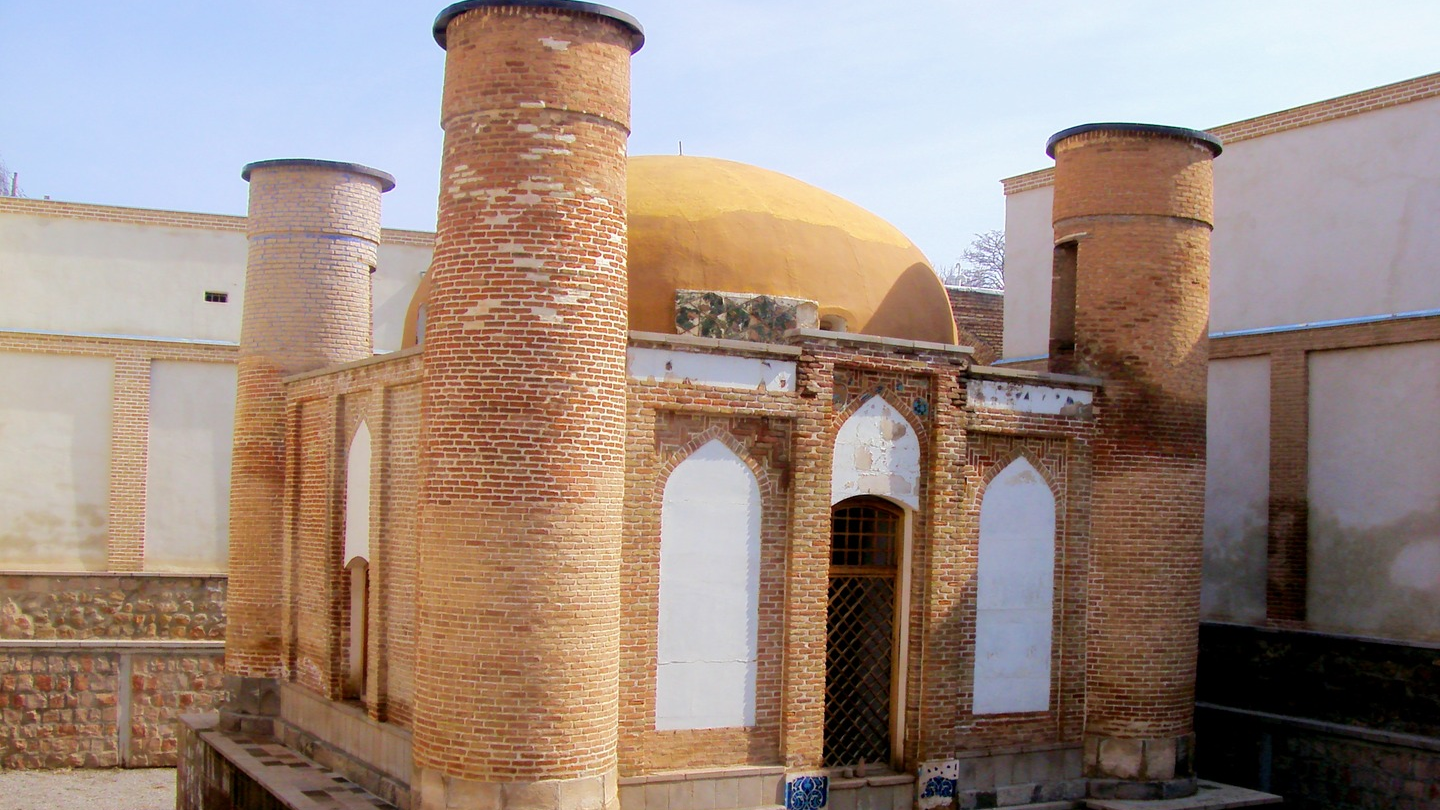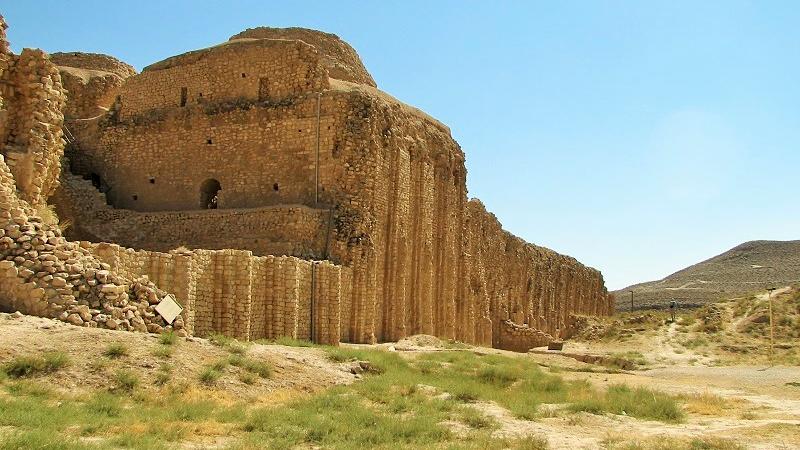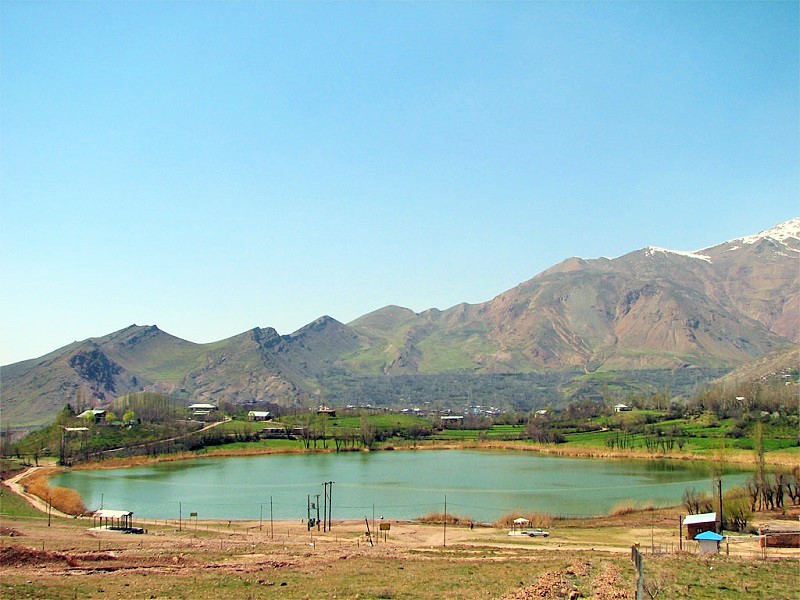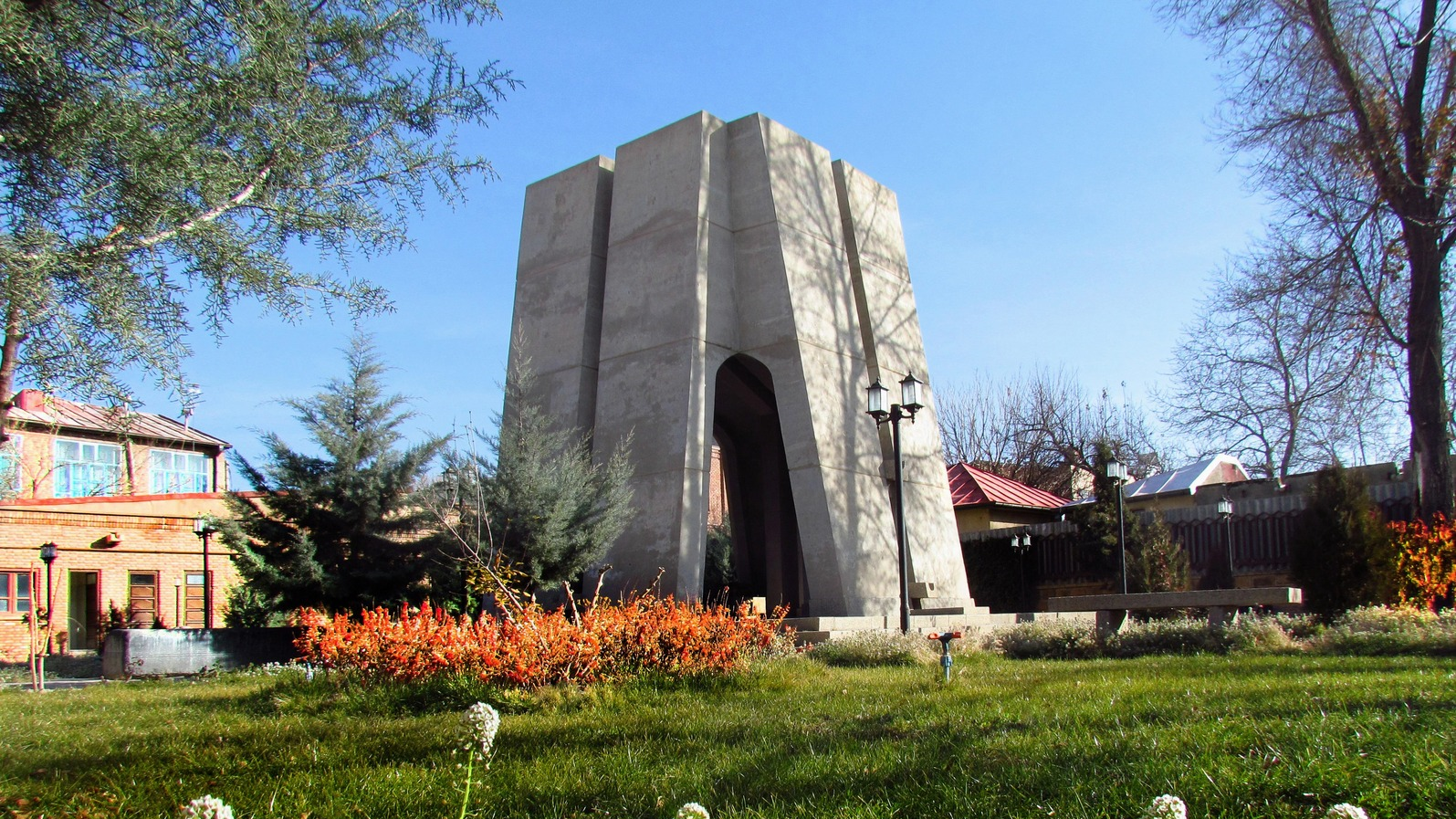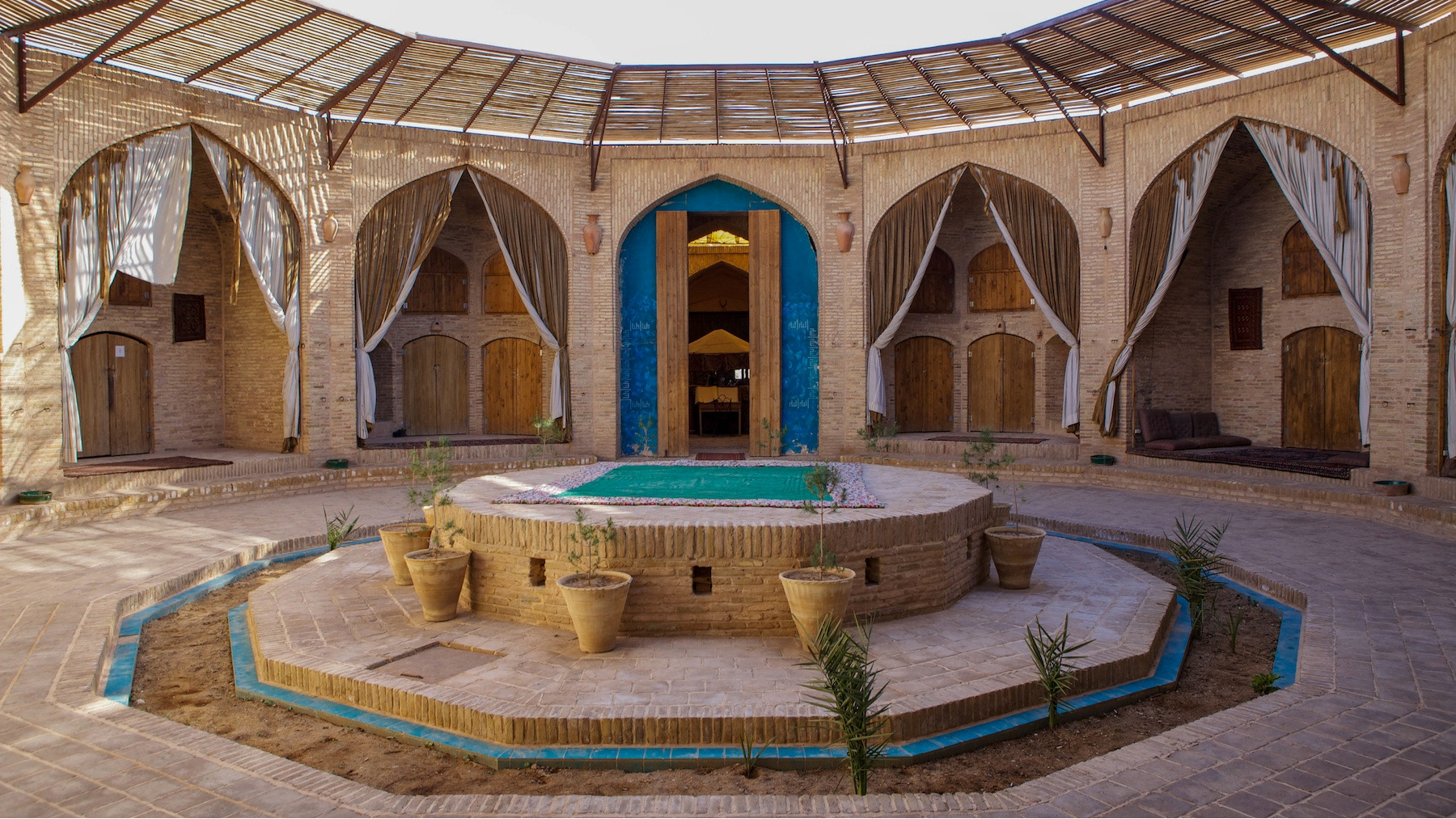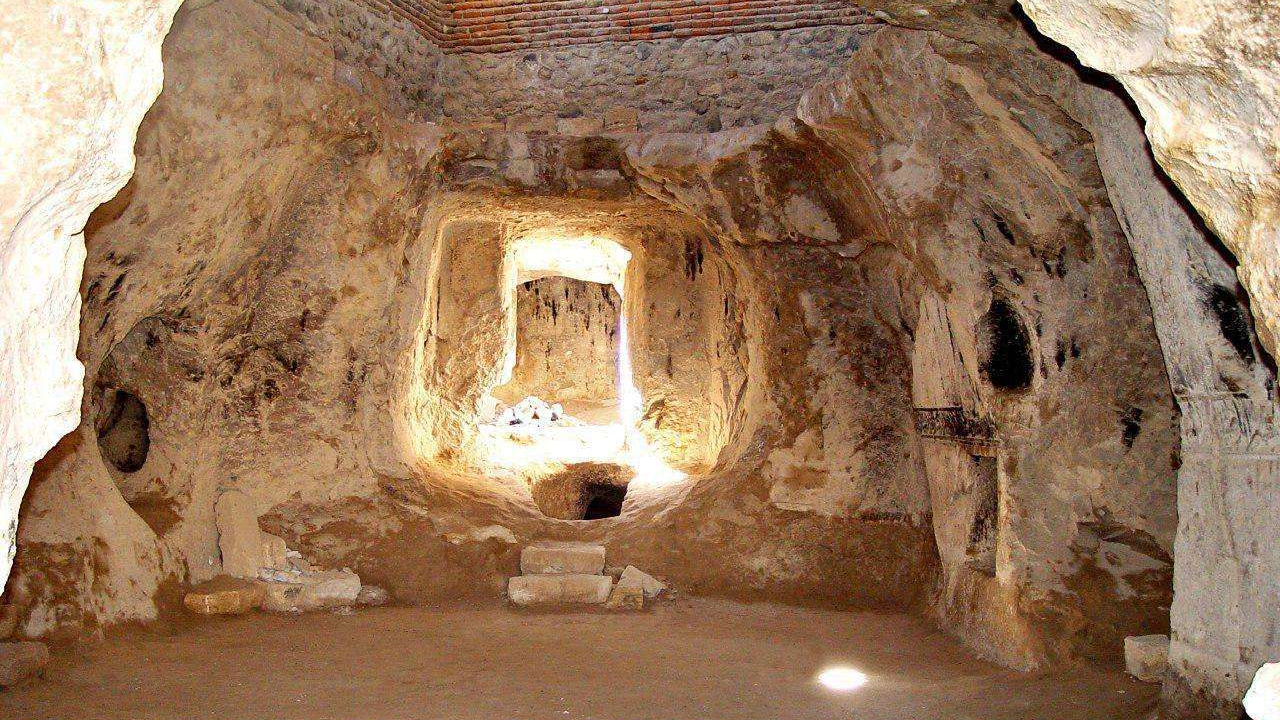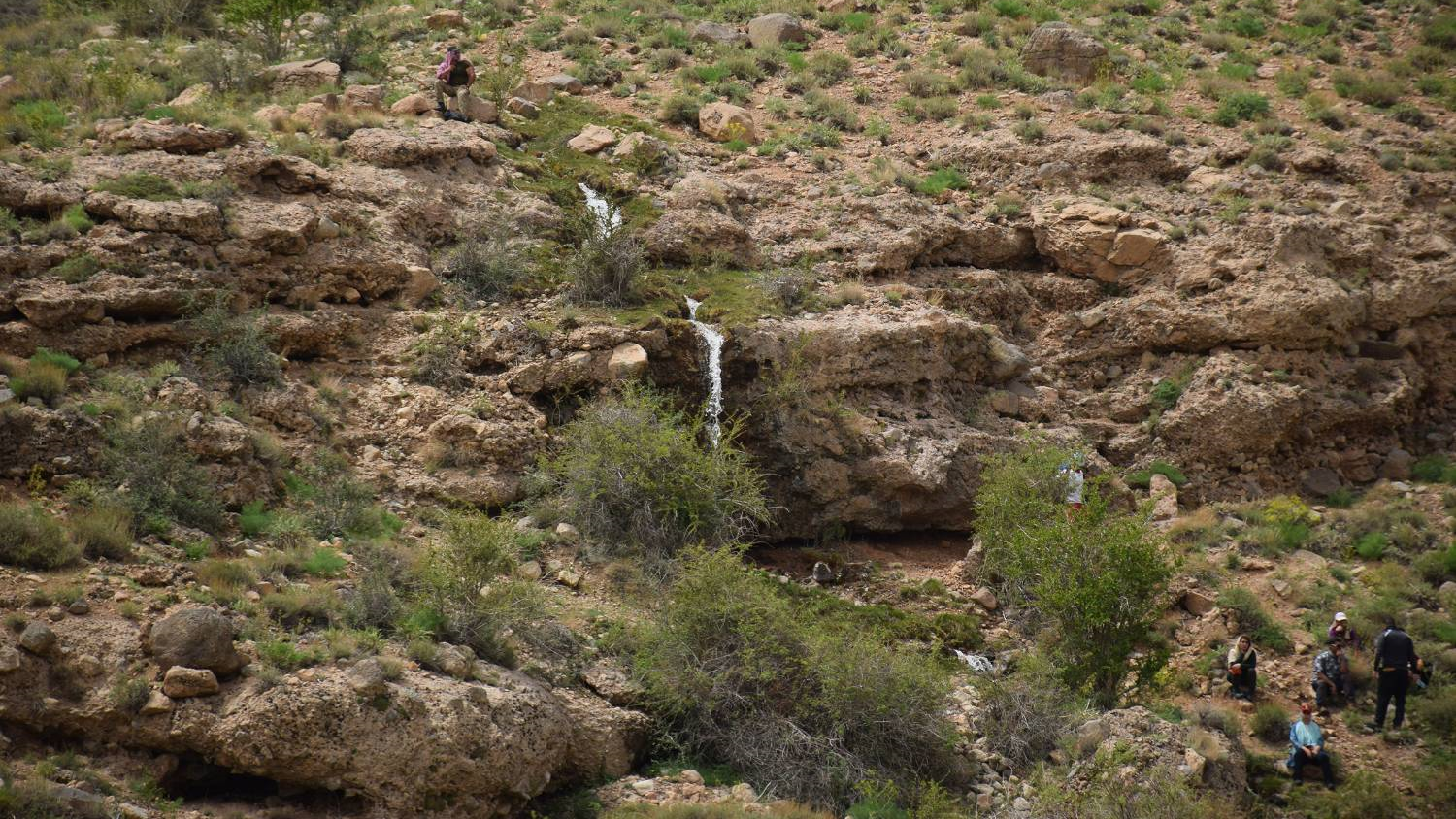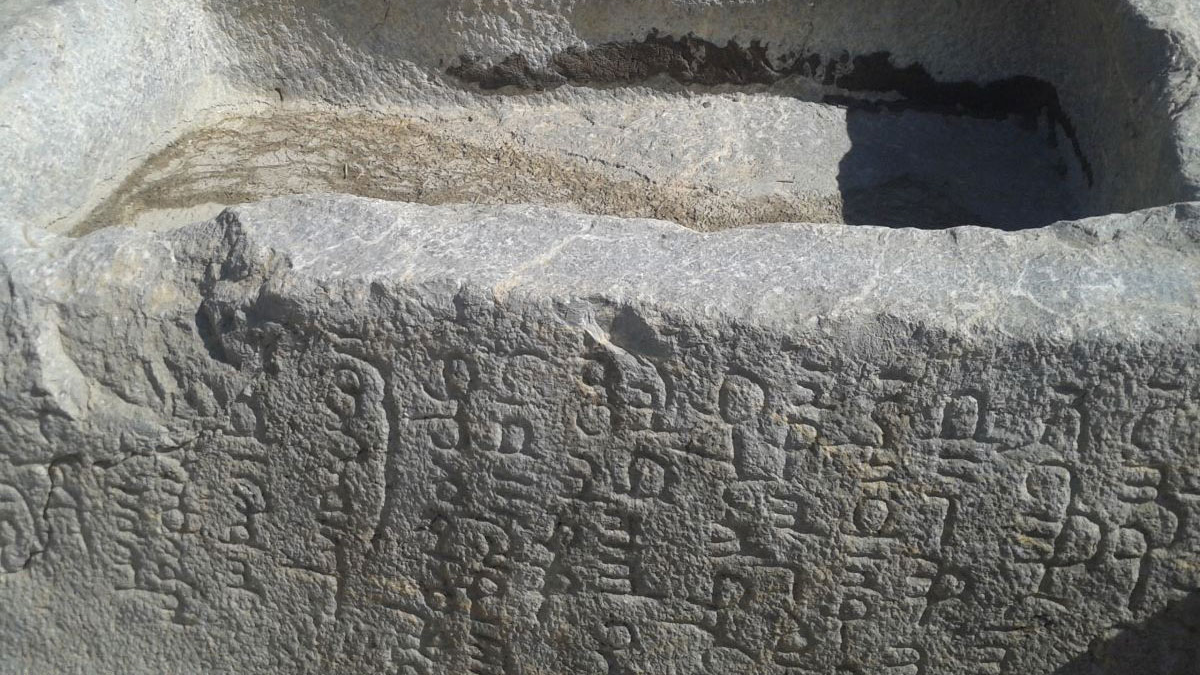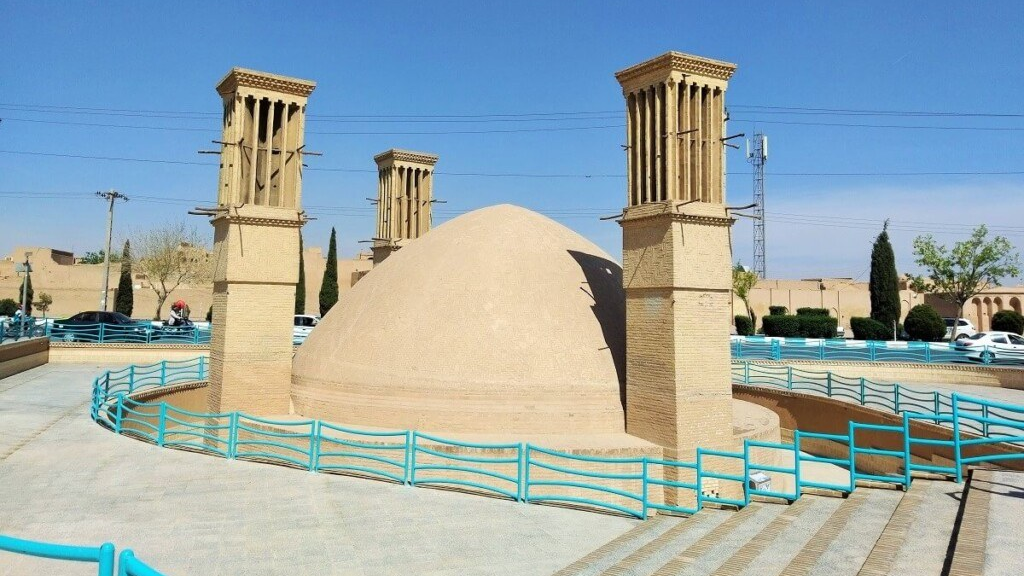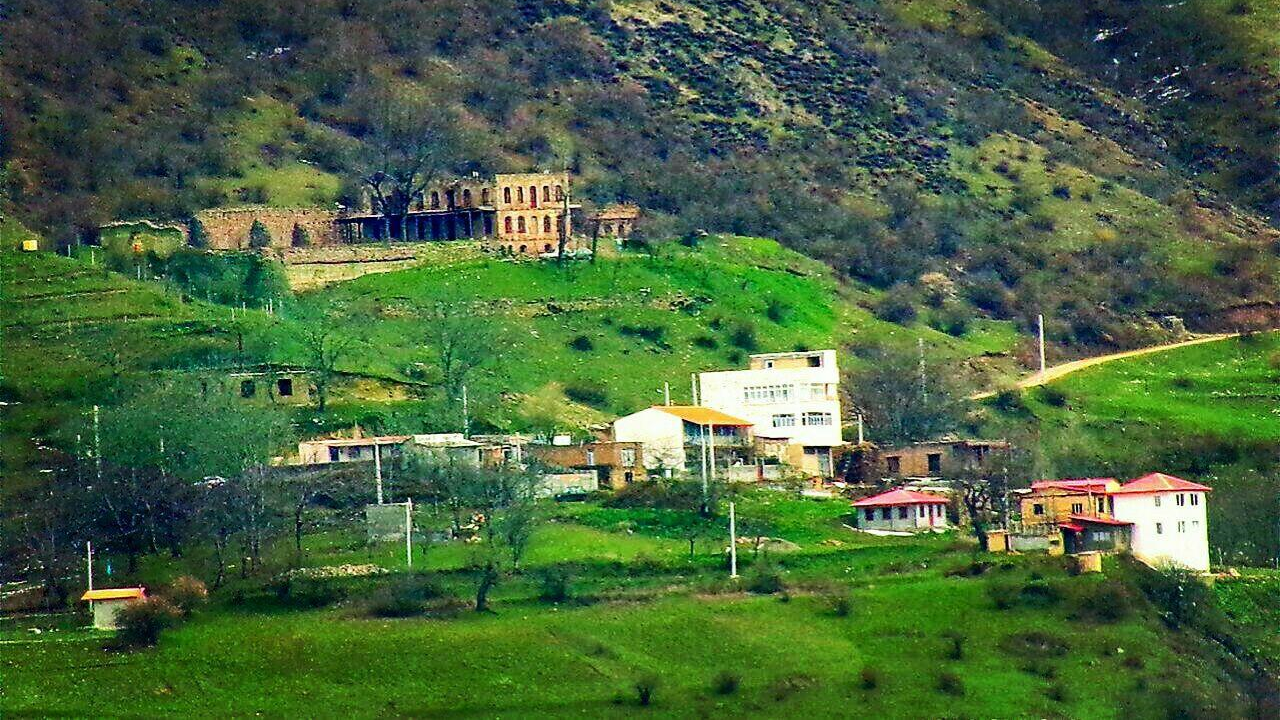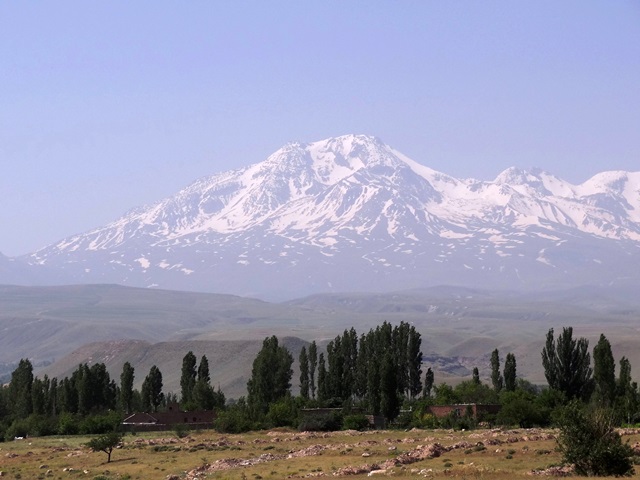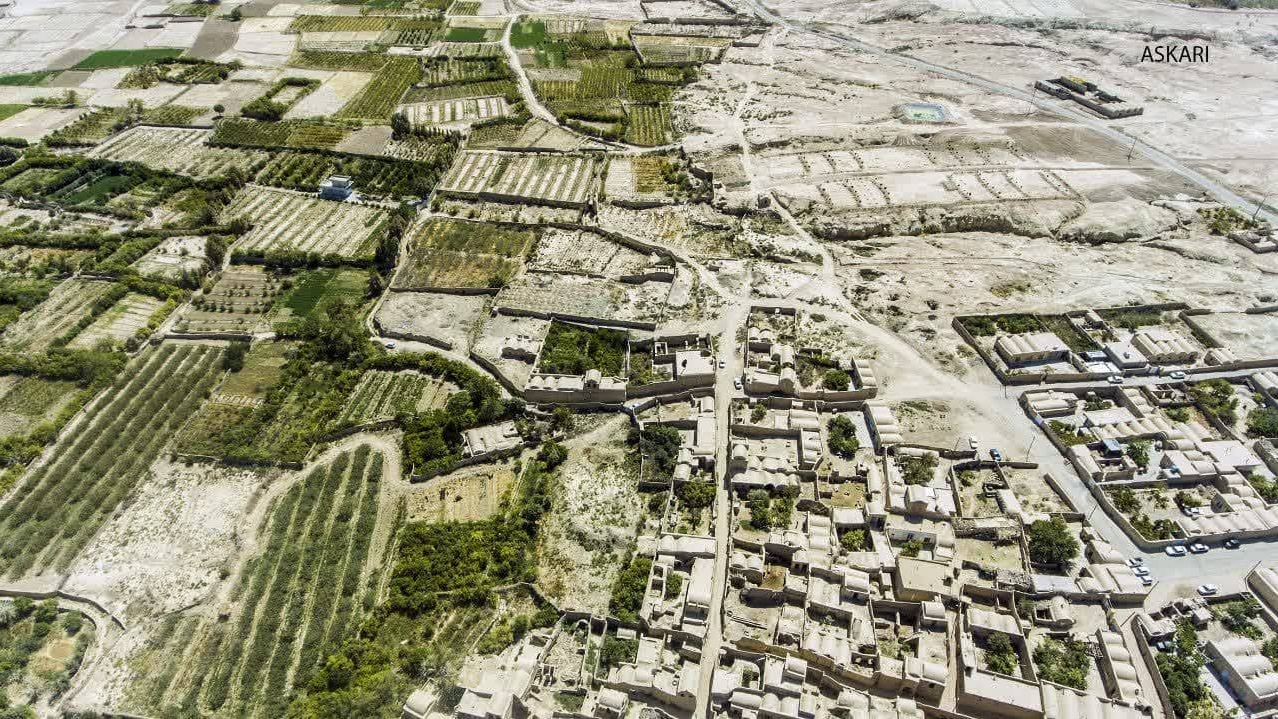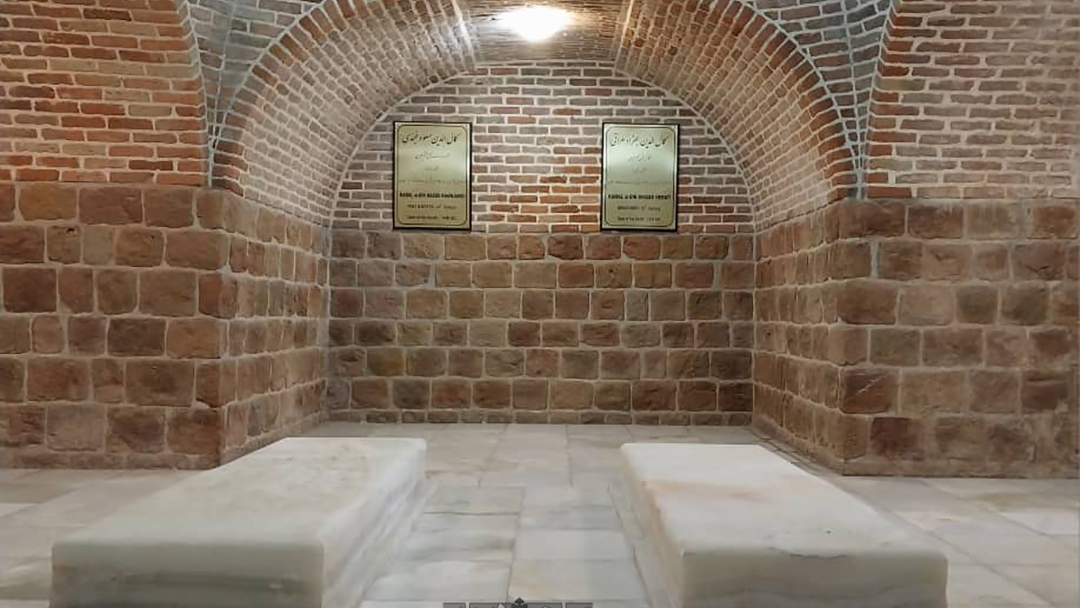
Qalat Village of Shiraz
Among the natural attractions of Fars province, Qalat village is one of the exemplary destinations that has gained special fame because of its pleasant weather and attractive sights. The stone-paved path, terraced houses, green trees, unique nature, flowing springs, and deep valleys are beautiful attractions of this village that can leave tourists with pleasant memories.
Where Is Qalat Village Located?
Qalat is a yaylak village in the central part of Shiraz County, which is located 36 km northwest of Shiraz City and is 940 km away from Tehran. To reach the village, one has to travel 25 km on the road from Shiraz to Sepidan (Ardakan) where a sign shows the route to Qalat Village.
This mountain village is located at an altitude of 2065 meters above sea level, and because of the terraced texture of its houses, it was inscribed - as the first historical rural area of Fars Province - on the list of Iran’s national heritage in the year 2019 AD.
The village is located at the foot of a mountain called Qalat and is surrounded by mountains from three sides and the only way to access it is from the south.
Features of Qalat Village
The flow of the Qareaghaj River, which originates from a peak called “Tasak”, has made this village exceptionally beautiful. The village consists of two parts, the Old Qalat and the New Qalat, and entering the village begins at the New Qalat. The old part of the village and Qezel Arsalan Street are located behind the new part.
Since Qalat Village is located at the foothill of a mountain, its houses are built in such a way that the courtyard of each house is the roof of the lower house. The houses in the village are mostly one-storied, but there are also some two-storied houses among them.
The main materials used in the construction of the houses of the old part of the village are stone, clay, mud, plaster, and wood, while the houses of the new part are built with stone, cement, iron bars, and brick, which have made it possible to make multi-story houses in this part.
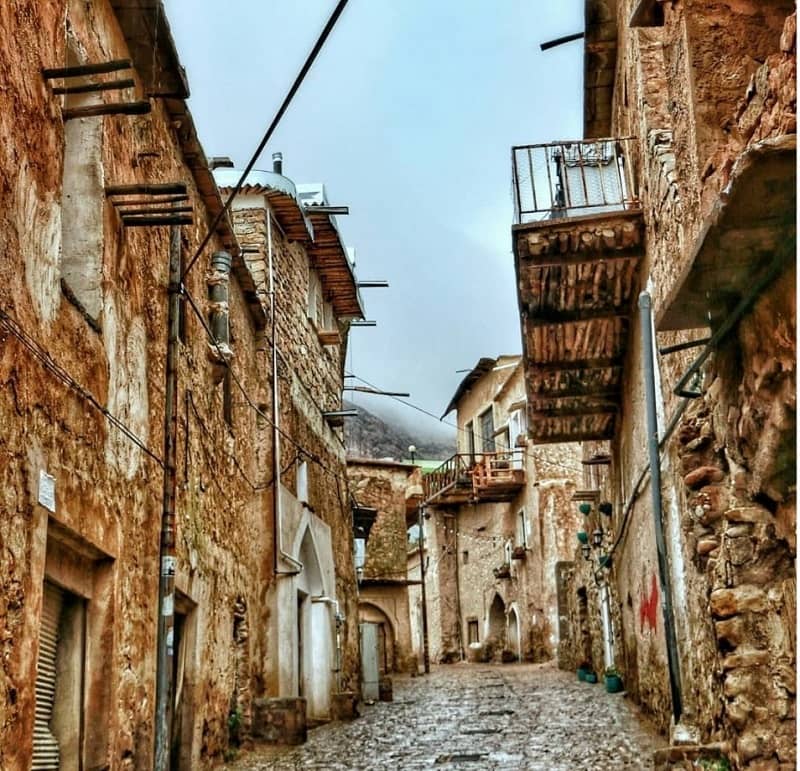 A view of the old fabric of Qalat village
A view of the old fabric of Qalat villageThe streams flowing in the winding streets of the village and the wilding plants and flowers by the side of these streams make the pleasure of walking in the alleys of the village infinite. Yarrow, hollyhocks, maidenhair fern, rhubarb, spear thistle, mountain thyme, pennyroyal, savory, mountain almond, ziziphora, echium, etc. are among the plants that grow in abundance in the village.
Geography and History of Qalat Village of Shiraz
Due to its unique features, Qalat was a resort for kings in the past. Qalat Village has a population of about seven thousand people. The dialect of the people of this village is a remnant of Southwestern Middle Persian and is similar to the Lori dialect. Like their ancestors, the people of the village wear Qashqai clothes in the ceremonies they attend. Agriculture and horticulture, along with animal husbandry, is the most important occupation of the people of Qalat Village. This village can also be considered one of the hubs of “Giveh” production in Fars Province.
Tourist Attractions of Qalat Village
There are many natural and historical attractions in Qalat that make visiting it a memorable trip for tourists. Some of these attractions include:
Historical Attractions of Qalat Village
- Qalat Castle or Qezel Arsalan Castle, which is related to the 12th century AD and the Atabakan era. This castle is located on top of a hill.
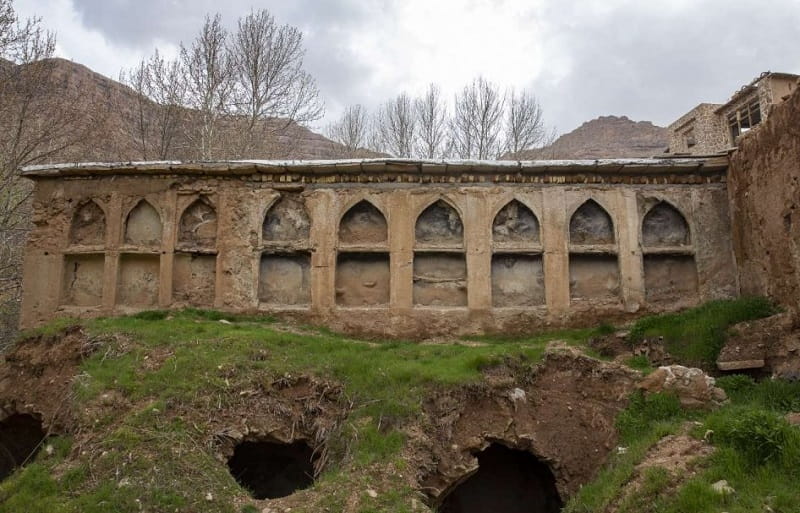 Qalat Castle
Qalat Castle- A church that was built with stones in the early 20th century.
- A private museum that was founded by one of the young people of the village and old coins and objects are on display in it.
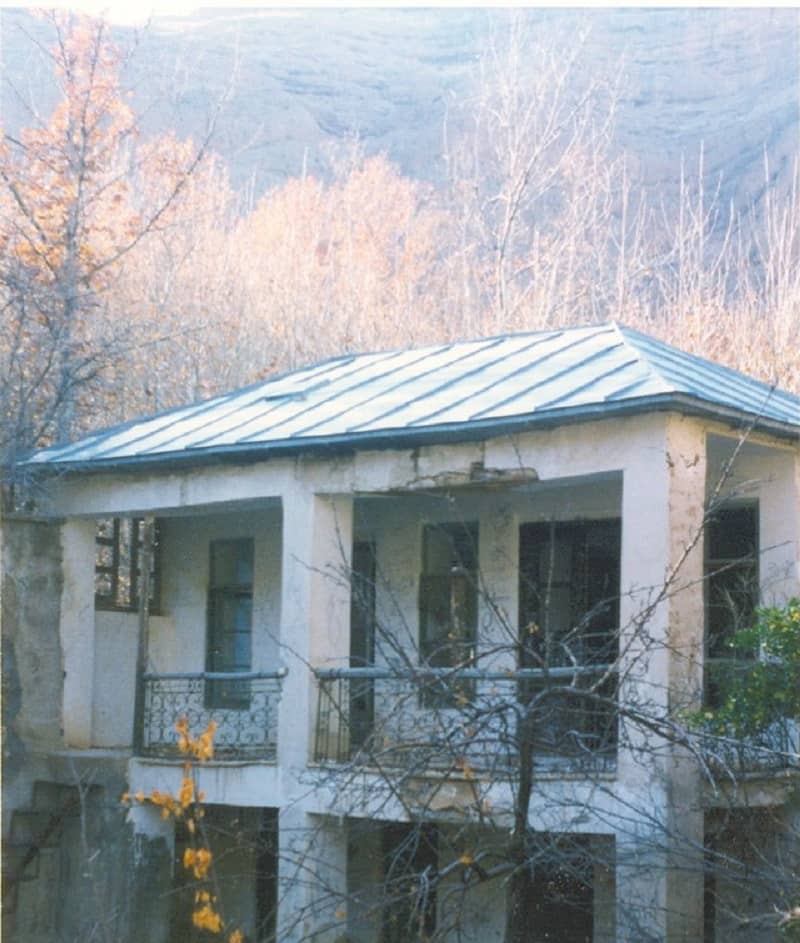 Qalat village church, Shiraz
Qalat village church, Shiraz- An old bathhouse, where, according to the villagers, Saadi, the famous Iranian poet, had bathed in the 13th century AD.
- A 250-year-old mosque with one minaret.
Natural Attractions of Qalat Village
There are three beautiful waterfalls at the foothill of Mount “Kuhsorkh”, two of which can be easily accessed. The waterfall, which is smaller than the other two, is two kilometers away from the old part of Qalat Village. Apart from that, there is also a recreation resort by the “Shab Shotory” River.
Customs of Qalat Village
One of the most important rituals in Qalat Village is singing a song called “Washang”, which is sung at weddings and is similar to “Vasunak” (An Iranian folk song from Shiraz). The traditional game of the village is “Tarkebazi” or “Choobazi”.
Qalat Village was inscribed - as the first historical rural area of Fars Province - on the list of Iran’s national heritage in the year 2019 AD.
| Name | Qalat Village of Shiraz |
| Country | Iran |
| State | Fars |
| City | Shiraz |
| Type | Historical |
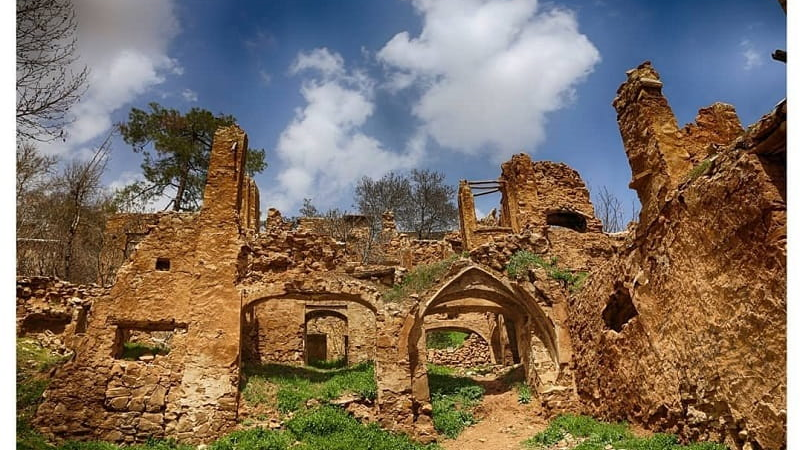
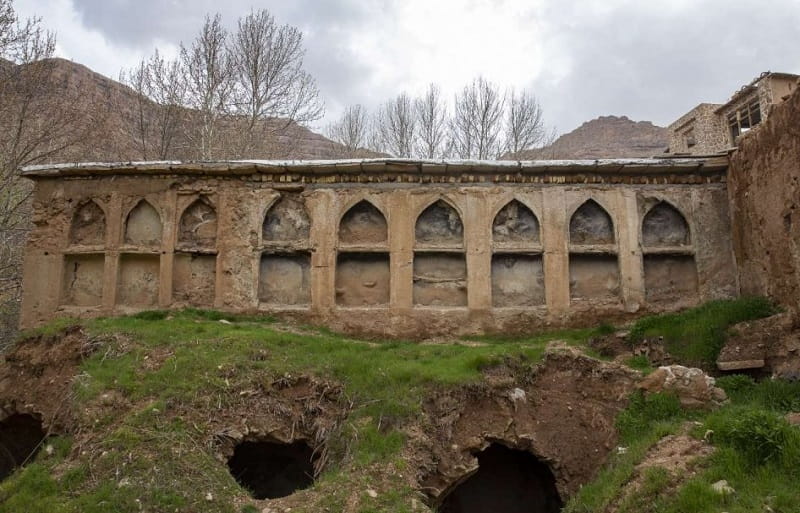
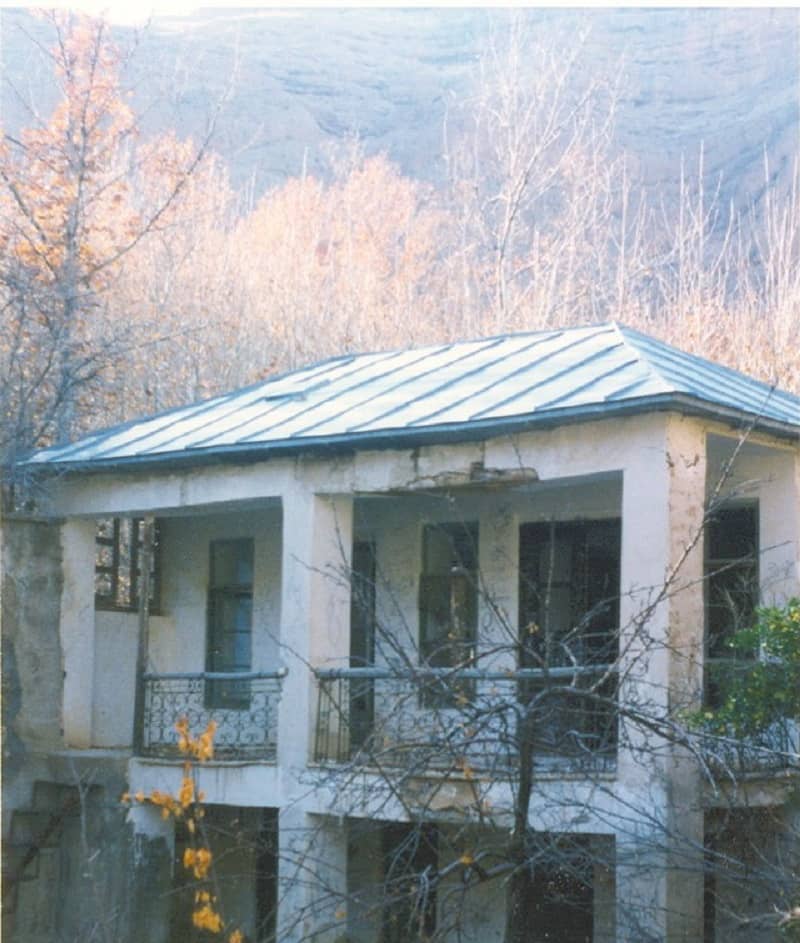
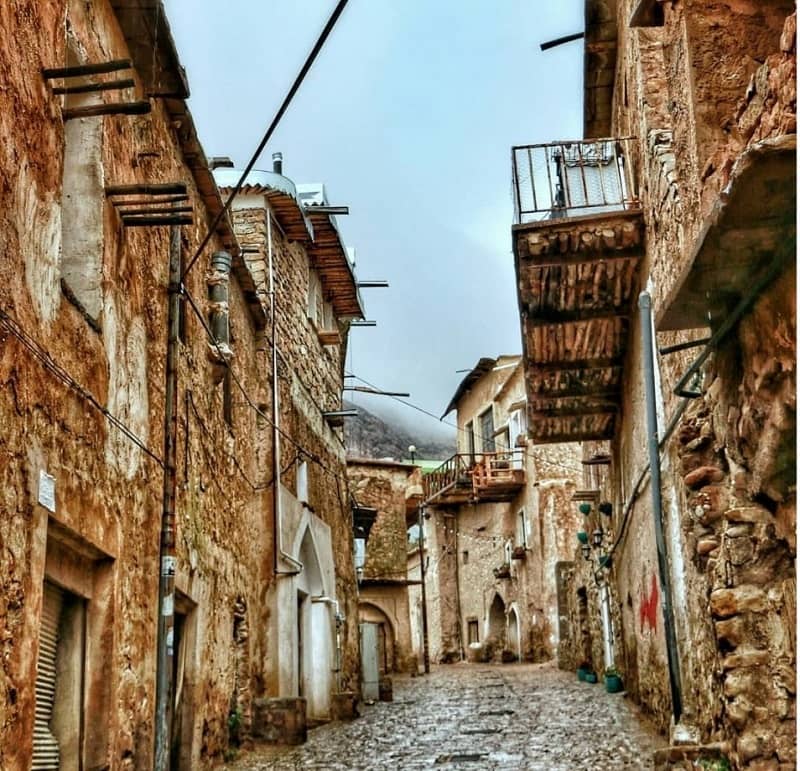





Qur’an Gate of Shiraz
Each of the cities of Iran had gates in the past through which commutation would take place. At times some ramparts were built around the city and used guard towers to protect the city from bandits and evildoers. Shiraz also had six gates in the past including the Qur’an Gate.
The Qur’an Gate of Shiraz is located in a gorge called Allah-o-Akbar and between two mountains called Chehel Magham and Baba Kuhi. This Gate is a unique attraction for tourists who are used to modern urban life. According to old stories, in the past, while entering Shiraz through the Qur’an Gate, people would get so amazed by the beauty of this gate that they would chant “Allah-o-Akbar”! Therefore, the hill where the gate of the Qur’an Gate is located is called “Allah-o-Akbar”.
The History and Geography of the Qur’an Gate of Shiraz
Shiraz had six gates in the past: Qur’an Gate, Isfahan Gate, Sa’di Gate, Qassabkhaneh Gate, Kazerun Gate, and Shah Dai Ela Allah Gate of which only the Qur’an Gate is still standing and the other gates have collapsed in the course of history. Qur’an Gate is located at the northern exit of Shiraz towards Marvdasht road.
Construction and Restoration of the Qur’an Gate
This gate was constructed during the rule of the Daylamite king, Azad a-Dawla, in the year 950 AD. Having received much damage over several centuries, the Gate was restored during Karim Khan Zand’s rule toward the end of the 18th century AD. He also ordered two copies of the Holy Quran to be placed in the chambers above the gate so that travelers would pass under the Qur’ans and have a safe trip. This order of Karim Khan was issued based on the old custom of Iranians who believe that travelers who pass under the Holy Qur’an at the beginning of their journey, will return home safely.
The two copies of the Holy Qur’an, which were placed above this gate, were called “Hefdah Man” (Seventeen Man; every Man being 3 kgs.). The reason for this name was the heavy weight of these copies of the Qur’an, which are now kept in the Pars Museum of Shiraz.
The New Building of the Qur’an Gate of Shiraz
By the middle of the 19th century AD, the Qur’an Gate had been several times damaged by earthquakes, and eventually, the gate that had been restored by Karim Khan collapsed in 1936 AD. Some people believe this building had collapsed due to the incompetence of the Shiraz municipality of the time. Some other people, however, believe that since the structure of this gate was uneven and caused problems for cars to pass, the Shiraz municipality destroyed the building using dynamite.
The people of Shiraz being unhappy with the destruction of the Qur’an Gate, this gate was once again built by a businessman named Hossein Igar in the year 1949 AD. The new gate was larger and had sharp arched openings. The architecture of the gate was such that cars, especially big trucks, could pass through it. In addition to the main entrance, two small entrances were also created on both sides, and two rectangular rooms with lattice windows were built above the gate to place copies of the Holy Qur’an in them. These two rooms are decorated with tiles. The staircase located at the western entrance of the building leads to these rectangular rooms. The founder of this new gate, Hossein Igar, and his wife are buried at the eastern entrance of the gate.
Although stone and cement were the main materials used in the construction of this gate, its facade has been decorated using traditional designs. The tilework used on the northern and southern sides of this building is very beautiful and symmetrical. Verses from the Holy Qur’an in thuluth and naskh scripts have been written all around the gate. Qur’an Gate of Shiraz is located in the neighborhood of the tomb of Khwaju Kermani and is considered a recreation site for the people of Shiraz.
Qur’an Gate of Shiraz was inscribed on the list of Iran’s national heritage in the year 1996 AD.
According to old stories, in the past, while entering Shiraz through the Qur’an Gate, people would get so amazed by the beauty of this gate that they would chant “Allah-o-Akbar”!
| Name | Qur’an Gate of Shiraz |
| Country | Iran |
| State | Fars |
| City | Shiraz |
| Type | Historical |
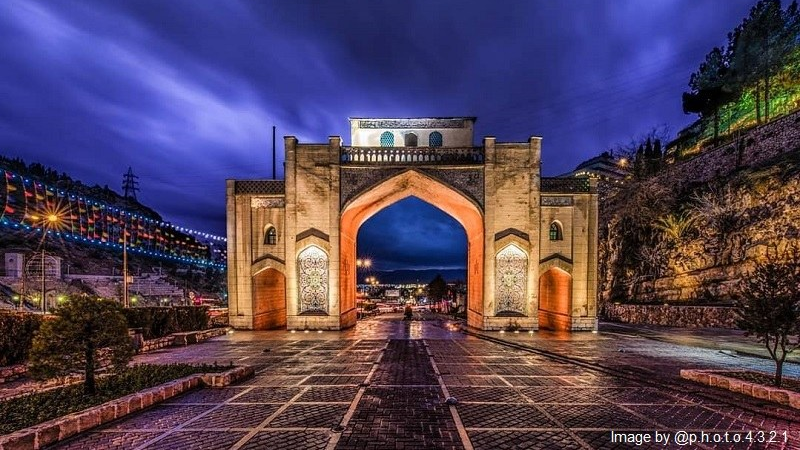
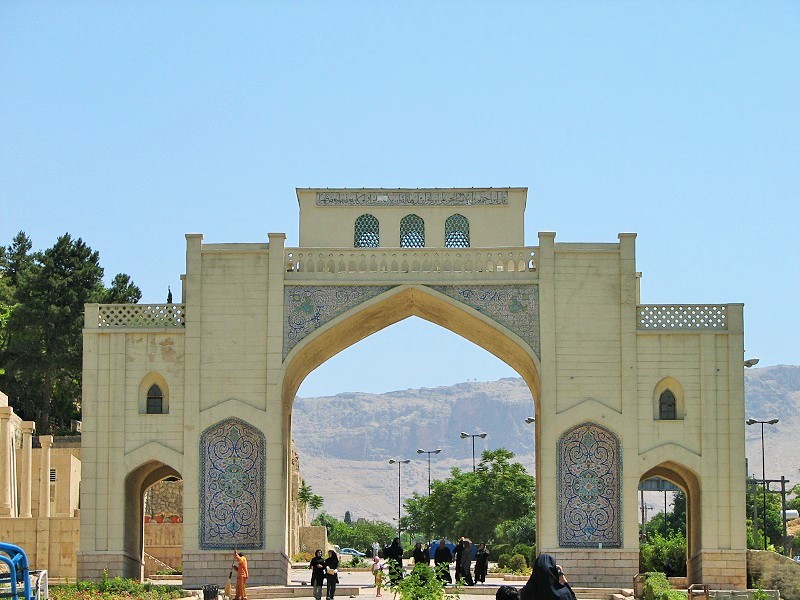



Eram Garden of Shiraz; A Rainbow of Flowers and Plants and Architectural Beauties
The moderate climate of Shiraz provides a suitable environment for the growth of plants. Orange trees can be seen throughout this historical city, which has become one of the symbols of Shiraz. In addition, there are many beautiful gardens in Shiraz, which host a large number of tourists every year. Eram Garden of Shiraz is one of these gardens and is known as one of the most famous gardens of this city.
History of the Eram Garden of Shiraz
Eram Garden can be considered as one of the oldest gardens in Iran. This garden was established during the Seljuk era in the 12th century CE. Atabak Qaracheh, the then-ruler of the Fars region, was the one who ordered the construction of this garden.
Later on, during the Zand era (late 18th century CE) and on the order of Karim Khan Zand an operation was carried out to improve the condition of this garden. In the Qajar period (19th century CE) a mansion was built inside the garden and made it in the form it is seen today. The mansion in the garden is built in the Qajar style of architecture, but it also shows some aspects of the Zand style of architecture. Some inscriptions belonging to the time of the restoration of the garden in the Qajar period can be seen in it.
Geography and Features of the Eram Garden
Eram Garden is located at the northeastern end of Shiraz. This garden was built in a rectangular shape and its dimensions were about 250 into 720 meters. In this way, the area of this garden stood at 18 hectares, but today only its northern edge remains, which covers an area of nearly 9 hectares. The garden is now at the disposal of the Faculty of Law of Shiraz University and is known as a botanical garden.
The Interior of the Eram Garden
The Eram Garden of Shiraz has a main axis that is located across the garden and parallel to its longitudinal sides. On both sides of the garden, cypress trees are planted in a row, among which there are taller trees that are of the “Mediterranean cypress” species the like of which cannot be found anywhere in Shiraz.
Eram Garden was created on a sloping surface, which makes the difference between the highest and lowest parts about 15 meters. The main entrance of the garden is in the southeast part. Two other entrances are located on the eastern side and another one is on the northwest side of the garden.
The main entrance to the garden, the middle mansion, and the main pavilion are all located on the main axis of the garden and are almost in a straight line. The main pavilion is built at the end of the garden, in its northern part. There is a middle courtyard in the pavilion where Mediterranean cypress and orange trees as well as all kinds of ornamental flowers can be seen. A large water fountain is also built in front of the pavilion, which adds to its beauty. There is also a large pond in the middle of the garden, which is in alignment with the style of Iranian buildings. The middle mansion is a one-story building that has a rectangular structure from where both sides of the garden and the central axis can be viewed.
Decorations of the Mansion
The portal of the main entrance is decorated with beautiful tiles with story-like images, all of which represent the power of kings. The design of these tiles is called “Sun Form” and consists of three crescents:
• The upper crescent with Rostam in Solomon’s court.
• The crescent on the left with a sketch of the story of the women being astounded by the beauty of Prophet Joseph.
• The crescent on the right is a picture based on the story of Khosrow watching Shirin swimming and losing his heart.
In the center of the painting, there is an image of Naser al-Din Shah of Qajar riding on a horse.
There are also paintings on the walls of the booth, whose subjects can be divided into three categories:
• Mythological and ancient motifs and subjects such as the lion and the sun, the hunting scene, and fictional images of fights among predators.
• Images inspired by Qur’anic and ancient Iranian stories.
• Decorative patterns of plants, views of urban buildings, and motifs of animals and birds.
Having been inscribed as a national heritage in 1974, Eram Garden was also inscribed as one of the 9 Iranian historical gardens in the list of World Heritage Sites of UNESCO.
Eram Garden can be considered as one of the oldest gardens in Iran, established during the Seljuk era in the 12th century CE.
| Name | Eram Garden of Shiraz; A Rainbow of Flowers and Plants and Architectural Beauties |
| Country | Iran |
| State | Fars |
| City | Shiraz |
| Type | Historical |
| Registration | National |

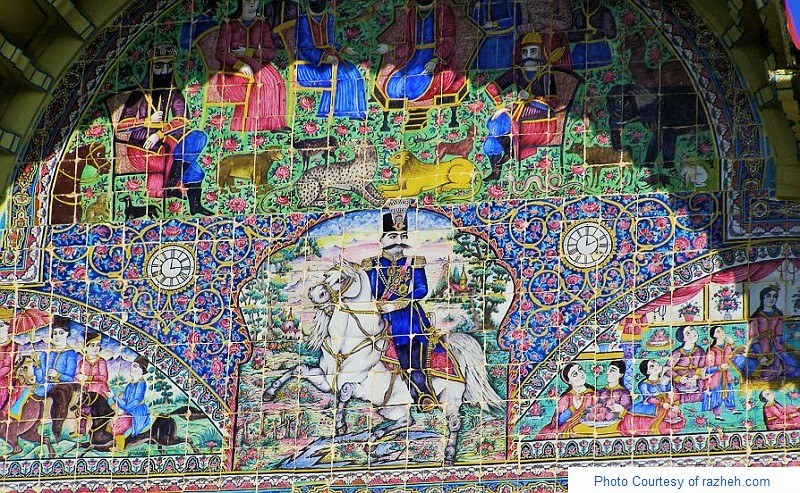
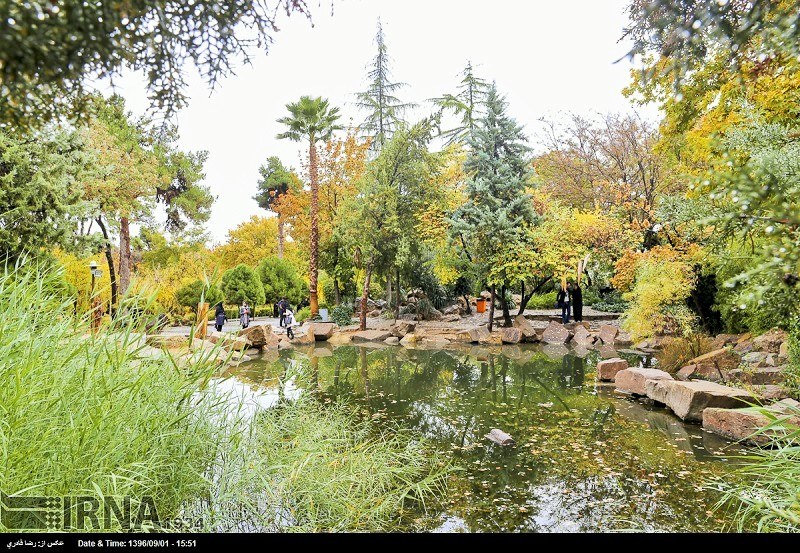




Gardens of Shiraz
Covering an area of 1268 square kilometers, Shiraz metropolis is the capital of Fars province of Iran and its structure is like a rectangle the length and width of which stand at nearly 40 kilometers and 15 to 30 kilometers respectively. Shiraz is surrounded by relatively high mountain ranges. This city is bounded by Derak Mountain on the west and Bamou, Sabzepoushan, Chehlmaqam, and Babakouhi mountains of the Zagros mountain range on the north. Located between 1480 and 1670 meters above sea level, Shiraz has a moderate and pleasant climate making it a suitable environment for the growth of various plant species. Therefore, the gardens of Shiraz are among the most beautiful Iranian gardens that should not be missed during one’s trip to this city.
In July, which is the hottest month of the year in Shiraz, the average temperature reaches about 40 degrees, and this average is about 5 degrees Celsius in January, the coldest month of the year in this city. The average annual temperature of Shiraz is about 18 degrees Celsius and its average annual rainfall stands at 338 mm, and all of this provides suitable conditions for the growth of vegetation in this city.
Eram Garden of Shiraz
As one of the beautiful gardens of Shiraz, Eram Garden covers an area of more than three hectares. This garden is covered with citrus and cypress trees. One of the most beautiful parts of the garden is the street that stretches from east to west and has tall cypress trees on both sides. Passing through this street will be one of the unforgettable experiences of every tourist visiting the gardens of Shiraz; especially if it is tied with the scent of orange blossoms in spring. Apart from these trees, beautiful and colorful flowers also grow in the garden, which adds to its beauty.
There is a tall cypress tree among the other trees on this street, that is called “Sarv-e Naz” because of its harmonious appearance. The height and coherent structure of this cypress tree stand out from afar. It is interesting to know that this cypress tree is unique in all the gardens of Shiraz, and the like of it cannot be found in any of the gardens of Shiraz.
Delgosha Garden of Shiraz
One of the other most spectacular gardens in Shiraz is Delgosha Garden, the history of which dates back to before Islam (i.e. 6th century AD). During the Safavid era (16th century AD), the Delgosha Garden was considered one of the most important recreational gardens in Shiraz, and some European tourists have praised this garden in their travelogues. During the reign of Karim Khan Zand (late 18th century), this garden was restored and the damages it had suffered in previous periods were removed.
Delgosha Garden is located over an area of 7.5 hectares and orange trees, which can be seen everywhere in Shiraz, can be seen in abundance in this garden. The scent of orange blossoms fills this garden in the month of May and refreshes the mind. If you want to visit Delgosha Garden, you can enjoy the beauty of the mansion that was built in the middle of it towards the end of the 18th century. A museum has also been established in this garden, where interesting historical works and old objects are put on display for visitors. A collection of 50 old radios is one of the most interesting objects in this museum.
Narenjestan-e Ghavam
Qavam House (also widely called, Narenjestan-e Ghavam) is a traditional and historical house with a beautiful garden covering an area of nearly 3500 square meters, of which 940 square meters are made up of mansions. These mansions were the residences of Shiraz rulers. Some parts of the building were also used as the administrative building of the Shiraz High Court in the past. Presently, there is a museum in this garden where beautiful and eye-catching stones and gems are displayed. Visiting these places can increase the pleasure of being in the Narenjestan Garden.
Being made by someone by the name of Mirza Alimohammad Qavam during the time of the Qajar dynasty, this site was inscribed on the list of Iran’s National Cultural Heritage in the year 1974,
Located between 1480 and 1670 meters above sea level, Shiraz has a moderate and pleasant climate making it a suitable environment for the growth of various plant species.
| Name | Gardens of Shiraz |
| Country | Iran |
| State | Fars |
| City | Shiraz |
| Type | Historical |
| Registration | Unesco |

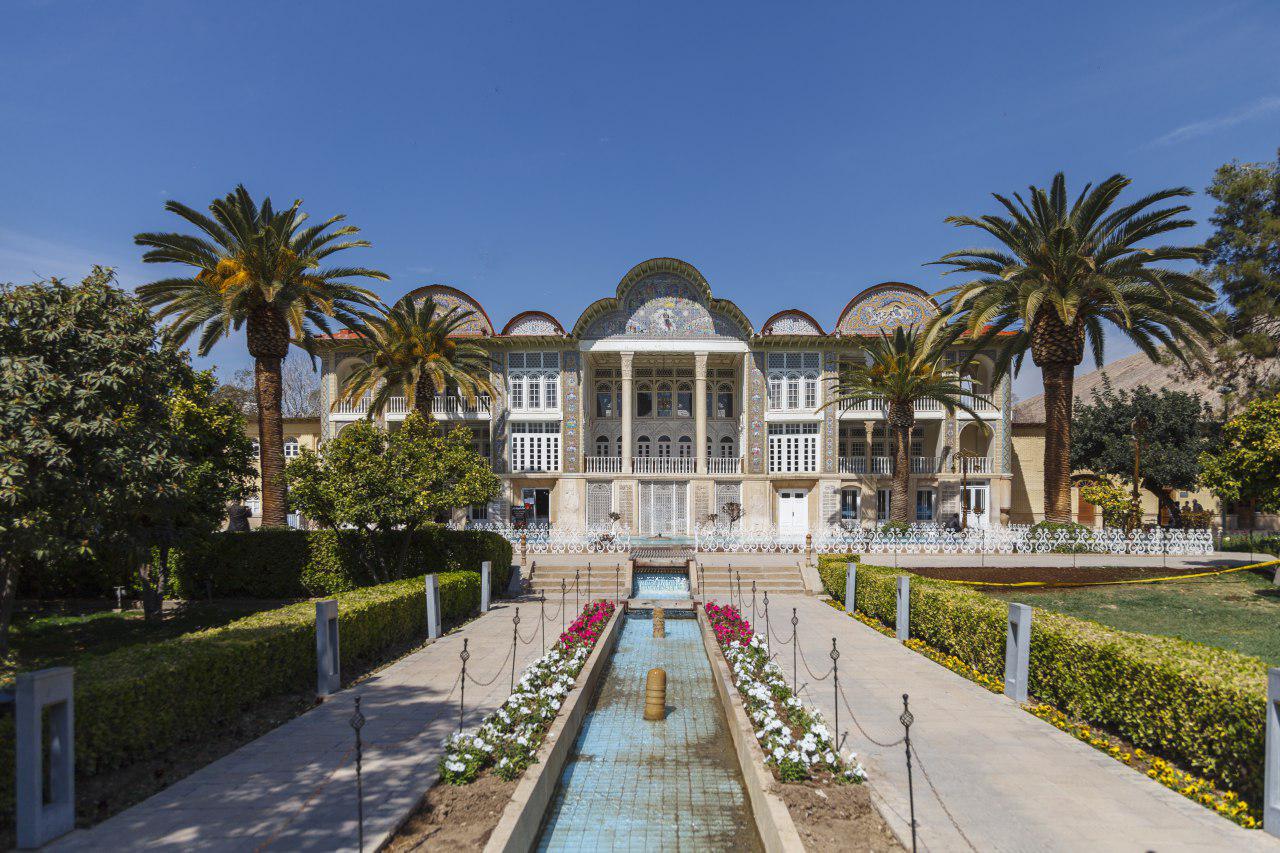
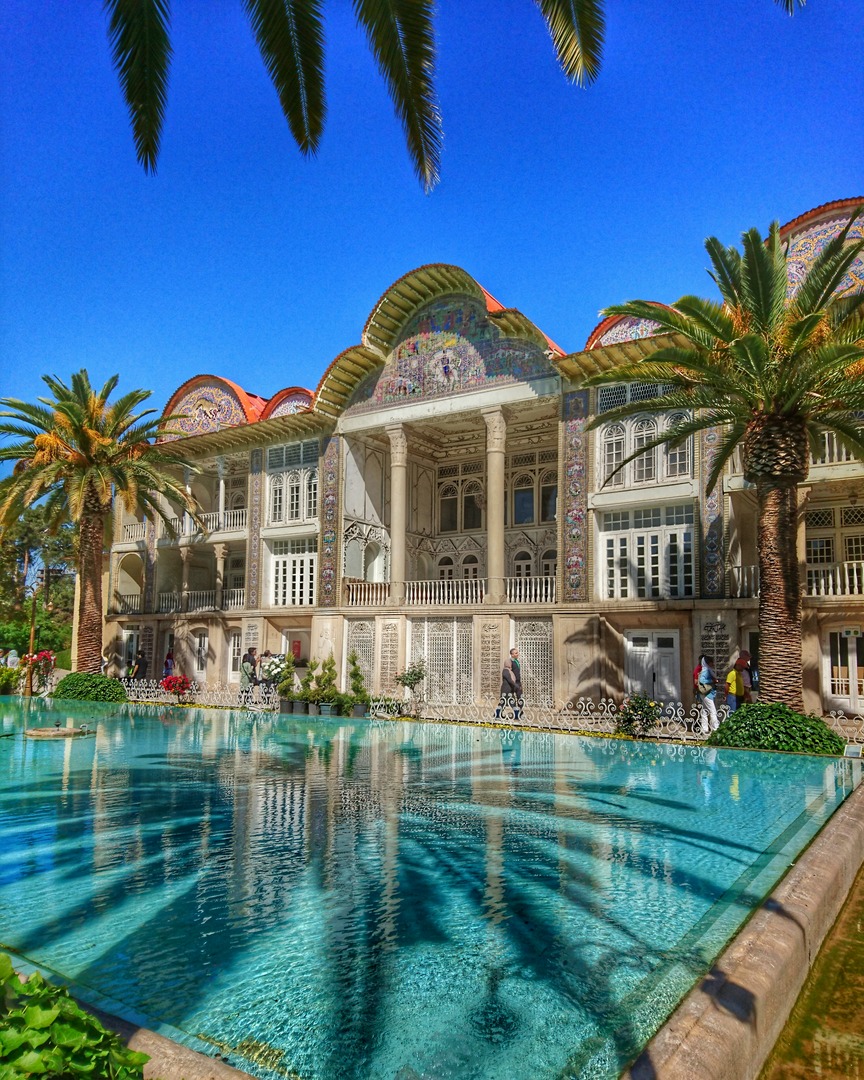




Recreational Places in Shiraz
Those cities can present themselves as attractive destinations for tourists that, in addition to good amenities, have historical and natural attractions. Having an ancient history and an eye-catching nature, Shiraz has been able to present itself as one of the most attractive cities of Iran for tourists and offers a variety of options to appreciate nature and are enthusiastic about human history. In Shiraz, all kinds of comfortable places with various modern and traditional designs welcome tourists. Many restaurants in the city can serve all tastes by serving traditional Iranian and foreign dishes. However, Shiraz’s entertainment places and its numerous game parks are one of the most important strengths of Shiraz, which can make the trip of tourists more diverse and pleasant.
The existence of recreational attractions can be especially attractive for young people because they are looking for excitement in life and enjoy new experiences and challenges. Keeping this in view, some of the recreational places of Shiraz are briefly explained hereunder:
Azadi Park
Azadi Park is the largest amusement park in Shiraz and it can be considered as one of the most complete outdoor parks in Iran. This park is one of the main options of the people of Shiraz for their recreation and leisure time. Usually, on hot summer nights, people of Shiraz come to this park and spend time socializing with each other in its cool air, under the trees of the park.
Azadi Park of Shiraz also has different recreational facilities for different ages. Every morning, different groups of people from Shiraz start their day with group exercise in this park. Apart from sports equipment, cafeterias and service centers in the park provide services to visitors. In order for people to use the peaceful atmosphere of the park for reading, a bookshop has also been founded there, which lends its books to visitors.
Hadith Park
One of the most important features of this park is having different sorts of games for children to play and enjoy. The 16,000 square meter space of this park is a pleasant environment for recreation and relaxation, especially because of the traditional design of its various places that are reminiscent of the feeling of the old gardens of Shiraz.
Luna Park
This park is located in the mountainous area of Shiraz and green gardens along with a modern amusement park comprise other parts of it. The location of this garden in the heights of Shiraz makes it possible to see the whole city from afar, which is a beautiful and eye-catching sight, especially at night. As the oldest amusement park in Shiraz and with its games and entertainment facilities, this park can satisfy all tastes and all ages.
Sayeh Park
This park is one of the newest parks in Shiraz, which is also known as Namaz Park. The 12-kilometer walking path, stone waterfalls, ponds, and fountains that become very beautiful with lighting at night, and the green mountainous nature of this park, have made it an exemplary one among the parks of Shiraz.
Be’that Park
Cypress trees, clear streams, and large water ponds have made the atmosphere of Be’that Park very beautiful and pleasant. This 1.6-hectare park is known as the entrance to Afifabad Garden of Shiraz and it houses several sports grounds.
Other Recreational Places in Shiraz
Paintball Clubs
Paintball is one of the relatively new sports that can be very exciting for young people. There are several paintball courts in Shiraz, the most important of which are Simorgh Club, Shahid Chamran Jungle Club, and Be’that Club.
Karting Clubs
Teenagers interested in car racing enjoy karting. Presently, there are four karting clubs in Shiraz including Shahr Track, Shahid Hasan Gudarzi Recreation Complex, Shahin Karting, and Sultan Recreational Track, which welcome those interested in this recreational sport.
Besides many historical and natural attractions, the recreational places of Shiraz can also be of great interest to tourists as options to make their trip to this city more exciting.
| Name | Recreational Places in Shiraz |
| Country | Iran |
| State | Fars |
| City | Shiraz |
| Type | Natural |
| Registration | No registration |

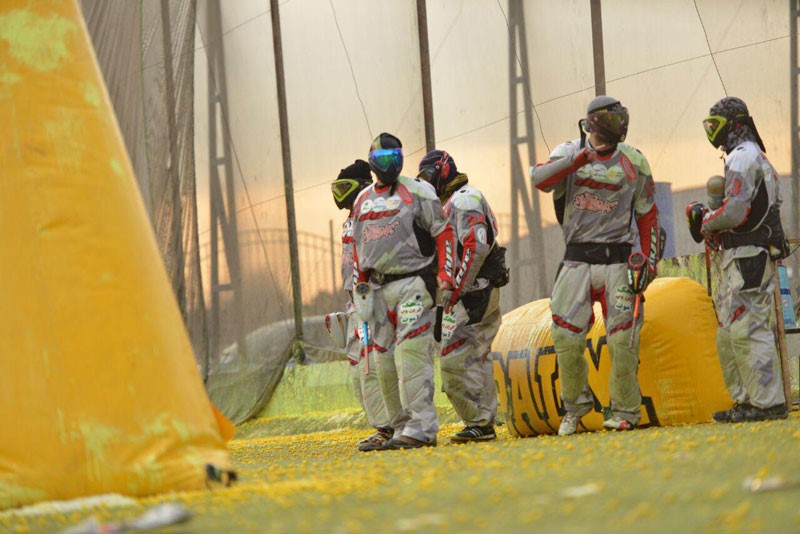
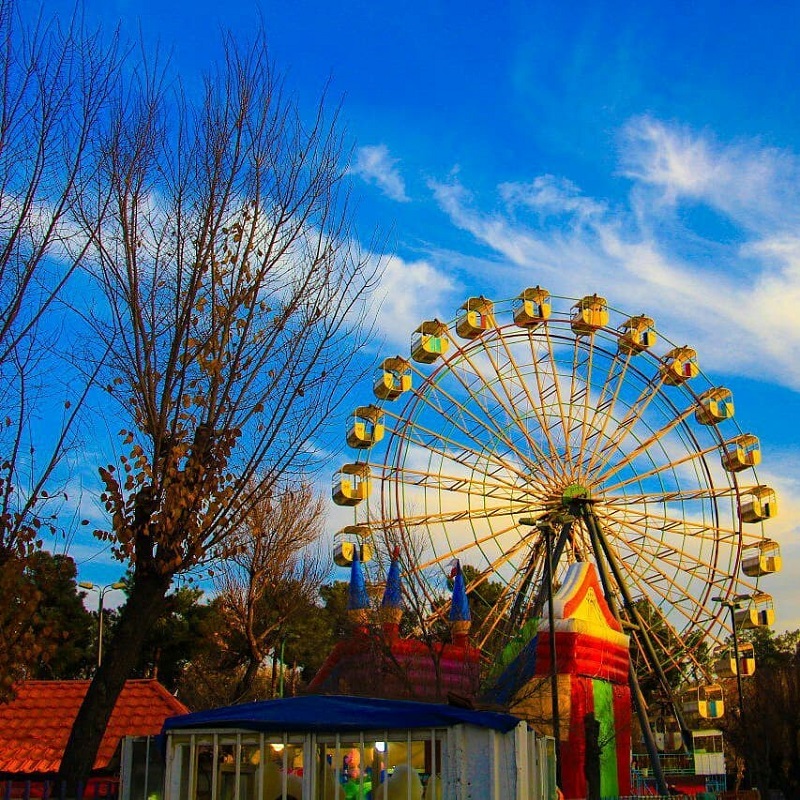




Vakil Mosque of Shiraz; Manifestation of Architectural Beauty
Mosques had an important place in the cities that were founded in post-Islamic Iran. Mosques in these cities were not only places for holding religious ceremonies and rituals but also a base for catering to social and cultural affairs. For this reason, utmost care was taken to ensure that mosques are designed and constructed as strong and beautiful as possible and are located where all citizens can rather easily have access to them. Moreover, the main mosques of the city were big enough to accommodate a large crowd. The Vakil Mosque of Shiraz, which was one of the monuments built during the Zand era (late 18th century), has all these features, and for this reason, it is considered one of the prominent mosques of Iran.
Being located next to such centers as Vakil Bazaar, Vakil Bathhouse, and Karim Khan Citadel, which were the main centers of social and government services, had doubled the importance of this mosque. Vakil mosque is connected to Vakil Bazaar through a short alley. Of course, there are entrances for the mosque on other sides so that anyone can access its main building from any direction. This mosque was built in 1187 AH (1773 AD).
Features and Architecture of Vakil Mosque
Vakil Mosque is built over an area of nearly 11 thousand square meters 8660 square meters of which form the main building of the mosque. The external dimensions of the building are about 120 into 80 meters.
The beauty of the building and decorations of the Vakil Mosque is at its peak. At the entrance of the mosque, there are two doors with a height of eight meters. After passing through a beautiful vestibule decorated with tiles, one enters the vast courtyard of the mosque, which has a pond in the middle.
Two symmetrical porches can be seen in the south and north of the yard. There is no porch on the east and west and, therefore, the structure of the mosque can be considered a building with two porches.
The floor of the yard is covered with stone slabs, which were installed during the restoration of the mosque in the contemporary period. Unlike similar buildings, there are no gardens or trees around the yard, which adds to the grandeur of the yard and the beautiful tiling of the exterior.
The seven-colored tiles of the entrance and the two porches of the mosque are similar. The main design used in this tiling is called “Tree of Life”. This design has given a balanced outlook to the square tiles used for the façade of the mosque.
The southern porch is connected to a beautiful nave with 48 integrated columns and dimensions of 75 x 26 meters, which is considered one of the symbols of Shiraz. Brick arches connect the adjacent columns to each other. The columns are integrated and their body is decorated in a spiral form. The same color used for the columns and the ceiling has created an eye-soothing harmony in the building. Brickwork is the most important art used in the construction of the roof. Of course, the roof of the part that extends directly from the southern porch to the altar of the mosque is decorated with seven-colored Shirazi tiles. This part is similar to a corridor guiding people to the main hall.
A tall arch has been built in the northern part of the mosque, which is 20 meters wide and very valuable from the point of view of architecture. This beautiful arch is known as the pearl arch and around it is decorated with verses from the Holy Qur’an written in thulth scripts in the form of crescents. Two minarets, each with a height of 20 meters, are visible above this arch.
There are also some arches in the east and west of the yard that have been decorated with tiles. There are 11 arches on both sides of the courtyard. The winter shabestan is located behind the portico on the eastern side, which is 25 meters long and 20 meters wide. The brick roof of this nave is supported by 12 columns and is five meters high.
There is a pulpit in the Vakil Mosque, which is built in one piece of marble and has 14 steps to climb to the top of it. Such pulpits were quite common during the Zand era. According to some quotes, a large stone was moved from Maragheh to Shiraz to build the pulpit of Vakil Mosque.
Vakil Mosque was inscribed on the list of Iran’s National Heritage in the year 1932.
The Vakil Mosque of Shiraz, which was built during the Zand era (late 18th century) is considered one of the prominent mosques of Iran.
| Name | Vakil Mosque of Shiraz; Manifestation of Architectural Beauty |
| Country | Iran |
| State | Fars |
| City | Shiraz |
| Type | Historical |
| Registration | National |

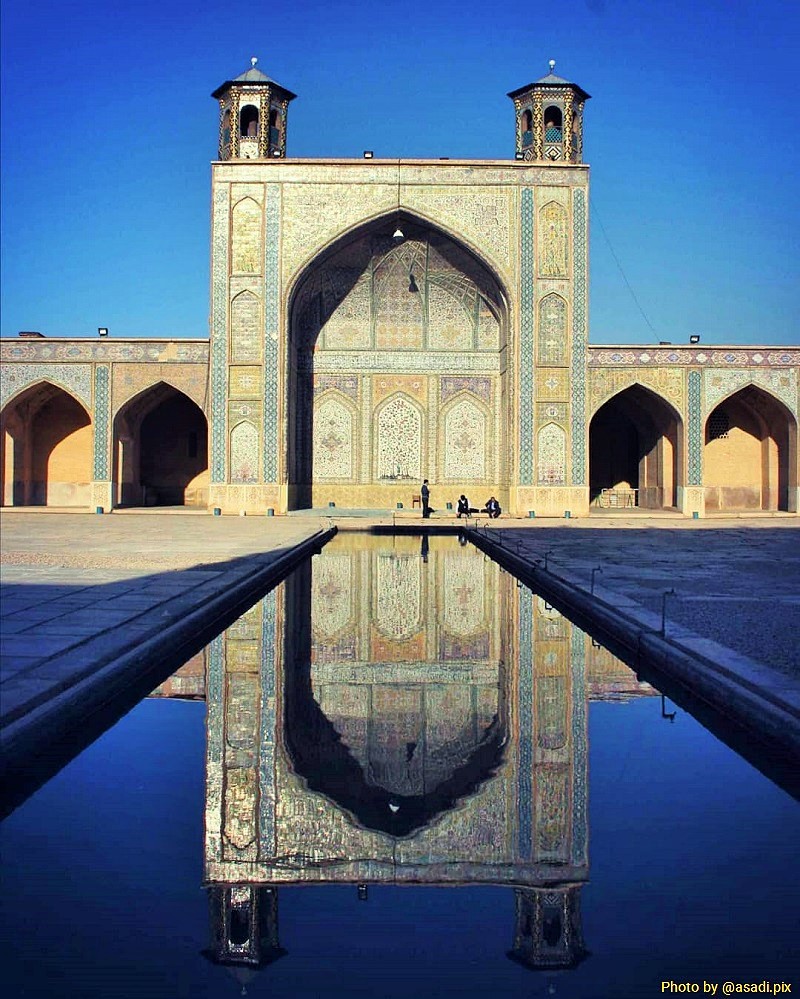
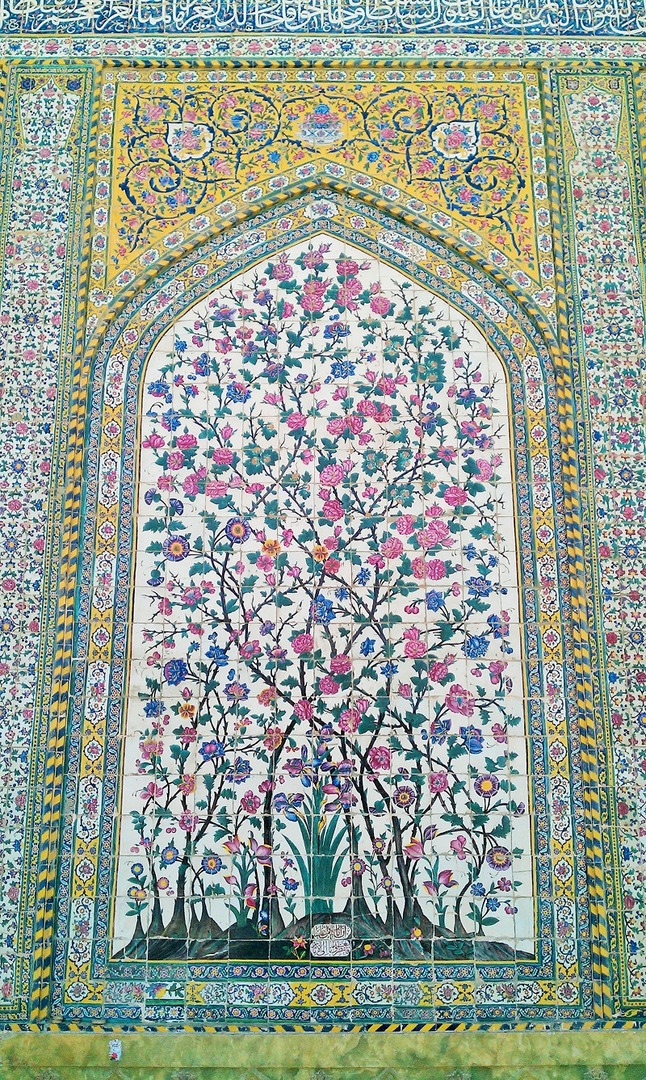




Some Must-See Places in Shiraz
Due to its attractive nature and spectacular historical monuments, Shiraz is one of the best tourist destinations in Iran. A half-day walk in Shiraz through the must-see places can be quite memorable for visitors; especially after a long drive.
Taking a Walk in Shiraz
One of the best places for a half-day walk in Shiraz is the Zand neighborhood, whose construction dates back to the second half of the 18th century when Shiraz was the capital of Iran during the Zand era, and many monuments were built in this city.
Karim Khan Citadel, the Starting Point of a Half-Day Tour in Shiraz
There are very few cities in Iran in which a citadel similar to the Karim Khan Citadel can be found in the heart of the city. This citadel, which is made of bricks in a rectangular shape, has watchtowers in all four corners and is located in the northeast of Shiraz Municipality Square.
This citadel was the residential palace of Karim Khan Zand and was decorated with beautiful paintings based on the mythological stories of Iran. The citadel houses beautiful orange trees and a private bathhouse, which is worth seeing.
Nazar Garden and Pars Museum
A footpath has been created around Karim Khan Citadel above a traffic road, walking through which one can go to Nazar Garden, which is located exactly opposite Karim Khan Citadel, where one of the most beautiful museums of Iran can be visited. Pars Museum of Shiraz houses objects from ancient times to modern times; seeing which can be quite pleasing. When visiting the Pars Museum, pay attention to time, because you still have other places to visit!
Vakil Mosque
Going eastward in Nazar Gaden one reaches a relatively wide street before reaching the main entrance of the main bazaar of the city. This street leads to the entrance of Vakil Mosque the attractive design of which is very eye-catching.
The Beautiful Niche of Vakil Mosque
With its beautiful columns and a niche, which is even more beautiful than these columns, the Shabestan (nave) of Vakil Mosque has become one of the symbols of Shiraz.
Vakil Bathhouse
In the west of the Vakil Mosque, is located the Vakil Bathhouse, which is an attractive display of the architecture of the Zand era. Wax sculptures of people who used this place in the past have been put on display in this bathhouse because of which Vakil Bathhouse can also be considered a museum.
Vakil Bazaar
The half-day tour of Shiraz slowly comes to an end in the attractive Vakil Bazaar, which is another must-see place for every tourist, and without visiting it the trip to Shiraz would be incomplete! To get to Vakil Bazaar, one must go back to the main street, the same wide street that leads to the Pars Museum.
According to some experts, the Vakil Bazaar was inspired by the Qaysariyeh Bazaar of Lar, which is the oldest bazaar in Iran. The presence of old chambers and stores with colorful and diverse goods can be quite an eye-catching and attractive combination for visitors. In addition to enjoying the architecture and building of the market, one can also buy the desired souvenirs in this bazaar.
Ending the Half-Day Walk with a Traditional Meal
After visiting the bazaar, you can treat yourself to traditional Iranian cuisine in one of the traditional restaurants around it! These restaurants serve both Iranian dishes and fast food. Of course, it is to be noted that due to the variety of flavors and the use of healthy and natural ingredients, Iranian cuisines can be pleasing to any taste.
The traditional restaurants of Shiraz have attractive atmospheres that can be reminiscent of hundreds of years of Iranian History!
Due to its attractive nature and spectacular historical monuments, Shiraz is one of the best tourist destinations in Iran.
| Name | Some Must-See Places in Shiraz |
| Country | Iran |
| State | Fars |
| City | Shiraz |
| Registration | National |

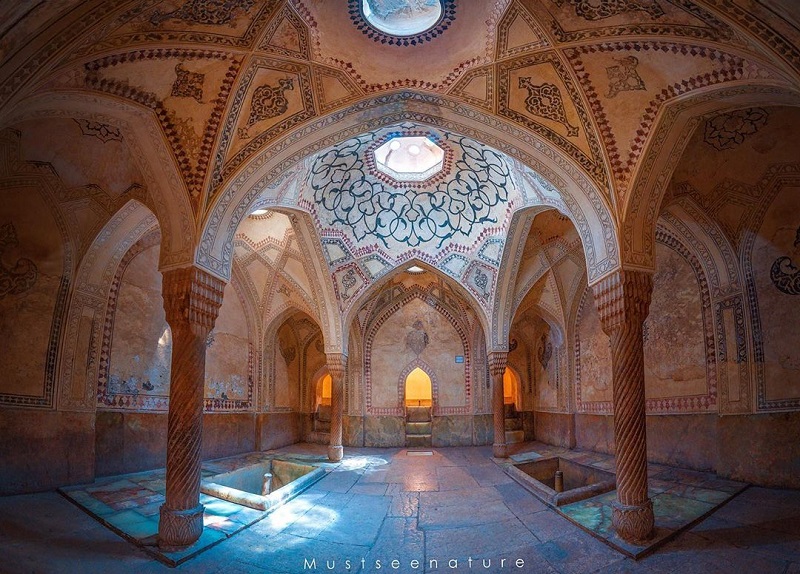
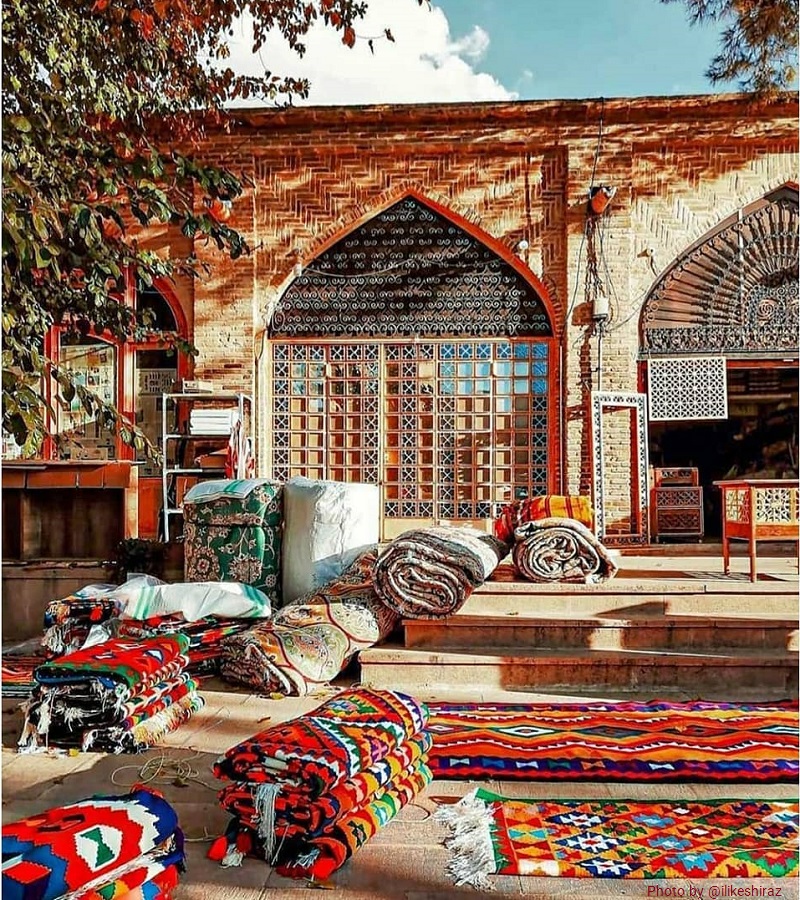
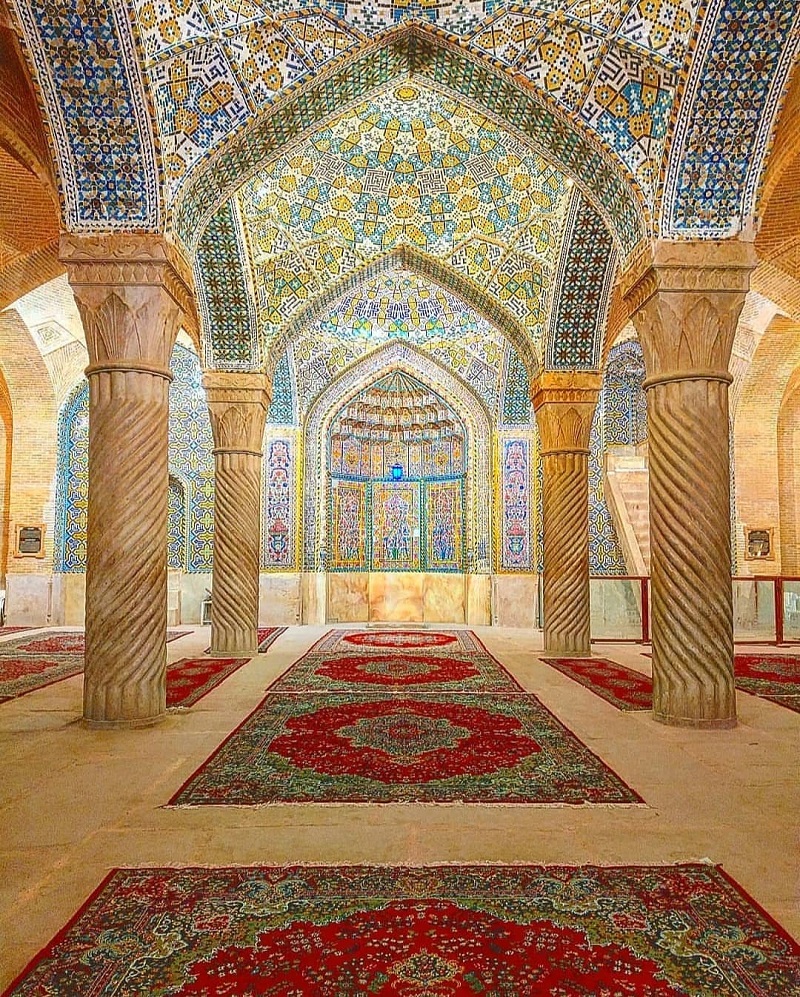
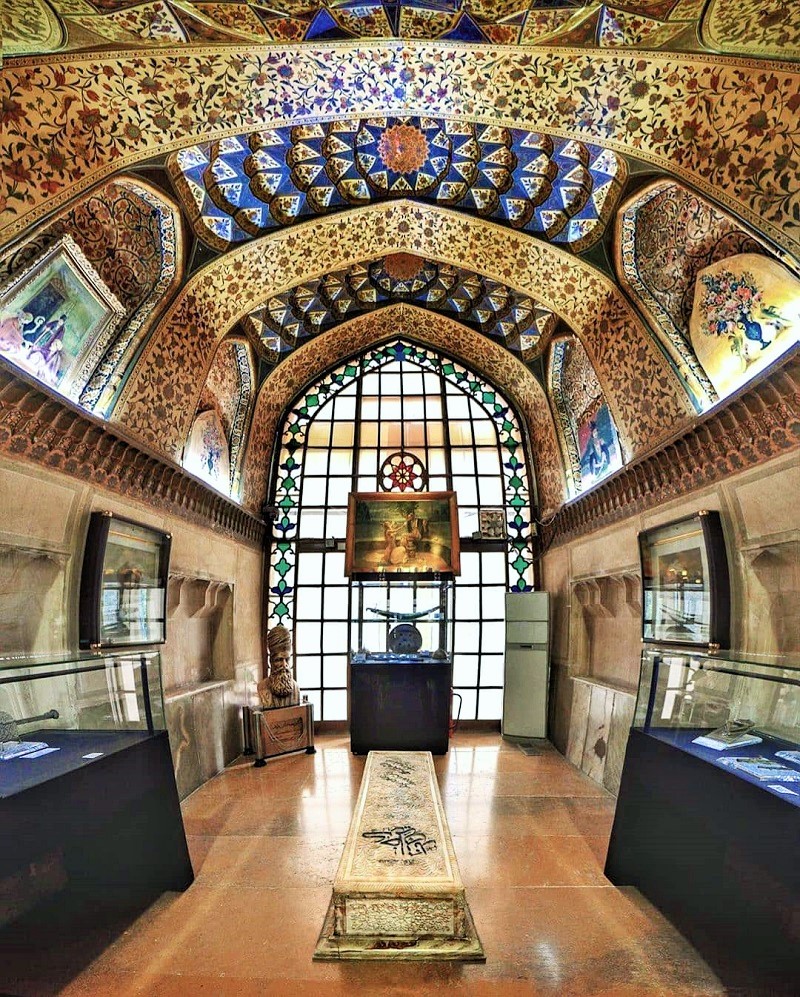
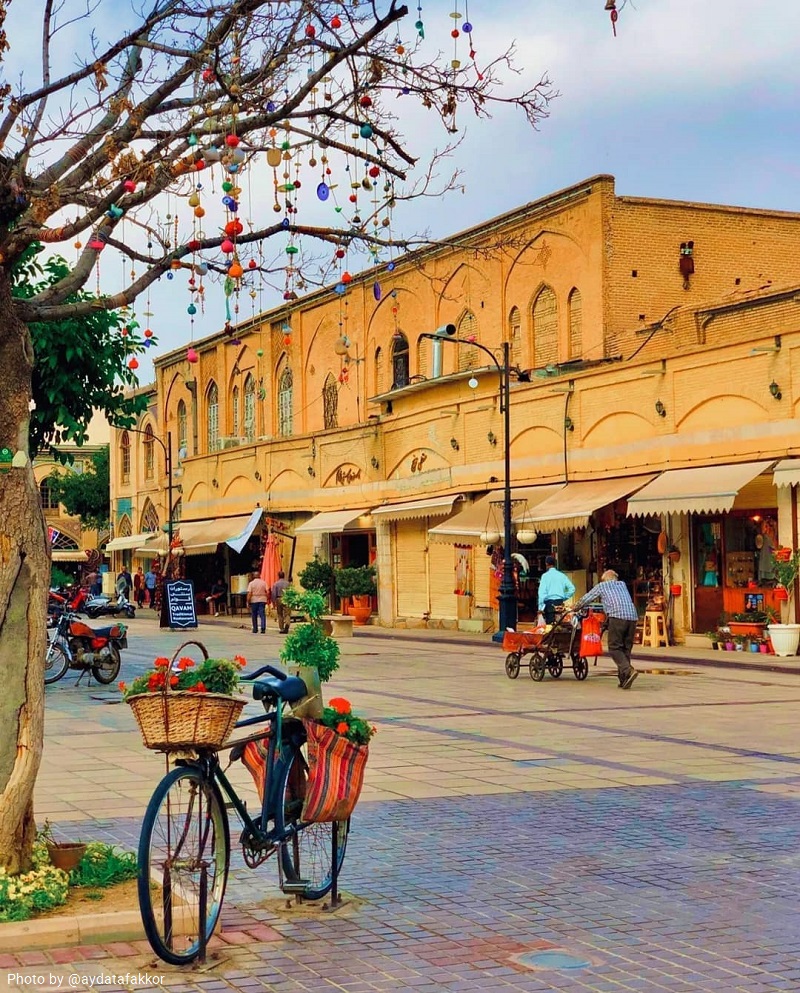







Shiraz; An Ideal Tourist Attraction
Many of the historical attractions of Shiraz are several thousand years old. The gardens of this city are also among the most beautiful gardens in Iran, and some of them have been inscribed on the list of UNESCO’s World Heritage. In terms of entertainment, Shiraz is equipped with the best and most up-to-date facilities. Due to the existence of the Shah Cheragh Shrine, Shiraz is also considered one of the religious attractions of Iran.
Geography of Shiraz
Being the capital of Fars province, Shiraz is considered one of the most important metropolises of Iran. This city is located at an altitude of 1543 meters above sea level and is surrounded by mountains. This position has made Shiraz have attractive natural attractions. A seasonal river, too, passes through Shiraz.
The average annual temperature of Shiraz is 18 degrees Celsius and the average annual precipitation is 337 mm. Shiraz is 930 km away from Tehran and it is possible to travel to it by land, air, and rail.
Population and Economy
Shiraz has a population of nearly two million people and is among the six most populous cities in Iran. Cement, chemical fertilizer, sugar, wood, textile, and petroleum products are among the most important industrial products of this city. Shiraz is known as one of the main centers for the production of electronic products in Iran.
History
The name Shiraz has been found in inscriptions dating back to 2000 BC, but according to experts, this city dates back to 7000 years ago. During the Achaemenid era (550 to 330 BC), Shiraz was on the travel route from Susa to Persepolis and Pasargad and was, therefore, of great geographical importance. This importance was preserved in the following historical eras and several dynasties made it their capital. During the Mongol attack on Iran (1219 AD), Shiraz remained. This city has also greatly contributed to Iranian culture and literature by producing great poets such as Hafez and Sa’di.
After many ups and downs and being neglected for some time, this city began to once again flourish after being made the capital of Iran by Karim Khan Zand in 1759 AD.
Historical Attractions of Shiraz
The tombs of Hafez and Sa’di, two great Persian-speaking poets, Vakil Bazaar, Vakil Bathhouse, and Vakil Mosque are some of the important tourist attractions of Shiraz. Nasir al-Mulk Mosque, Jame’ Atiq Mosque, and Shah Cheragh Shrine are among the historical and religious attractions of this city.
The other tourist attractions of Shiraz include Karim Khan Citadel, Nazar Garden, Eram Garden, Jahannama Garden, Cheheltan Garden, Delgosha Garden, Narenjestan Garden, and Afifabad Garden. Some gardens in Shiraz, such as Nazar Garden and Afifabad Garden, are now used as museums.
A number of old mansions in Shiraz, such as Qavam House, Salehi House, Shapuri Mansion, Zinatul Milk House, and Moshir House as well as Agha Baba Khan School and the Qur’an Gate are also important historical attractions of Shiraz.
There are many historical sights on the outskirts of Shiraz, the most important of which are Persepolis, Naqsh Rajab, Ardeshir Palace, Bishapur Ancient City, Shapur Cave, Tang-e Chogan reliefs, and Naqsh-e Rostam, each of which reflects upon the history of thousands of years and displays surprising and amazing details.
Natural Attractions
The geography of Shiraz has made it possible to visit many natural attractions. Tang-e Dom-e Asb Waterfall, Kuhmareh Sorkhi Waterfall, Baram Delak, Bemo National Park, Shiraz Bird Garden, Pir-e Bonab Spring, Dasht-e Arjan Lake, Maharloo Lake, and Qalat Village are some of the interesting places of Shiraz to visit and enjoy the nature.
The name Shiraz has been found in inscriptions dating back to 2000 BC, but according to experts, this city dates back to 7000 years ago.
| Name | Shiraz; An Ideal Tourist Attraction |
| Country | Iran |
| State | Fars |
| City | Shiraz |
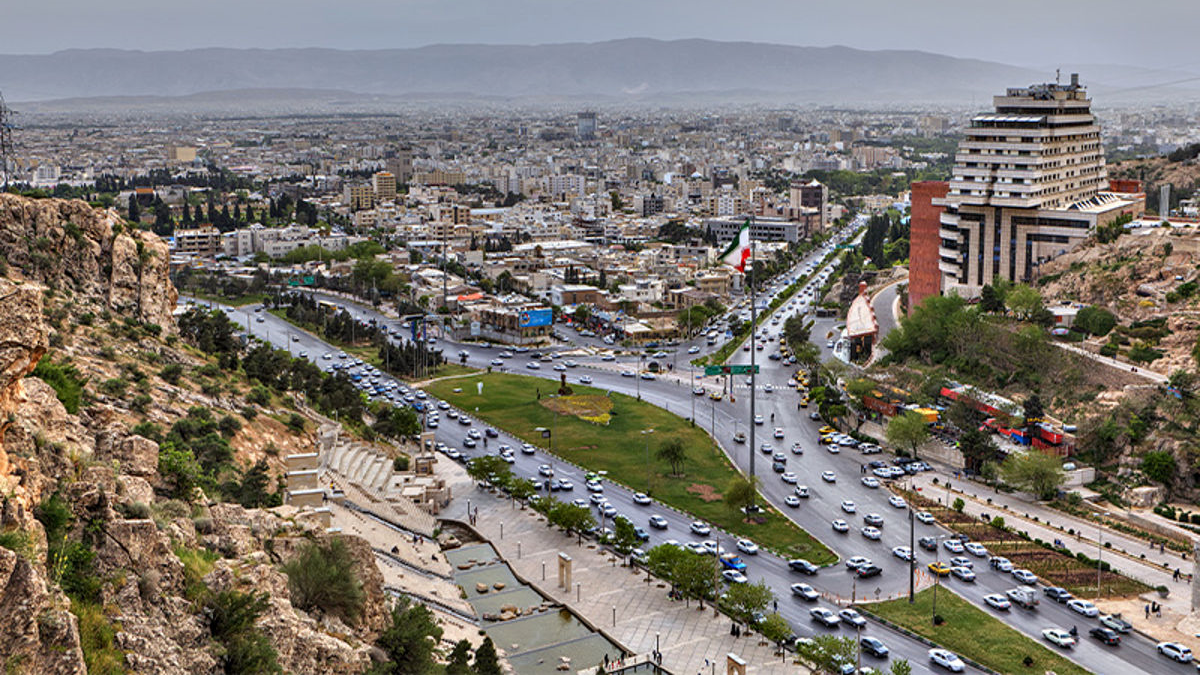

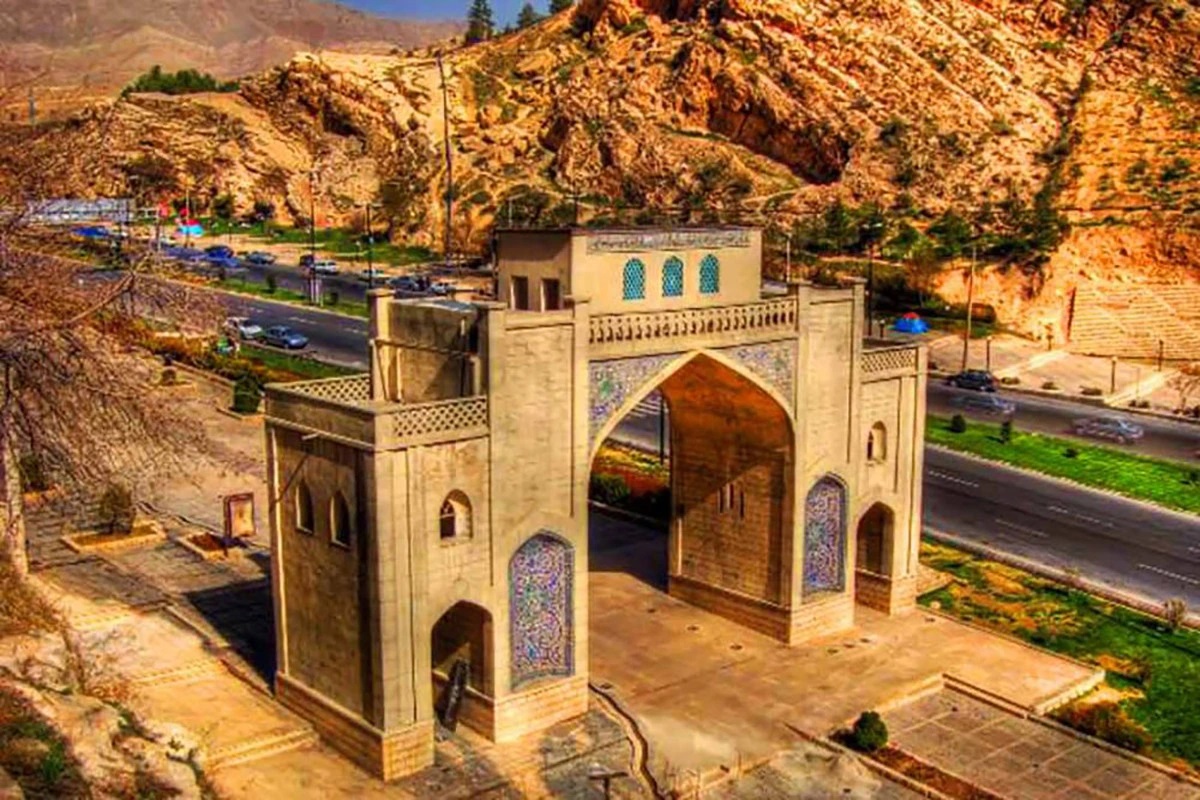




Jame’ Atiq Mosque of Shiraz
Having been built more than a thousand years ago, Jame’ Atiq Mosque of Shiraz has maintained its beauty, splendor, and glory and continues to welcome visitors. This mosque, which is also called “Adineh” (Friday) Mosque, is located in the east of Shah Cheragh Shrine.
History of the Jame’ Atiq Mosque of Shiraz
The construction of the mosque began in 265 AH (872 AD) and was completed in 281 AH (894 AD), which means it was built during the Saffarid era (ruled 861 to 1002 AD). Founded by Ya’qub ibn Layth (reigned from 861 to 879 AD), this dynasty ruled over Afghanistan and parts of Iran, Tajikistan, and present-day Pakistan, and the city of Zaranj, which is located in the southwest of today’s Afghanistan, was the capital of this dynasty. The Jame’ Atiq Mosque of Shiraz was completed during the time of Amr ibn Layth (reigned from 879 to 901 AD).
As per archaeological research, this mosque was built on the remains of an old place of worship, which was most likely a fire temple. Replacing the buildings that were used as fire temples and places of worship before the advent of Islam in Iran with mosques was common in the early Islamic centuries. Certain signs of the old building, which has been replaced by this mosque can still be observed.
Jame’ Atiq Mosque has undergone restoration and renovation several times including during the reigns of Atabegs of Fars in the 6th century AH (12th century AD), the Timurid Sultan Ibrahim Mirza, the son of Shah Rukh - who ruled over Fars in the early years of the 9th century AH (15th century AD) - and the Safavids (1501 to 1736). However, the last significant restoration and renovation of this mosque dates back to 1936.
The beautiful structure of this ancient mosque has been praised in numerous travelogues, the oldest of which dates back to the 10th and 11th centuries AD.
Architecture of the Jame’ Atiq Mosque of Shiraz
There is an entrance on the north side of this mosque, which is popularly known today as the Gate of “12 Imams” and is decorated with tiling and muqarnas. A porch and a nave can be seen in this part of the mosque. A tall arch known as the “Pearl Arch” and two minarets can also be seen in this part of the building.
A large shabestan (nave) has been built in the eastern part of the mosque, which can be entered through five separate gates. This nave has a stone niche and is located in the east of the Pearl Arch. The staircase leading to the rooftop is also located in this area. Inscriptions containing Qur’anic verses form the major part of the decoration of this part.
There is an entrance to the shrine of Shah Cheragh in the west of the mosque. Some 10 porticos can also be seen in this section leading to the oldest nave of the mosque, which has a narrow two-story structure. The niche of this nave is very beautiful and has been decorated with two spiral columns on both sides, eye-catching muqarnas work, and blue color tile works. An old pulpit with 13 steps is located next to the niche.
Dar al-Mushaf Mansion
By the order of Shah Ishaq Inju, the then ruler of Shiraz, a building was built in the middle of the courtyard of the Jame’ Atiq Mosque in the year 752 AH (1351 AD), which is called “Dar al-Musaf” or “Khoday Khaneh”. This place was used to store copies of the Holy Qur’an, and those who engaged in memorizing and scribing the Qur’an could use this place. There was a manuscript copy of the Holy Qur’an - written during the reign of the Safavid king, Shah Ismail I (reign from 1501 to 1524) - in this part of the mosque on each page of which the name of the mosque is written. This manuscript along with some other old copies of the Qur’ans are now kept in the Pars Museum of Shiraz.
This mansion is square-shaped with a round column and a porch in each corner. A room can be seen in the middle of the porch. The inscription of this building is considered very valuable and the art of Iranian calligraphy is fully displayed in it.
Jame’ Atiq Mosque of Shiraz was inscribed on the list of Iran’s national heritage in 1932.
Having been built more than a thousand years ago, Jame’ Atiq Mosque of Shiraz has maintained its beauty, splendor, and glory and continues to welcome visitors.
| Name | Jame’ Atiq Mosque of Shiraz |
| Country | Iran |
| State | Fars |
| City | Shiraz |
| Type | Historical,Religious |
| Registration | National |
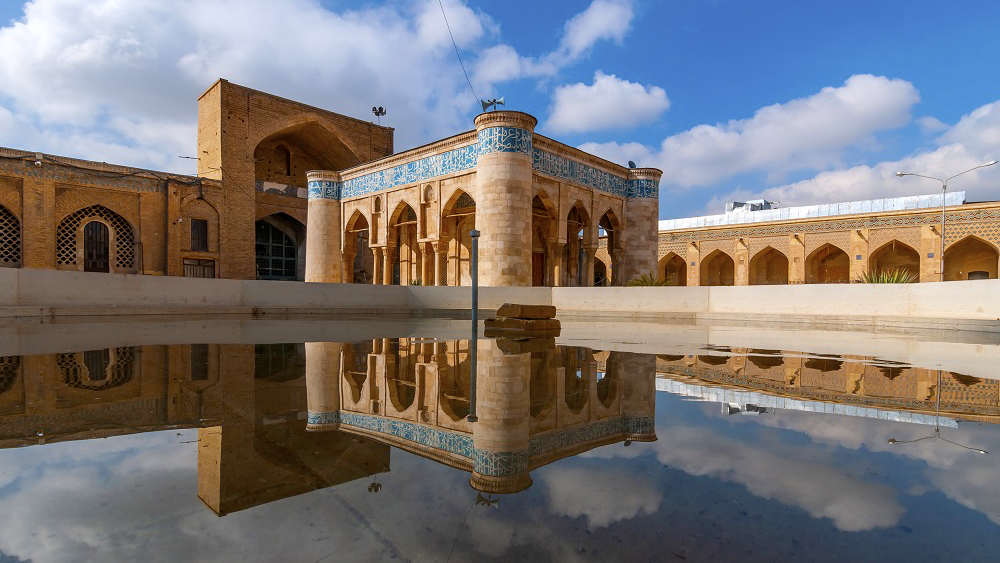
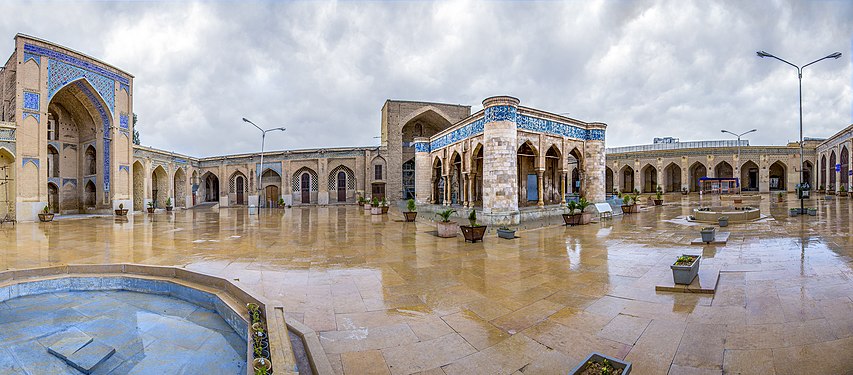
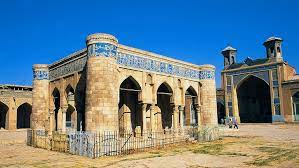
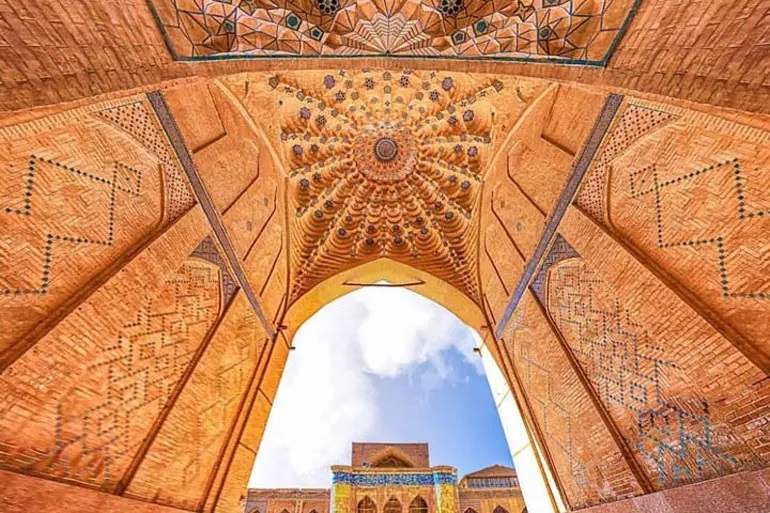





Sang-e Siah (Black Stone) Neighborhood of Shiraz
Today’s “Sang-e Siah” neighborhood was founded during the time of Karim Khan Zand (second half of the 18th century) by merging the “Darb-e Kazeroun” neighborhood and the old Sang-e Siah neighborhood.
The neighborhood is called by this name because of the tomb of Abu Bishr Amr ibn Uthman ibn Qanbar al-Basri, popularly known as Sibawayh, which is covered by a large black tombstone. The present building of this tomb was built in 1974 and has been decorated with mosaic tile decorations.
There are several interesting historical monuments in the Sang-e Siah neighborhood making it a tourist attraction.
Historical Houses
There are several old houses in this neighborhood, the most prominent of which are Foroughul Molk House, Sa’adat House, and Ziaeian House. All three of these houses are related to the Qajar period (19th century). A few decades ago, Forough Al-Molk House was used as a primary school, and today, it is used as a contemporary art museum and is also called the “Meshkinfam Museum”. Sa’adat House is also a museum now called the “Khatam Museum” where all kinds of Khatam works, the equipment used in this handicraft, and the pictures of the masters of this profession are on display.
Apart from beautiful architecture and tile works, Ziaeian House is famous for belonging to one of the noble families of Shiraz.
Seyyed Taj al-Din Gharib’s Shrine
This shrine, which was built during the Qajar period is believed to be the tomb of one of the descendants of Imam Ali ibn Abi Talib, the first Shiite Imam, who had come to Shiraz together with Ahmed ibn Musa Shah Cheragh and was martyred there.
Moshir Mosque
Located next to the Bazaar of Armenians, Moshir Mosque was built by Mirza Abulhasan Khan Moshir al-Mulk, the ruler of Fars Province in the mid-19th century. Moshir Mosque is one of the architectural masterpieces of the Qajar era, whose construction lasted from 1848 to 1857 AD. Being of historical importance and having eye-catching decorations, this mosque was inscribed on the list of Iran’s national heritage in 1972.
Built with two floors, the mosque has several naves and several chambers, which hosted seminarian students in the past. Some dishes related to the Qajar era are preserved in this mosque, which, according to locals, were used for serving the worshipers and mourners during the Muharram and Safar ceremonies.
Tomb of Bibi Dokhtaran
This mausoleum is located in the north of Moshir Mosque, and two of the daughters of the 4th Shiite Imam are buried in it. This building was built during the Ilkhanate era (1256 to 1356 AD). Being considerably damaged due to an earthquake, it was rebuilt in the Zand era (mid-18th century). The tall dome of this mausoleum has been built in the form of two crowns.
Ilkhani Garden
Located over an area of 3500 square meters near the Tomb of Bibi Dokhtaran, this garden was built by Mohammad Gholi Khan Ilkhani in the Qajar era. There is a Kolah Farangi mansion in the middle of the garden, with a two-column porch in the middle and a relatively large five-door hall behind it.
Saint Mary Church
Also known as the Armenian Church, it was founded in 1662 AD in the neighborhood where Iranian Armenians of Shiraz lived in those days. The entrance to this building is a large gate with a cross on it. Except for this cross, there is no sign of this place being a church on its exterior.
The wooden ceiling of this church has been decorated with beautiful oil paintings. The church also has been decorated with plaster works, which are considered masterpieces of their time. The Saint Mary Church of Shiraz was inscribed on the list of Iran’s national heritage in 1967.
The neighborhood is called Sang-e Siah because of the tomb of Abu Bishr Amr ibn Uthman ibn Qanbar al-Basri, popularly known as Sibawayh, which is covered by a large black tombstone.
| Name | Sang-e Siah (Black Stone) Neighborhood of Shiraz |
| Country | Iran |
| State | Fars |
| City | Shiraz |
| Type | Historical |
| Registration | No registration |
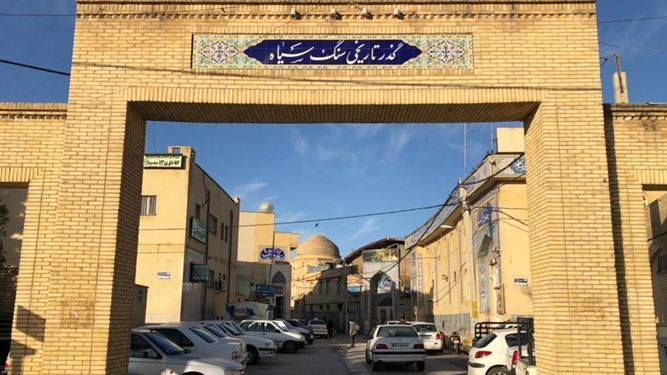
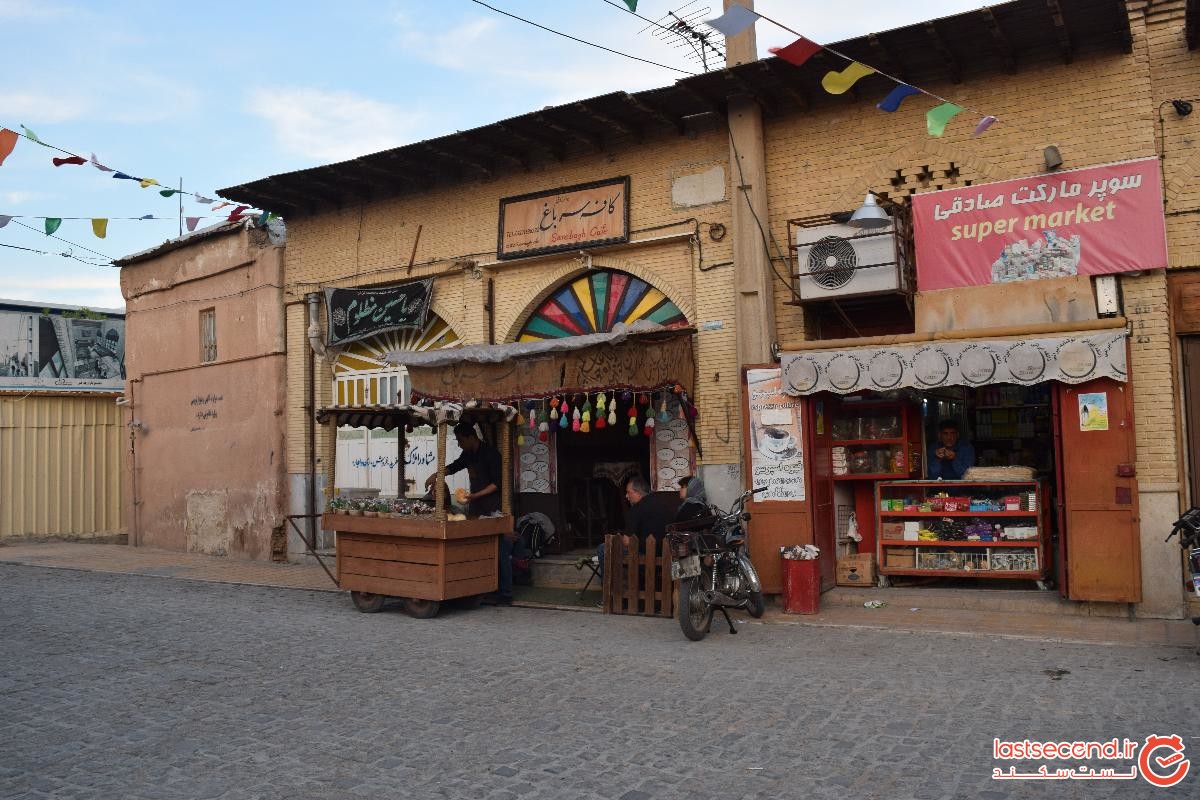



Moshir al-Molk Mosque of Shiraz
Mirza Abu al-Hasan Khan Moshir al-Molk, who was the governor of Fars Province in the mid-19th century, built a mosque in Shiraz, which came to be known after his name. This beautiful mosque was built in the old “Sang-e Siah” neighborhood of Shiraz and next to the Armenian bazaar.
History of Moshir al-Molk Mosque
This mosque was built between 1848 and 1857 AD and can be considered one of the architectural masterpieces of the Qajar era. Archeological experts consider this mosque to be the best after Vakil Mosque in terms of building strength.
Architecture of Moshir al-Molk Mosque
There are several shabestans (naves) as well as a number of two-story chambers, which hosted students of religious sciences in the past. Dishes pertaining to the Qajar era are kept in some parts of this mosque. According to some local people, in the olden days, these dishes were used for serving the mourners during the mourning ceremonies of the months of Muharram and Safar.
Entrance and Courtyard
The entrance to the mosque is located in the east, which opens to the Armenian bazaar. The gents’ and ladies’ naves of the mosque get separated right at the entrance. There is also an old teahouse right at the entrance where new arrivals were served.
The beautiful courtyard of the mosque has a large rectangular pond, made of stone, the sides of which are 25 and 10 meters. In the past, this large pond was filled with water that people offered as charity.
Shabestan (Nave) and Minarets
The carved stone pillars and beautiful decorations of the mosque have made it look incredibly glorious. A small nave is located in the northern part of the mosque, which is decorated with colorful tiles and eye-catching muqarans work. Two minarets have been built on top of this nave, whose tile work is spectacular. The northern part of the mosque is also called “maqsooreh” due to its small size. There is a water well in the middle of this nave that cools the air in the hot summer days. Of course, it is to be noted that this nave was usually used in winter because it could be heated lighting a couple of charcoal braziers. There are no windows in this nave and only has two small doors for the passage of the worshipers. The northern nave is 60 cm higher than the floor of the mosque. This style of construction helps maintain the inside temperature.
In addition to its northern shabestan, Moshir al-Molk Mosque also has the following two shabestans:
• The western shabestan, the largest nave of the mosque, was used in the summers. There was a large porch in the east of this nave to prevent direct sunlight. The roof of the western nave has been built in two layers to prevent the sun’s heat from entering the nave at noon time. The vault and dome of this nave are placed on 10 beautifully carved stone pillars.
• The southern nave, which has many windows. This part of the mosque was used in the spring and autumn seasons. There are also some windows in the roof of the southern nave the main function of which is air circulation and provide ambient lighting.
The Porches
The porches of the mosque, which can be seen in the north, east, and west, are very beautiful and creatively made. The northern porch is known as “Taq-e Chaharkase” or “Pearl Arch” and its decorations are one of the masterpieces of Iranian architecture. A historical clock is located in this part of the building, which is considered the oldest clock of Shiraz. This clock was made in England and it rings a single bell every 15 minutes and equal to the number of time every hour. In the past, when Shiraz was not very large, the sound of this clock could be heard in most places and had an informative aspect. It is said that the numbers on the clock were originally in English, but Mirza Moshir replaced them with Persian numbers.
There is an inscription on top of the entry point of the northern porch on which several verses of the Qur’an and the date 1270 AH (1891 AD) have been written.
The western and eastern porches are symmetrical. The eastern porch leads to the entrance of the mosque, but the western porch is the entry point of the western courtyard. There is a tiled niche in the south of the western porch, with an inscription containing the date 1289 AH (1910 AD) installed above it.
The Niche
The tile work of the niche of this mosque is also unique. A marble stone can be seen inside the niche on which Surah Tawheed (Al-Ikhlas) is written.
The Upper Floor
There is an upper floor in some parts of the mosque where some interconnected rooms were built to receive special guests.
Moshir al-Molk Mosque was inscribed on the list of Iran’s national heritage in 1972.
| Name | Moshir al-Molk Mosque of Shiraz |
| Country | Iran |
| State | Fars |
| City | Shiraz |
| Type | Historical |
| Registration | National |
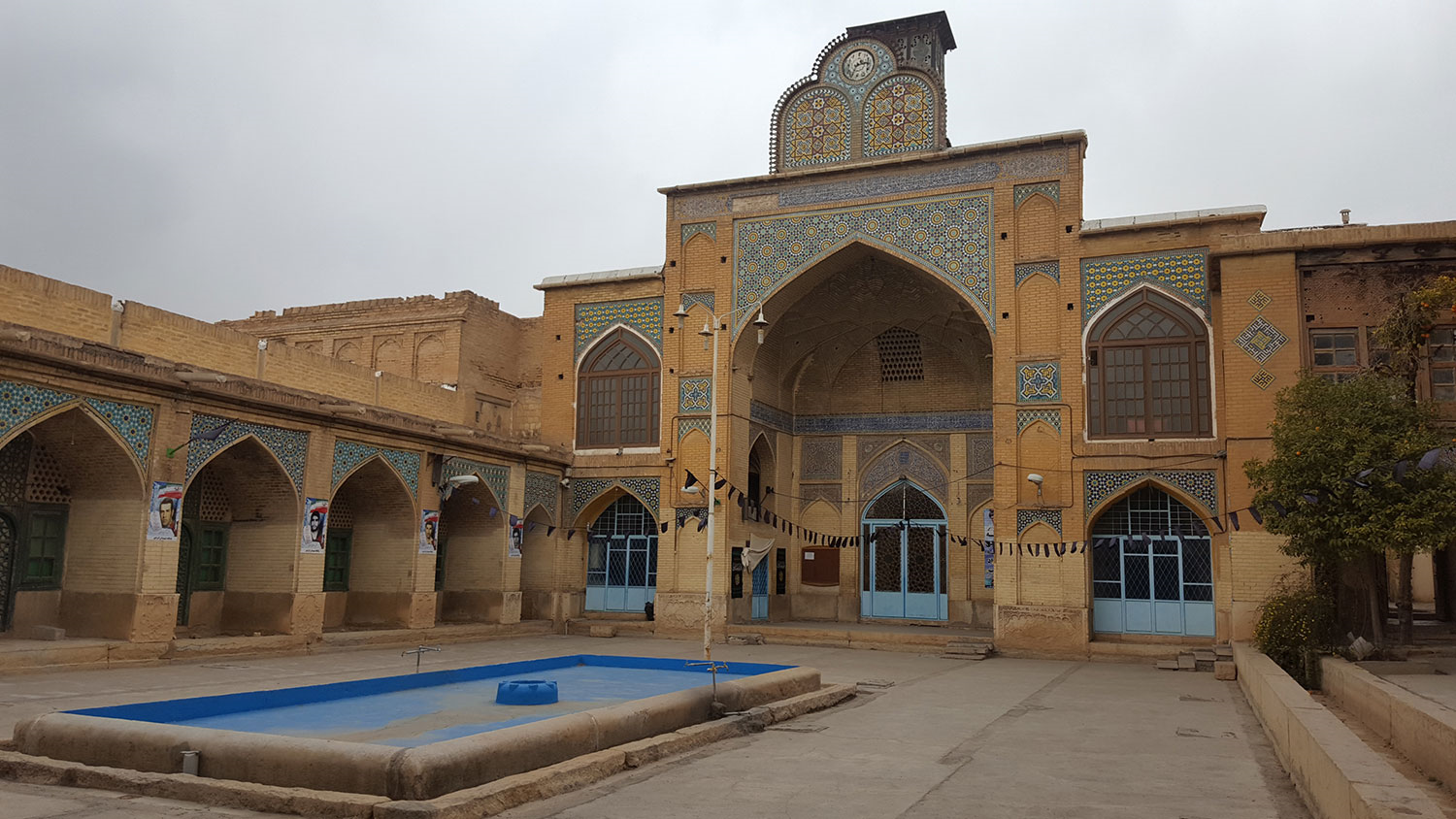
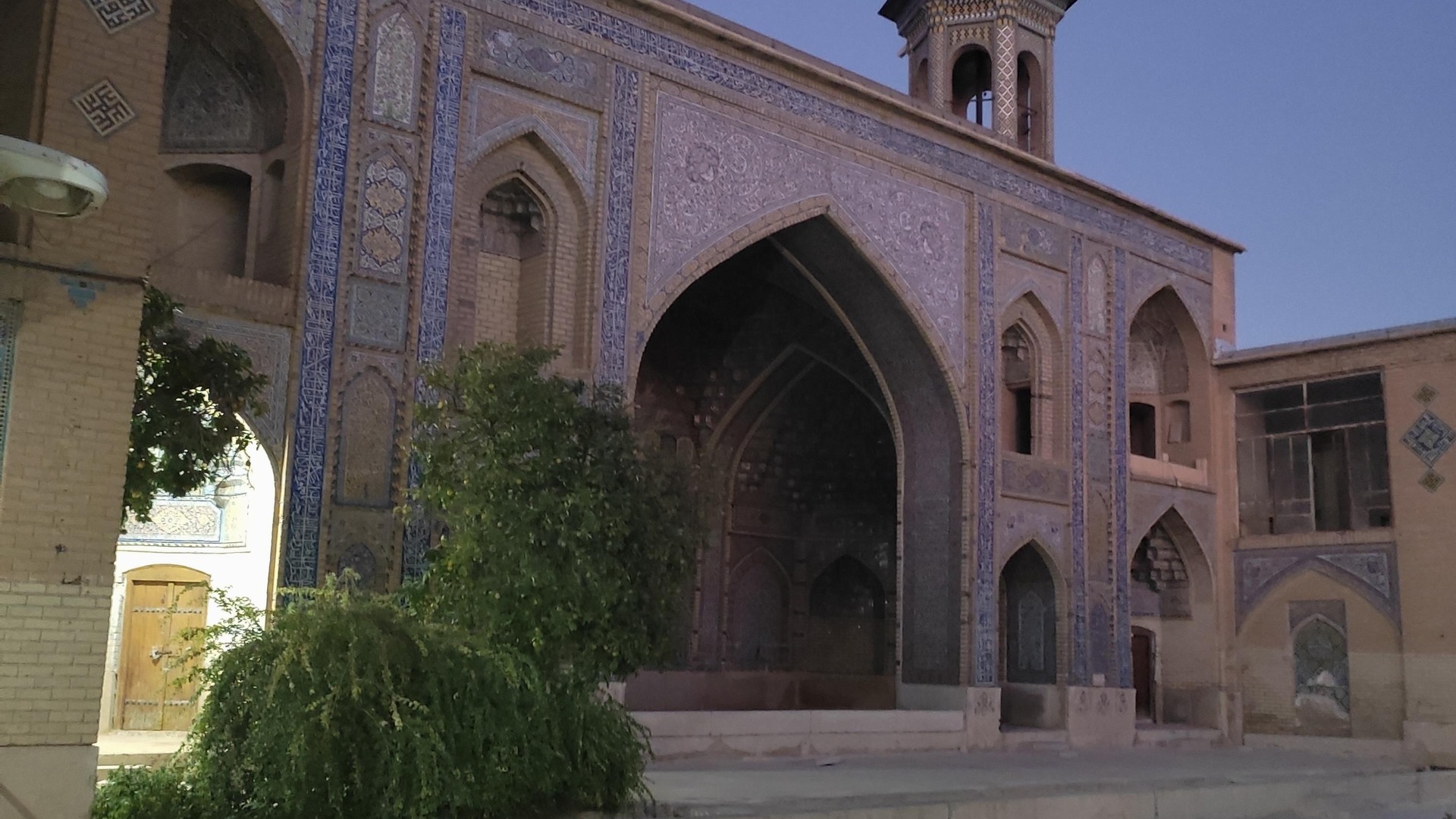
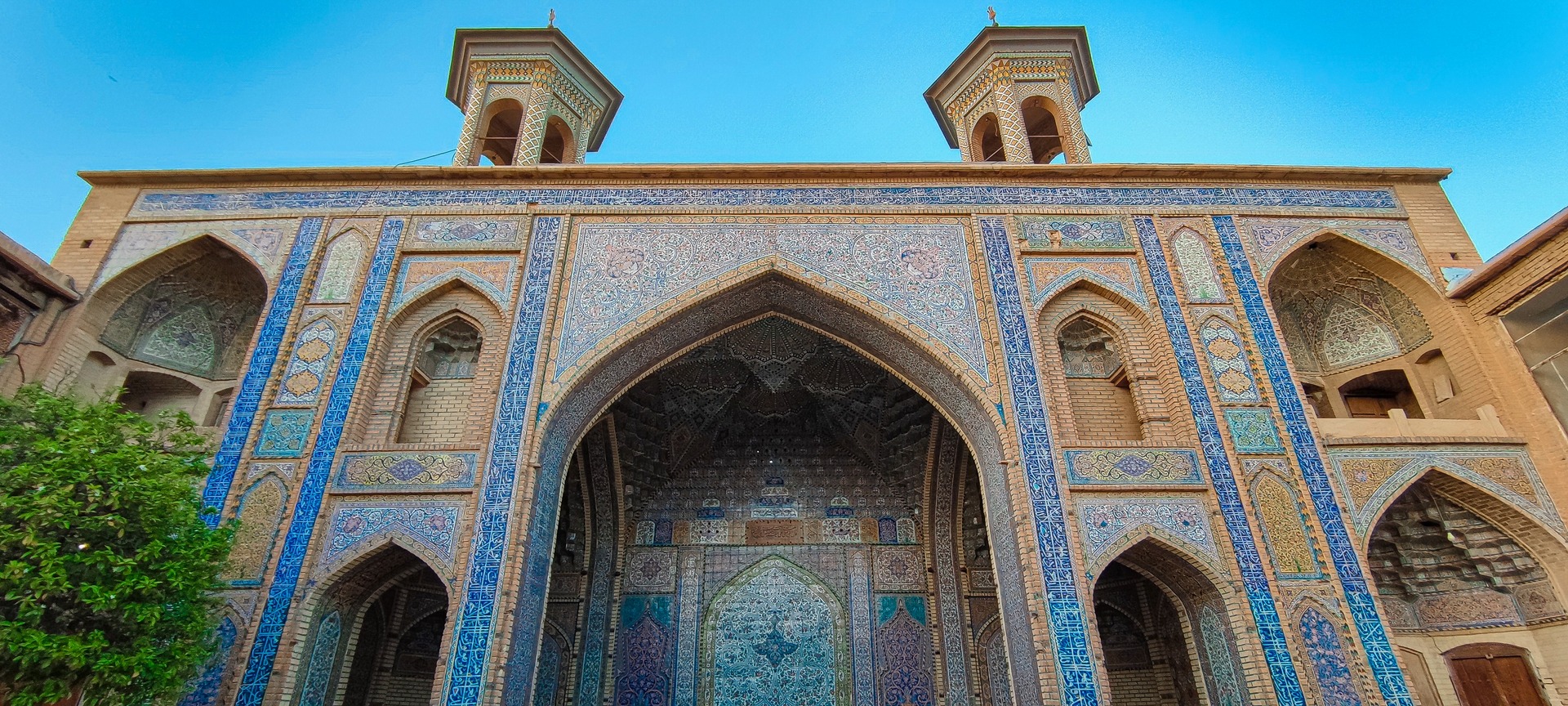




Caravanserais of Shiraz
With a history of more than 2500, the ancient city of Shiraz houses many interesting historical sites among which mention can be made of its caravanserais.
These caravanserais were usually built in a rectangular shape with a large gate, and their middle courtyard was surrounded by rooms of the same shape. Many of these caravanserais had mini-towers that were used to watch the connecting route and light fires to help guide on the way caravans.
Some of the most important caravanserais of Shiraz are:
Bid-e Zard (Yellow Willow) Caravanserai
This caravanserai is located 25 kilometers west of Shiraz, on the way to Firouzabad, and near the village of the same name (Bid-e Zard). Stone and plaster are the main construction materials of this building. Carved stones have been used for decorating the exterior of the caravanserai, which was built in a square shape and on two floors during the Qajar era (19th century). Passengers could reach the upper floor and the roof of the building by using the staircase on the right side of the entrance.
Apart from the rooms that were built for accommodating passengers, there are also three large rooms in this caravanserai that were used as warehouses for goods. Two empty frames can be seen on both sides of the entrance, in which the inscriptions of the building were installed, but today there are no traces of these inscriptions.
Bajgah Caravanserai
Located on the way from Shiraz to Isfahan, this caravanserai, which is about 18 kilometers from Shiraz, was generally a resting place for travelers from Isfahan. Although the entrance and vestibule of the caravanserai have been destroyed over time, parts of the original building, including rooms, entrance doors, a central porch with a domed roof, brick niches, columns, and chambers are still standing. This caravanserai was also built during the Qajar era.
Khan Zanian Caravanserai
Being the biggest caravanserai in Shiraz, this site, which is 40 km away from the city, was built in the Qajar era. The existence of such a large caravanserai in the city of Shiraz indicates the prosperity of business in it and the passage of many caravans through this city. The large wooden door of the caravanserai opens to a wide courtyard surrounded by rooms and chambers that accommodated caravans. Despite the fact that the caravanserai has had many rooms, the number of staircases to the roof shows that the roof was also probably used as a resting place by some travelers.
Divdan Caravanserai
The dome-shaped roofs of this caravanserai have distinguished it from similar buildings. Divdan is located 100 km southeast of Shiraz and on the way to Kerman. This caravanserai is also square-shaped and has had two floors, the upper floor of which is almost completely destroyed.
Abgarm Caravanserai of Cavar County
Built during the Safavid era (16th century), this caravanserai, which is located near a village called Kavar, is the oldest in the Fars province. Although most of this caravanserai has disappeared, some remains of it are still standing.
It seems that this caravanserai was one of the caravanserais that the Safavid king Shah Abbas I (reigned from 966 to 1007 AD) had established to ensure the safety of the routes and to promote trade.
| Name | Caravanserais of Shiraz |
| Country | Iran |
| State | Fars |
| City | Shiraz |
| Type | Historical |
| Registration | National |
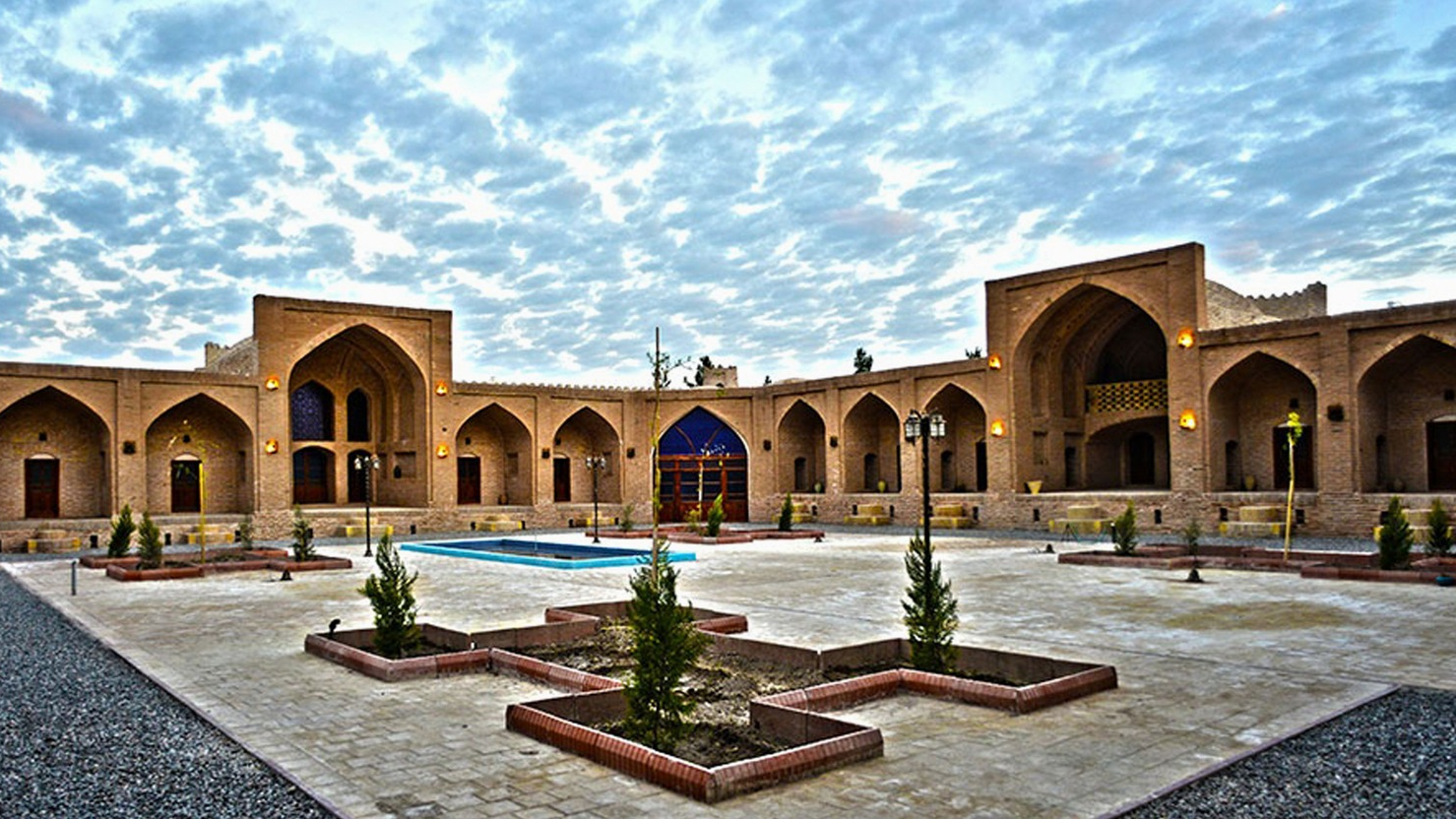
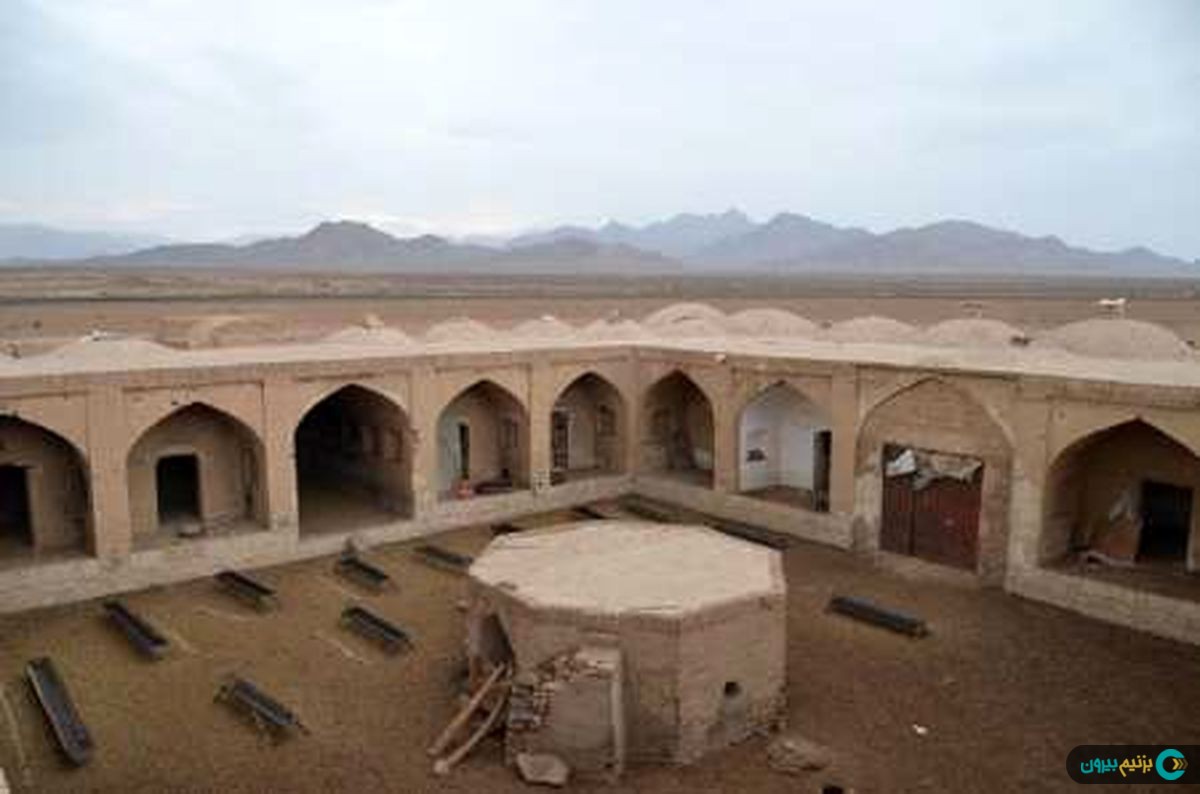
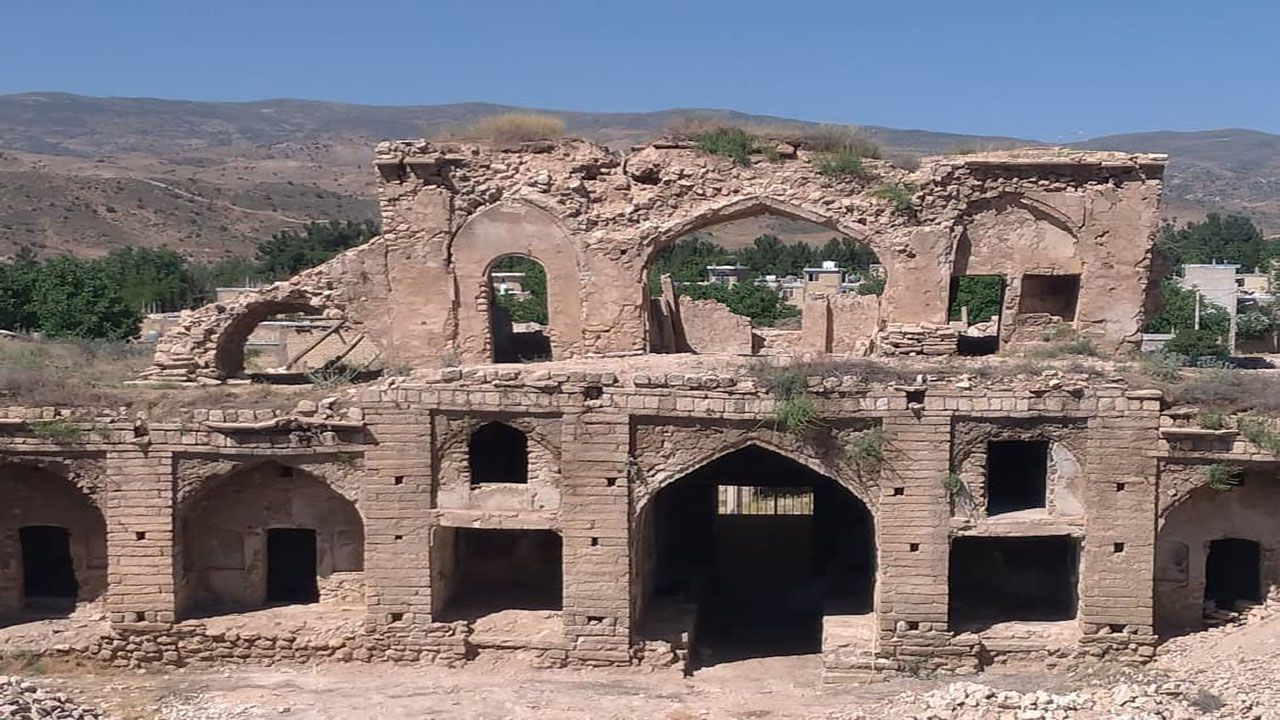
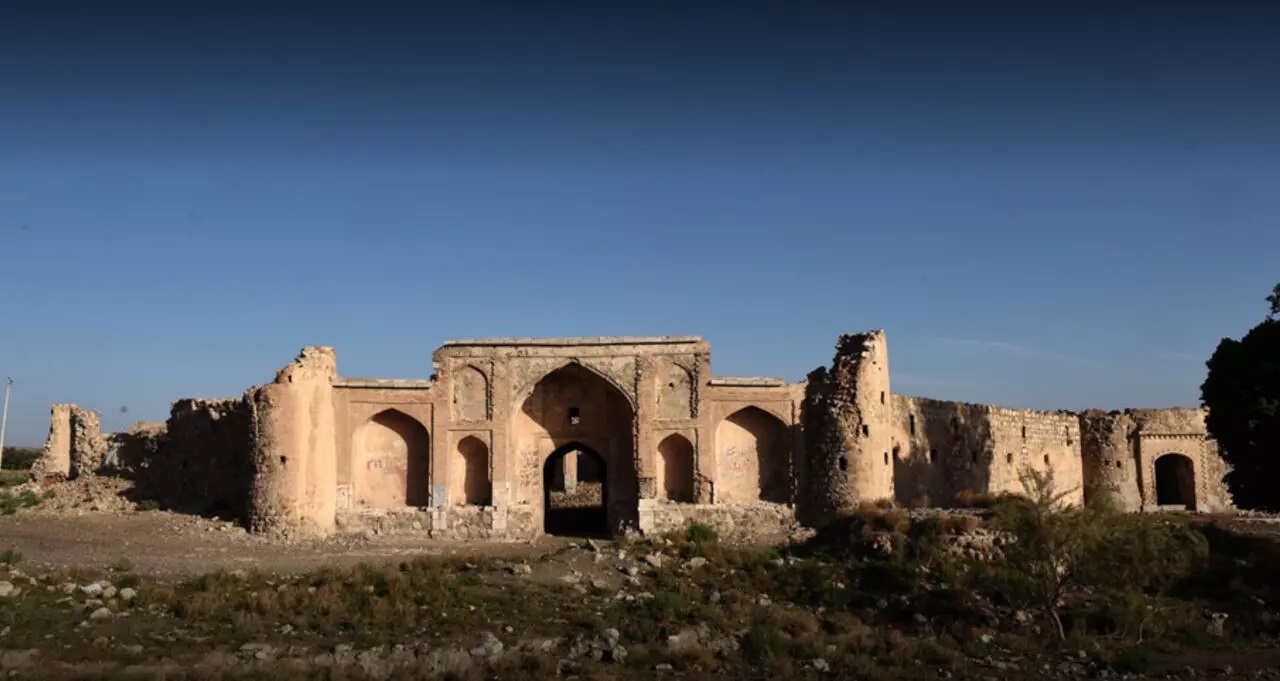





Hafez Avenue of Shiraz
The Hafeziyeh Complex (Tomb of Hafez, one of the greatest Persian-speaking Iranian poets) and the historical sites of Hafez Avenue of Shiraz make this area an attractive place for taking a half-day in Shiraz.
This part of the city of Shiraz had an extraordinary beauty even during the Safavid era (16th century AD), to the extent that Sharon and Tavernier, the French travelers who had visited Shiraz in the early 17th century, have pointed out the beauty of this street, which extended from “Tang-e Allaho-Akbar to the mausoleum of Ali ibn Hamza.
Begin Your Visit from the Qur’an Gate
Qur’an gate is the only one of the six old gates of Shiraz city that has survived and is standing in the Tang-e Allaho-Akbar. The initial structure of this gate was built in 950 AD, during the rule of Daylamites. Towards the end of the 18th century, Karim Khan Zand had this gate restored and ordered two volumes of the Quran to be placed in the upper chambers so that travelers could pass under it. Iranians believe that if they pass under the Qur’an at the beginning of their journey, their journey will be safe. Although the gate restored by Karim Khan was destroyed, the people of Shiraz got it restructured in 1949, The new gate was built with tall arches and large openings to allow trucks and large cars to pass through it. The tomb of Khwaju Kermani, a famous Persian poet and Sufi mystic, is close to the Qur’an gate and can be accessed by climbing a staircase.
Haft-tanan Garden Museum
This garden museum is located at the foothill of Mount “Chehel Maqam” and in the north of Hafeziyeh. The history of this garden dates back to the pre-Zand era, but the mansion in it was built during Karim Khan’s era (late 18th century). Because housing the graves of seven great mystics the garden is called “Haft-tanan". Karim Khan Zand has placed a large stone on each of these graves without any writing on them.
There is a hall in the garden, that is mounted on two large symmetrical columns and decorated with beautiful paintings on its upper niches. These paintings are masterpieces of the Zand era.
The “Chehel Maqam” building containing 40 gravestones is located below the Haft-tanan building. According to a legend told by local people, Haft-tanan were seven dervishes who had made a covenant with “Chehel Maqam” people to be buried in the same place.
Hafeziyeh (Tomb of Hafez)
Hafez was a great Iranian poet of the 14th century AD, who was born in Shiraz and passed away in the same city. It was 65 years after his death that a tomb was built over his burial place for the first time. Later, at the end of the 18th century, Karim Khan Zand built a mausoleum with eight pillars and a copper roof and placed a marble stone on his grave, which is 270 cm long, 80 cm wide, and 40 cm high. Hafeziyeh is located in a beautiful garden, which was designed by Andre Godard, a French designer, in 1935.
Shiraz National Garden
After visiting the tomb of Hafez, it is time to visit the Shiraz National Garden. A garden that was a desert called Mosla and Jafarabad during Hafez’s lifetime in the 14th century AD. The old trees of the National Garden, which presently houses residential and office buildings, can be quite attractive for every tourist. There was a cemetery named “Javanabad” in the south of the garden, during the Qajar era, which extended to the tomb of Ali ibn Hamza. This cemetery is now a part of the garden.
The portal of the national garden is made of three brick arches. There is a square in its center, where four heart-shaped ponds can be seen. A square-shaped stone pillar is built in the middle of these ponds, on which some of Hafez’s poems can be seen.
Jahan Nama Garden
If you take a walk in the direction of the National Garden, you will reach the Jahan Nama Garden after a few minutes. This garden was there a few centuries before the time of Karim Khan came to power and, therefore, is considered the oldest garden in Shiraz. He put a fence around this garden and built a mansion in the middle of it in 1771.
Tomb of Ali ibn Hamzah
At the end of this walk, you can visit the shrine of Ali ibn Hamzah, a descendant of Imam Musa Kazem, the seventh Shiite imam. This tomb was built in the 10th century, by the Daylamite ruler, Adud al-Dawla. Parts of this tomb have been restored several times.
| Name | Hafez Avenue of Shiraz |
| Country | Iran |
| State | Fars |
| City | Shiraz |
| Type | Historical |
| Registration | No registration |
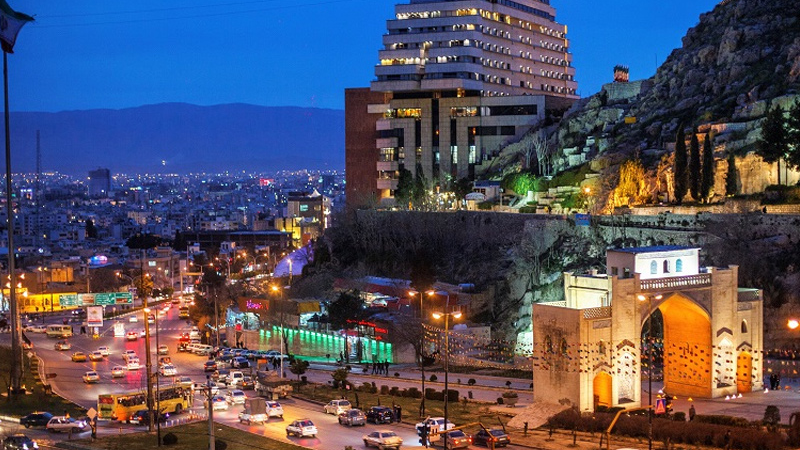
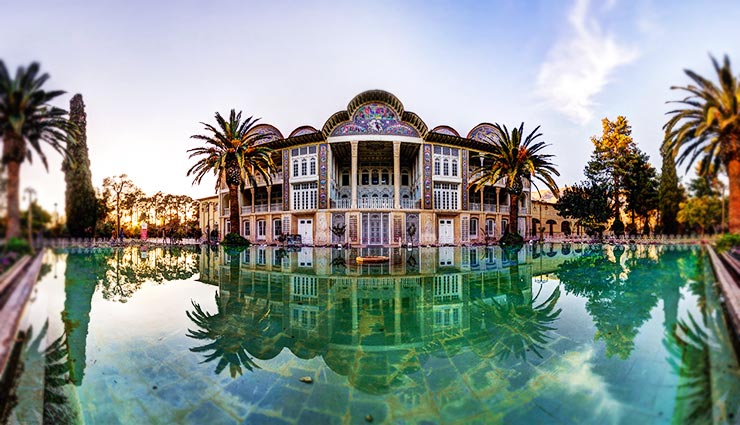
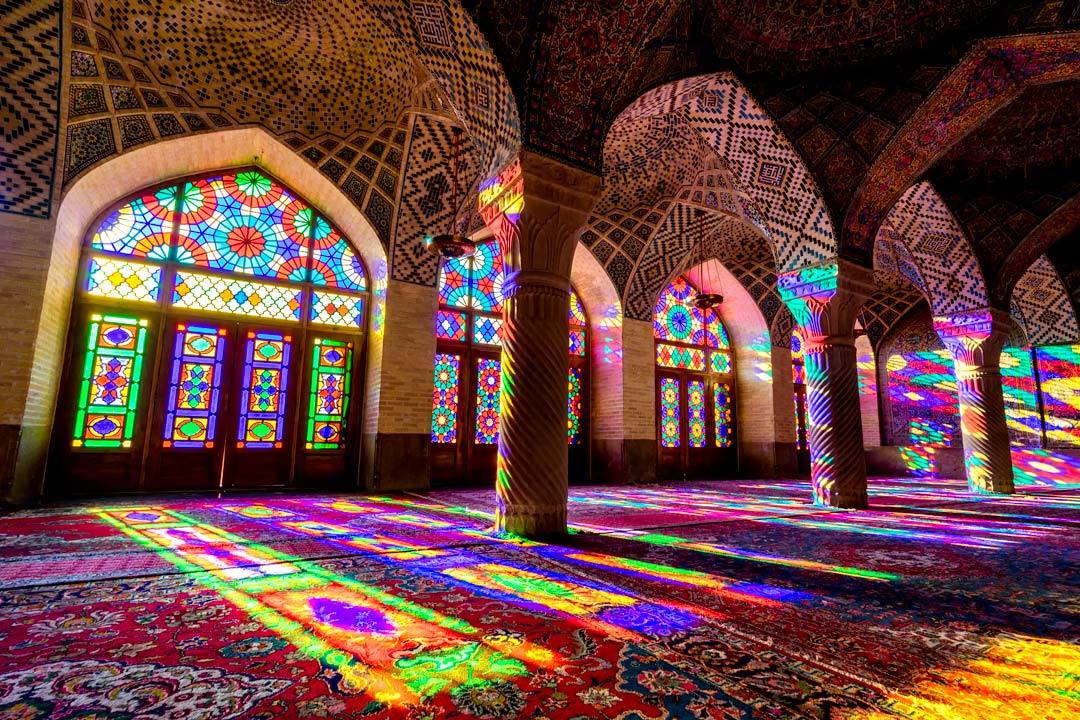
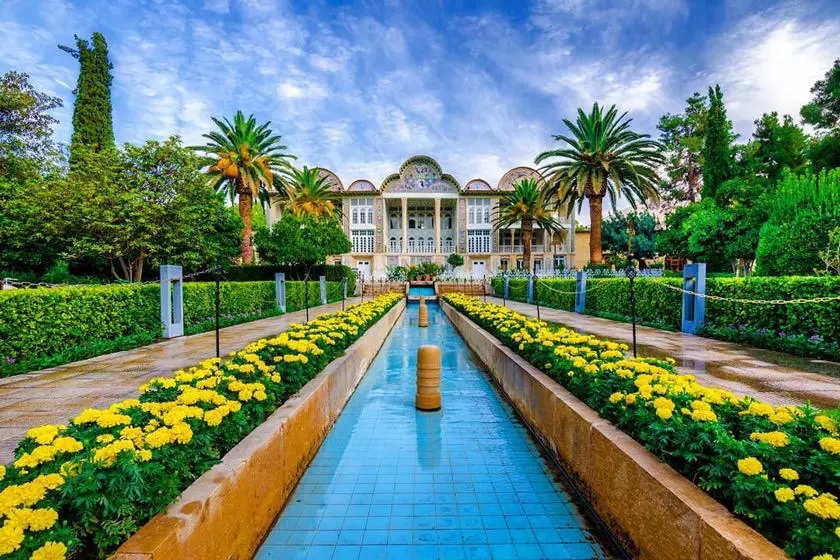
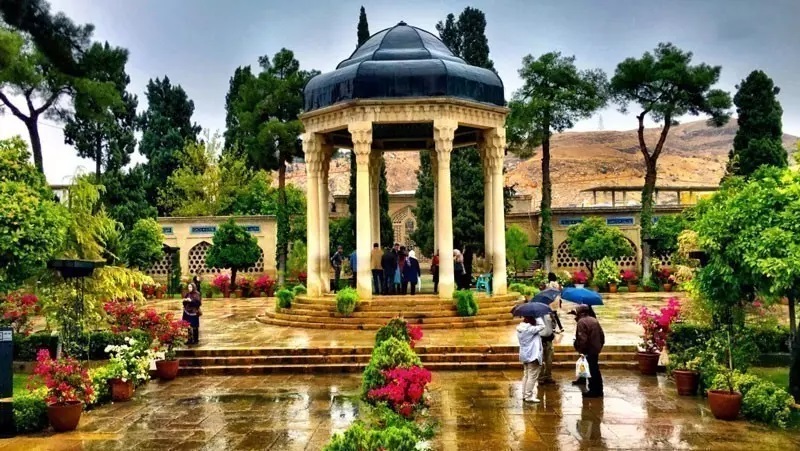





Choose blindless
Red blindless Green blindless Blue blindless Red hard to see Green hard to see Blue hard to see Monochrome Special MonochromeFont size change:
Change word spacing:
Change line height:
Change mouse type:

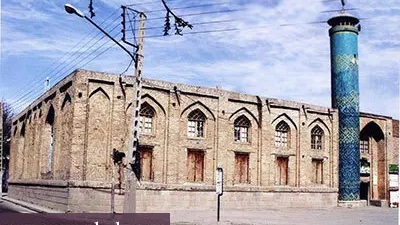
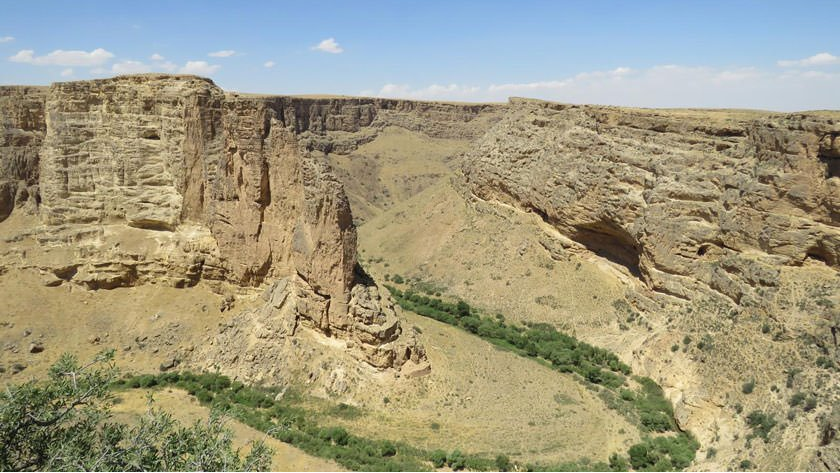

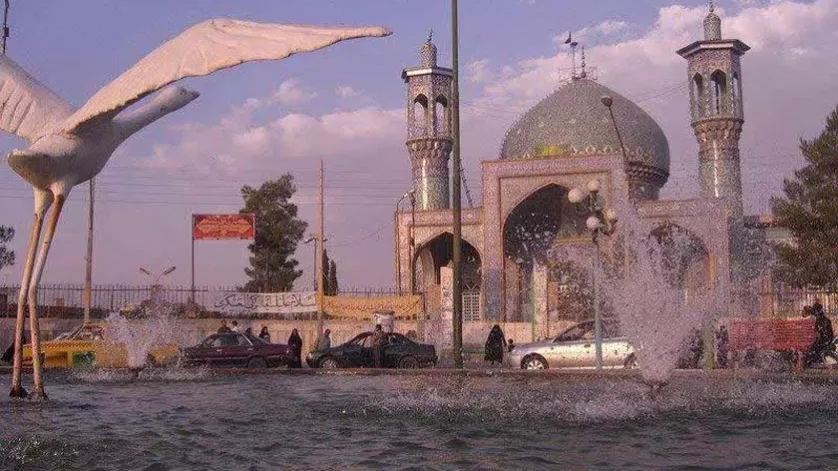
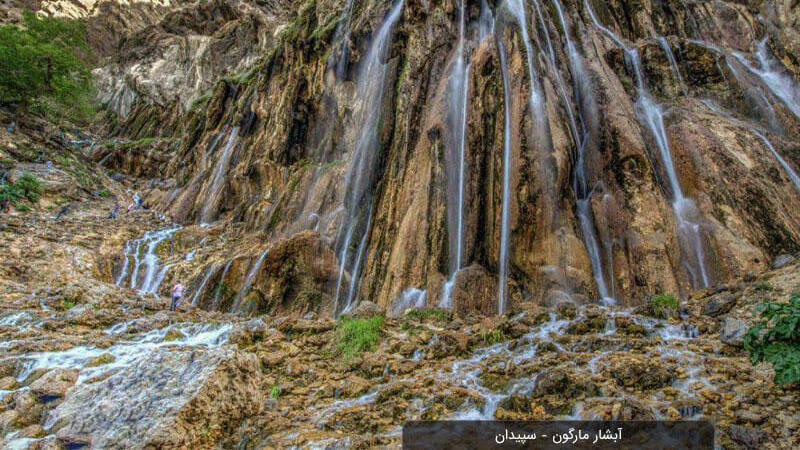
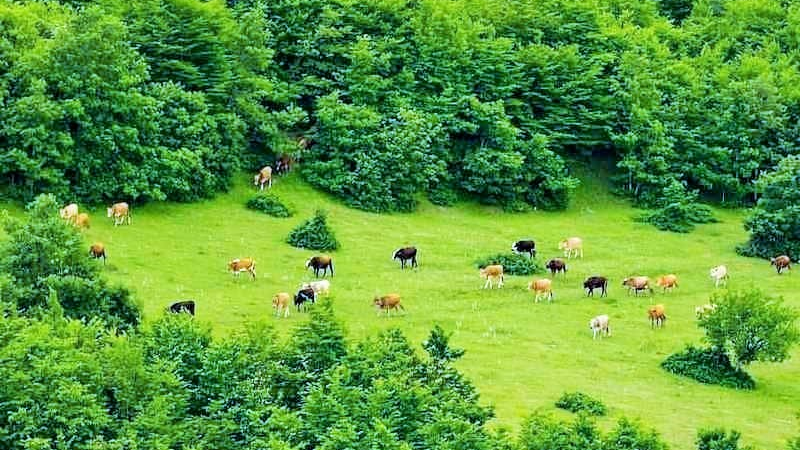
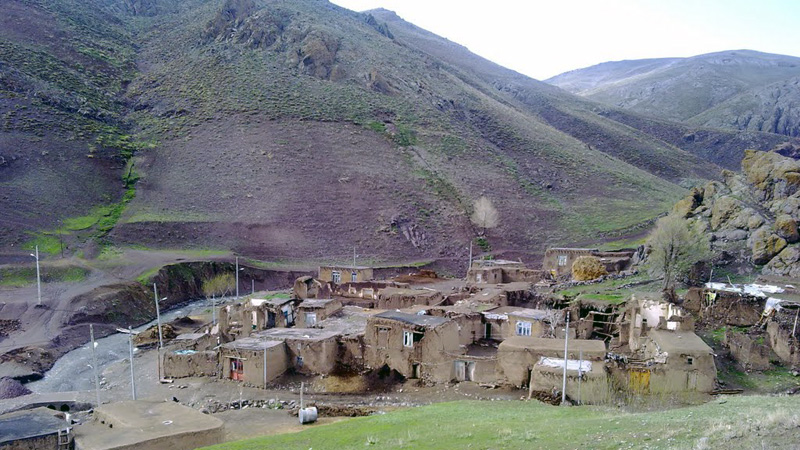
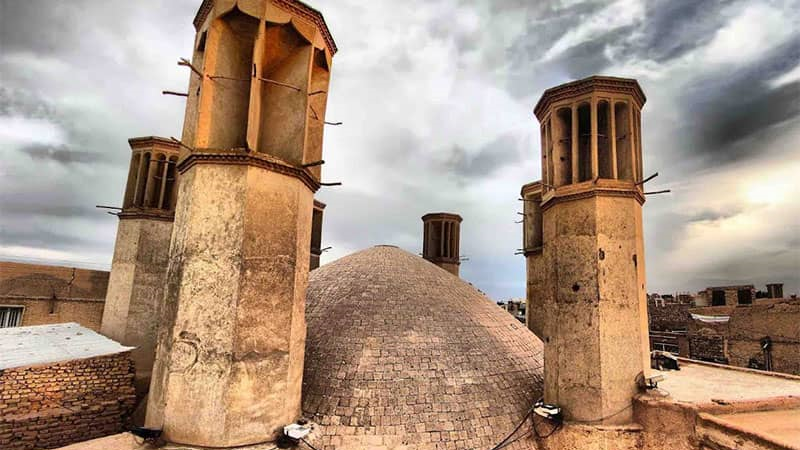

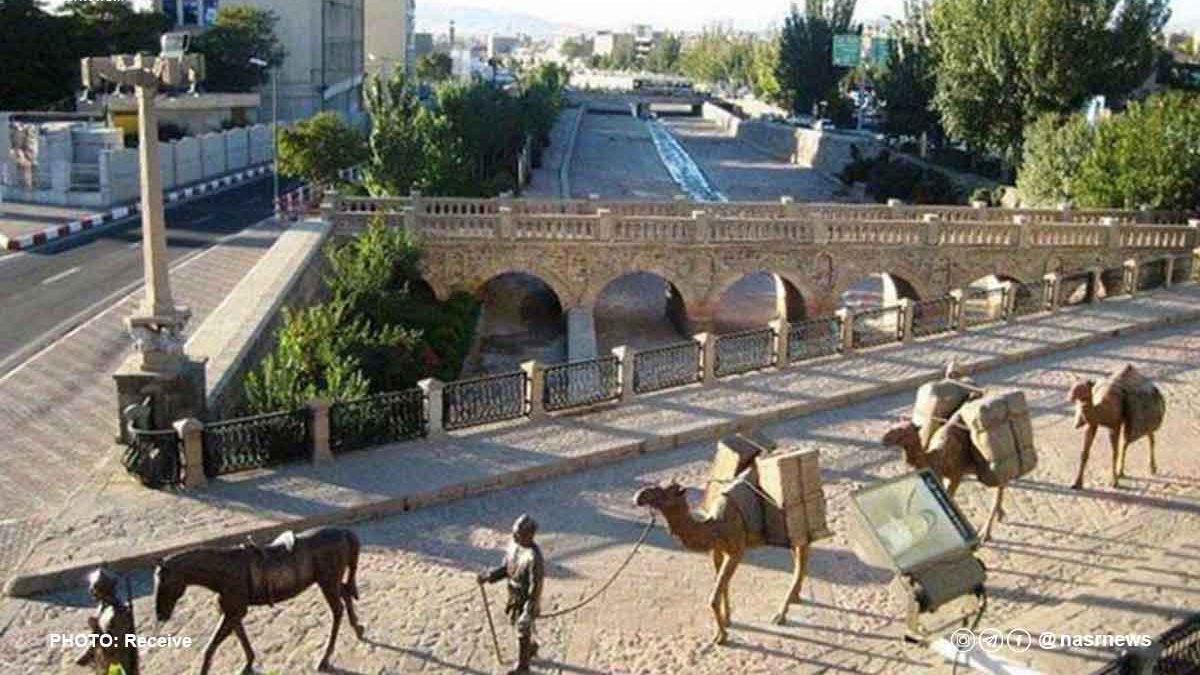
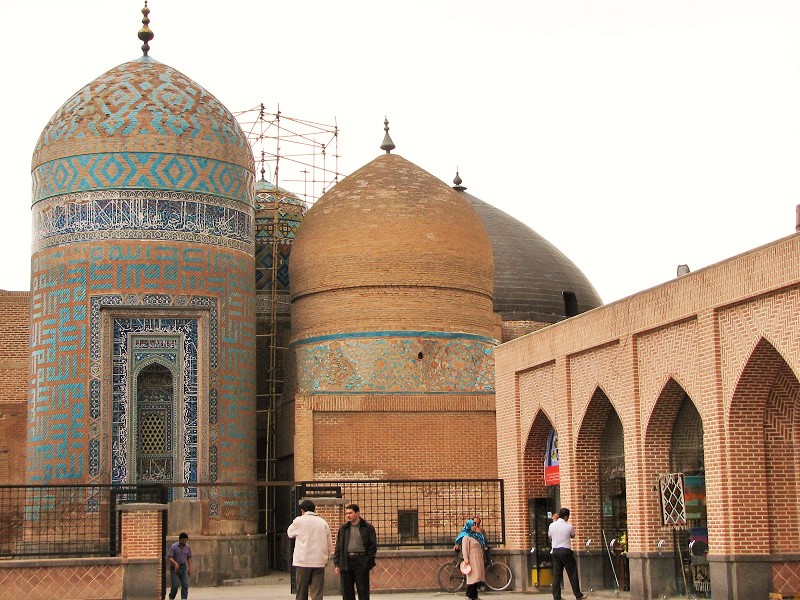
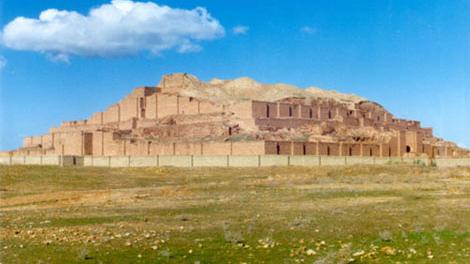
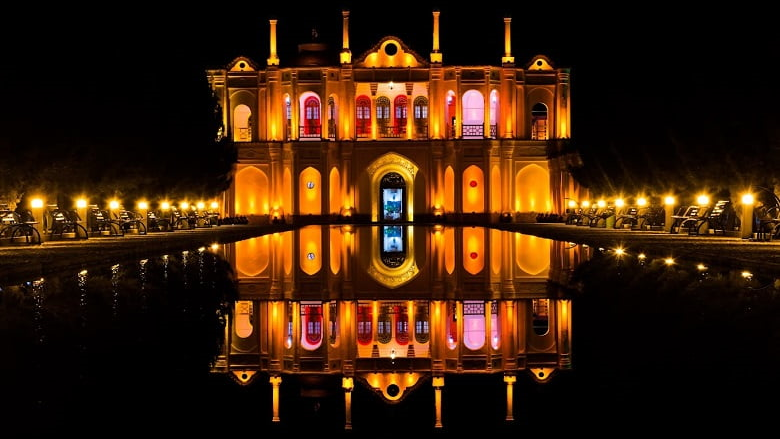
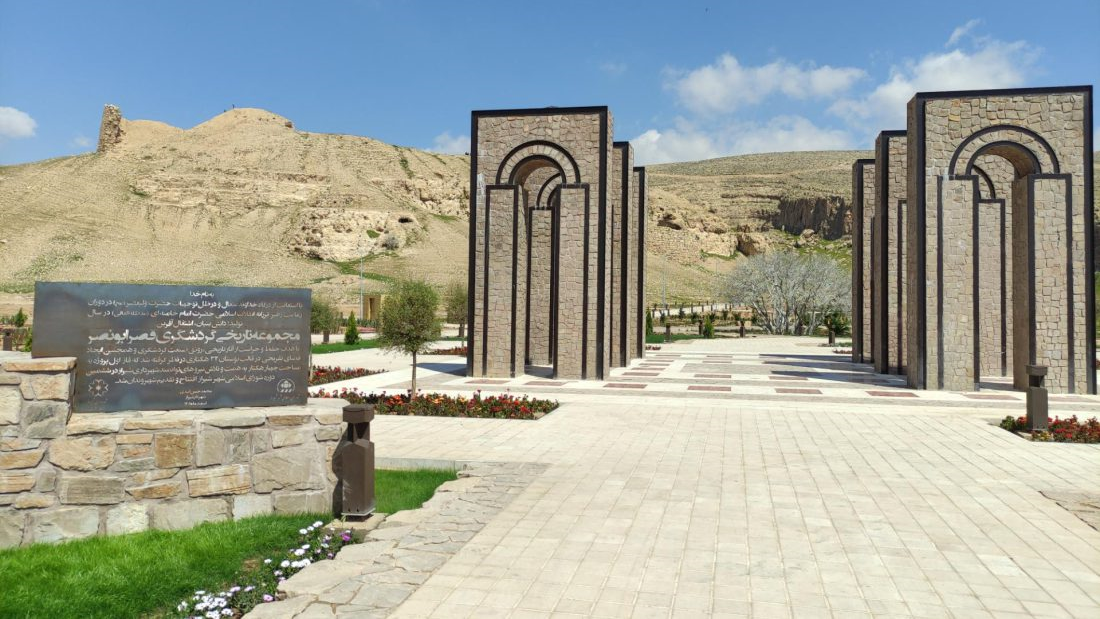
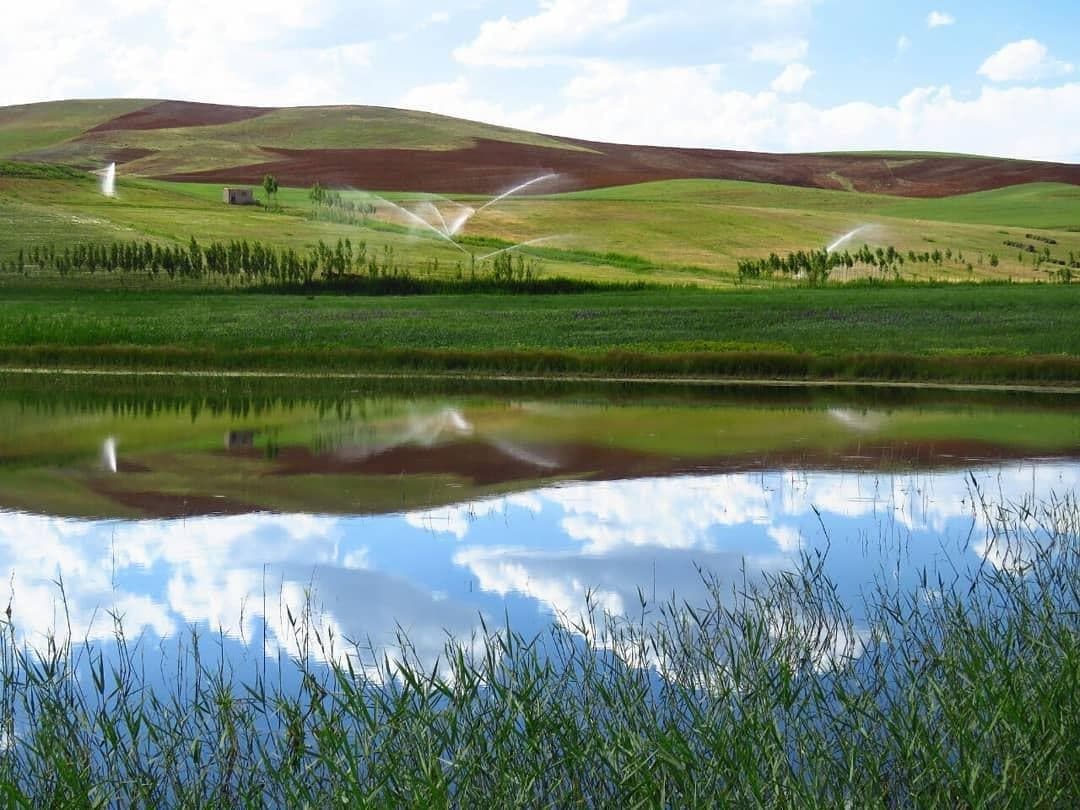
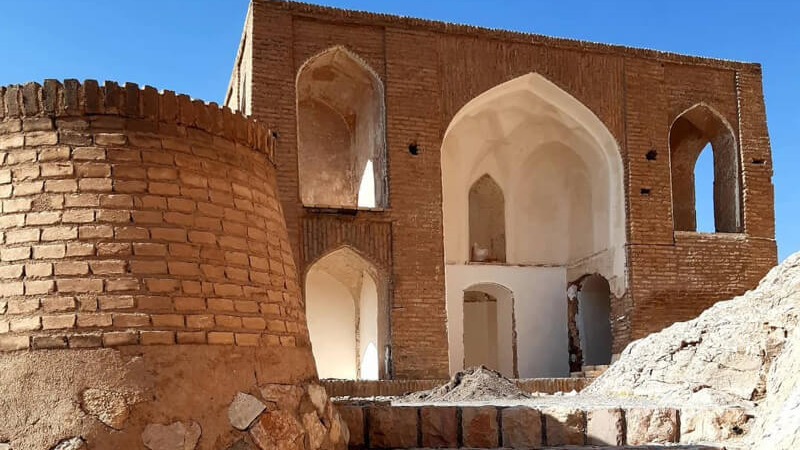
 در جنوب میدان نقش جهان واقع است_crop_1.jpg)
